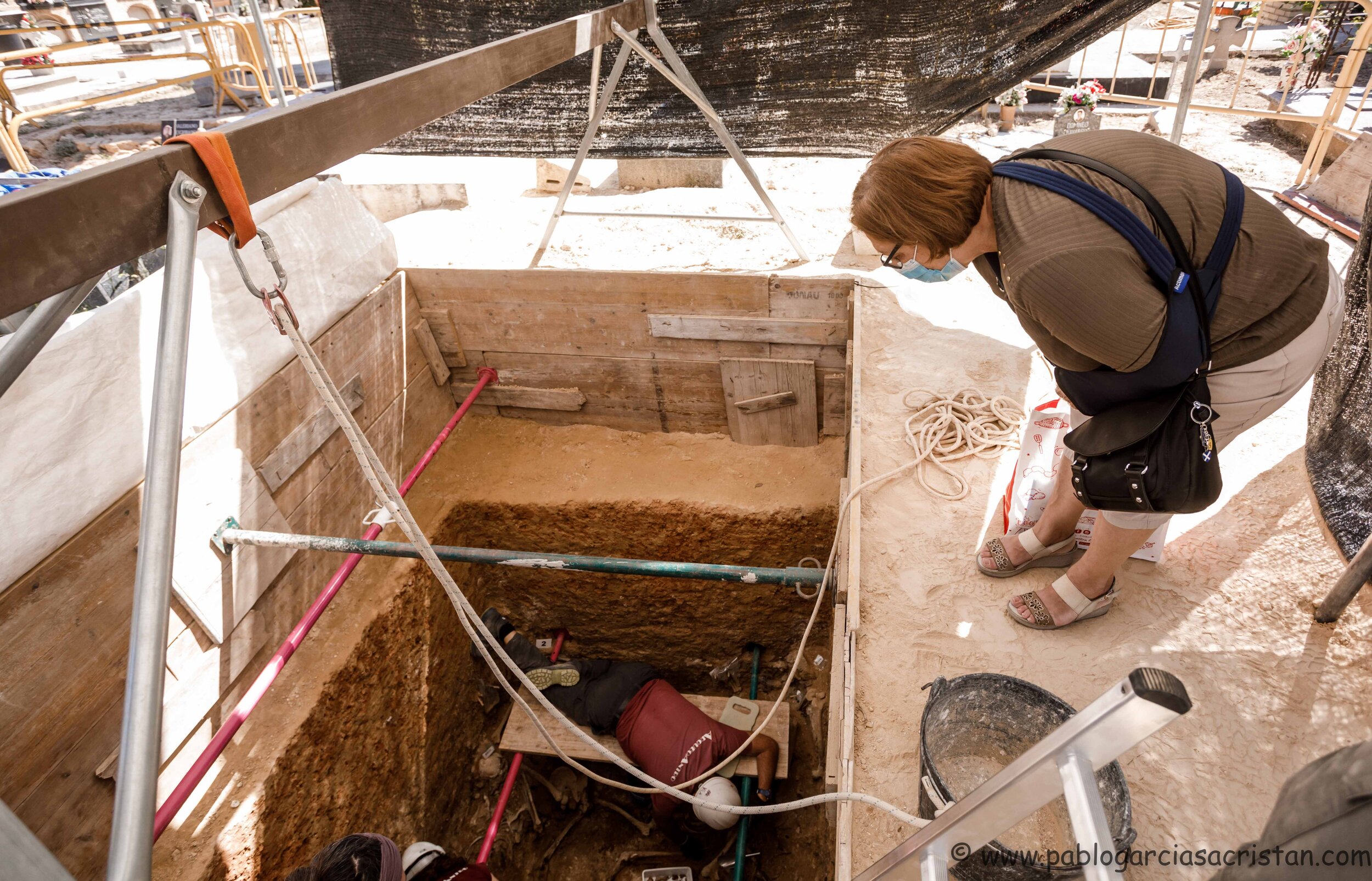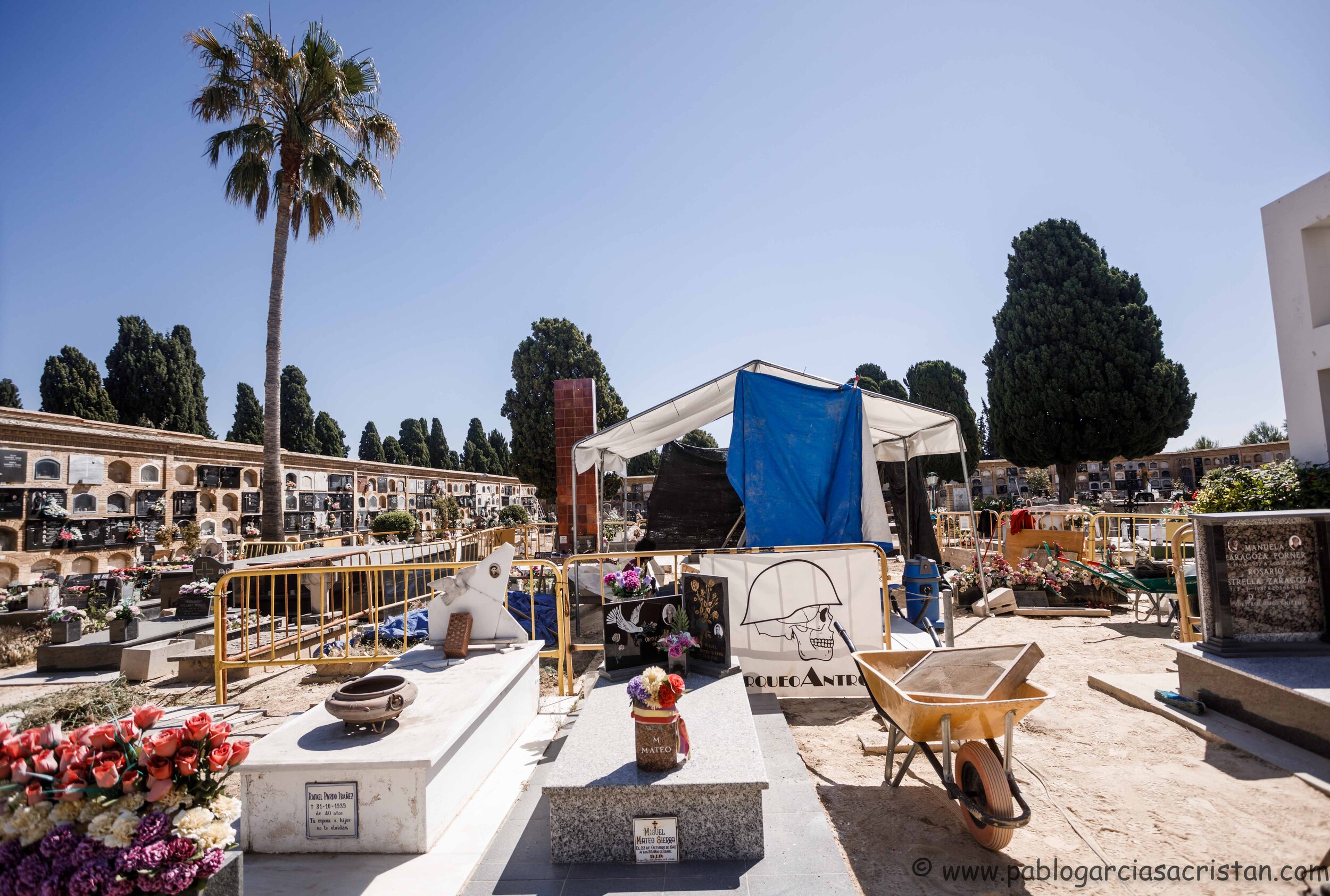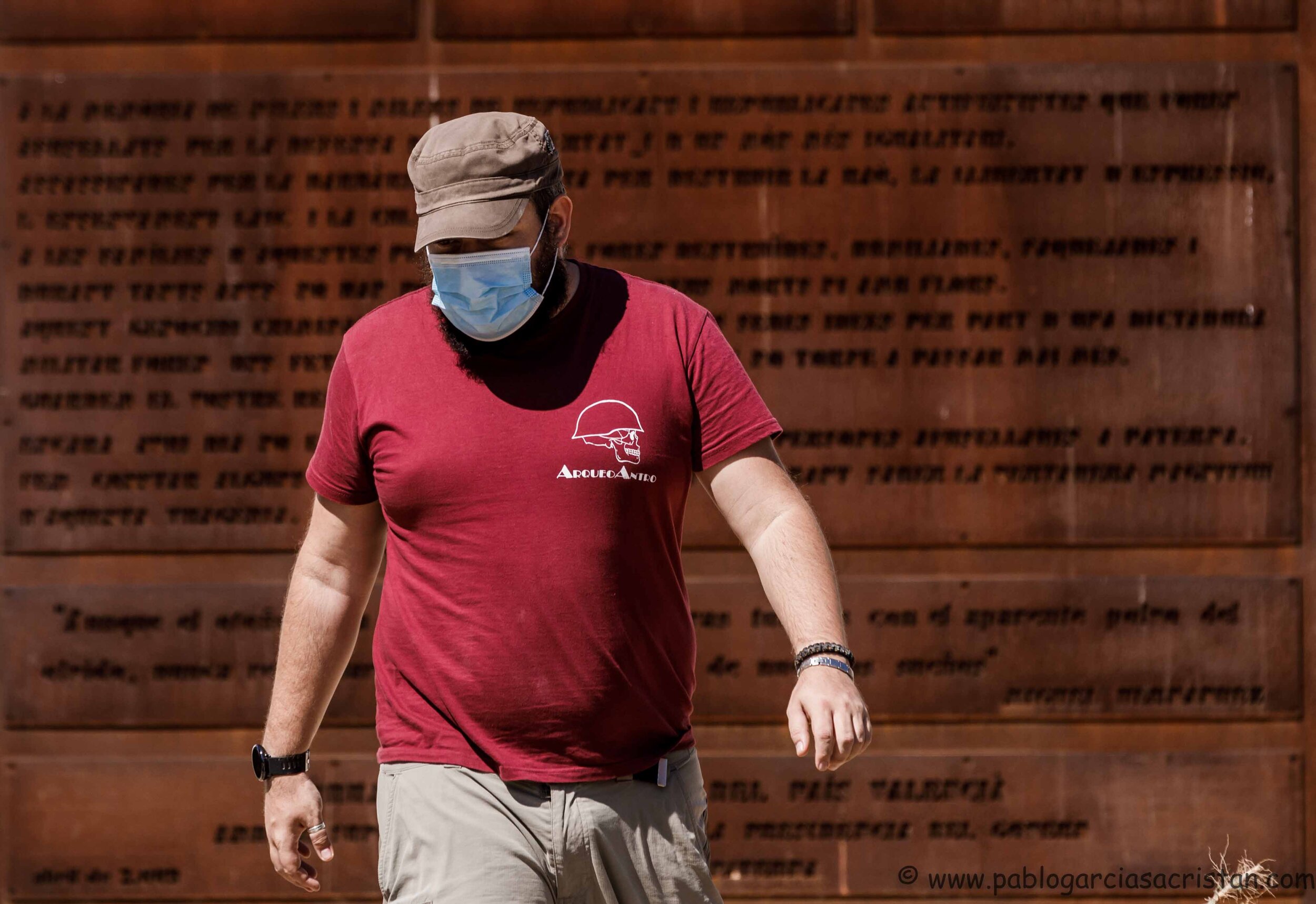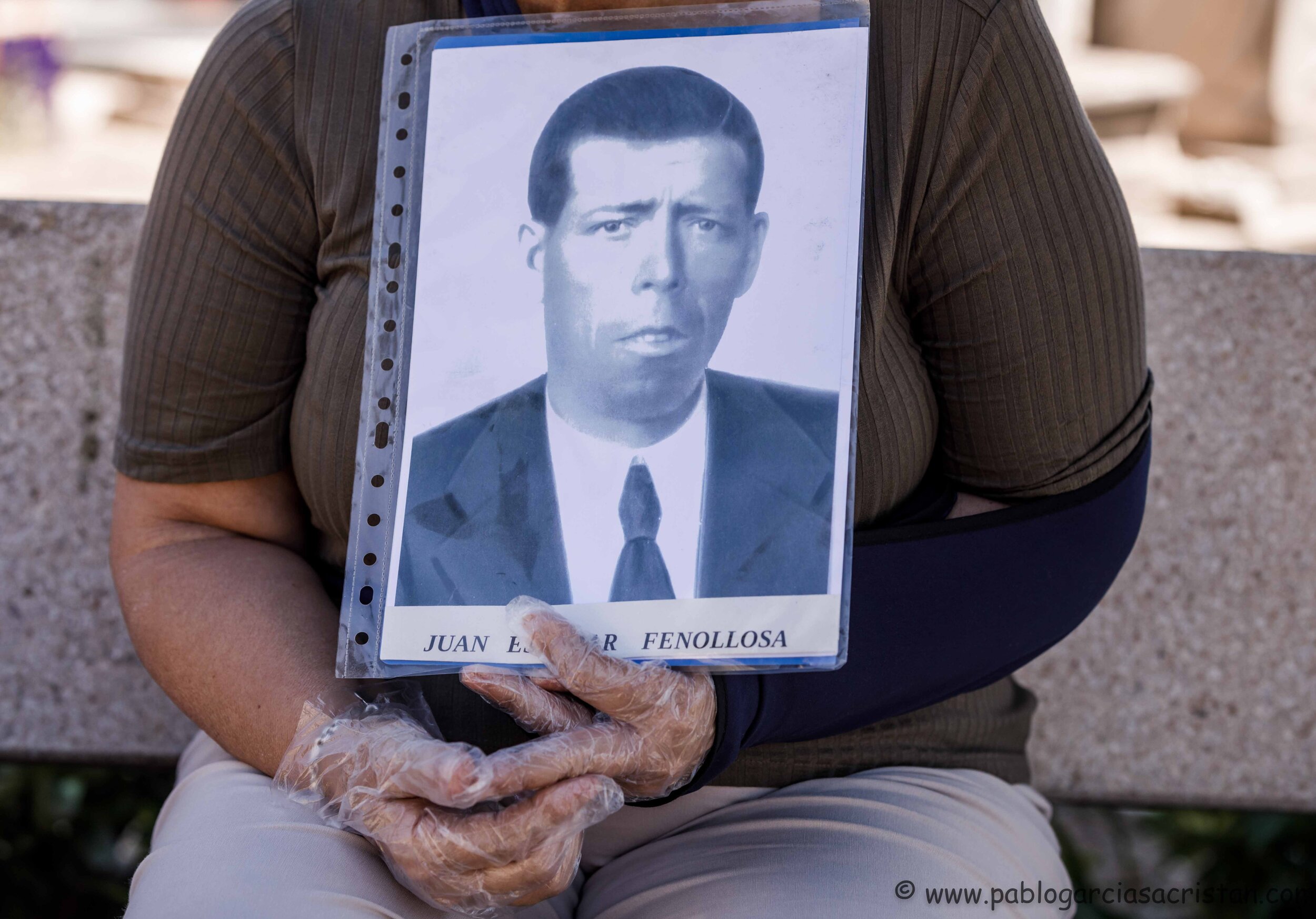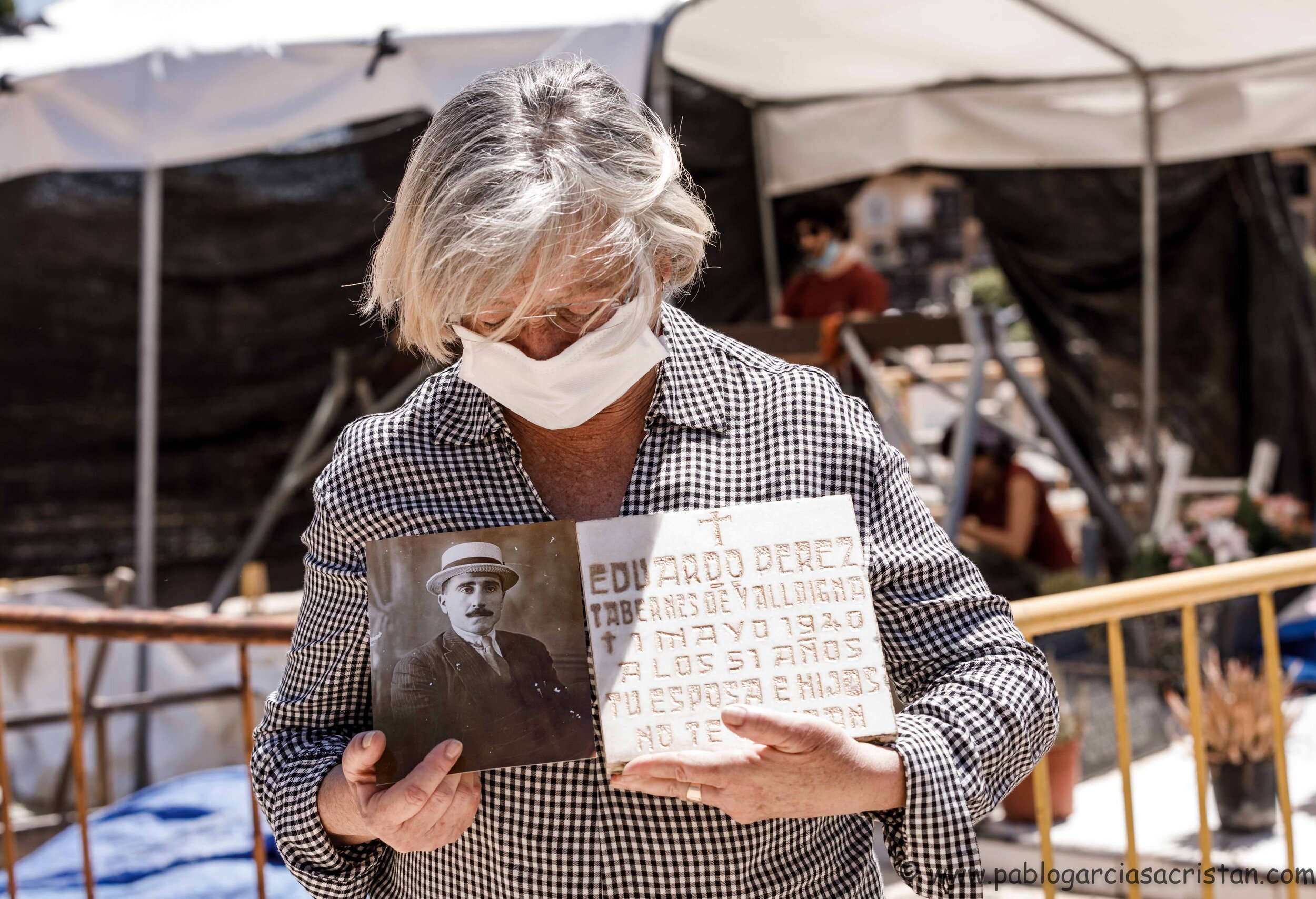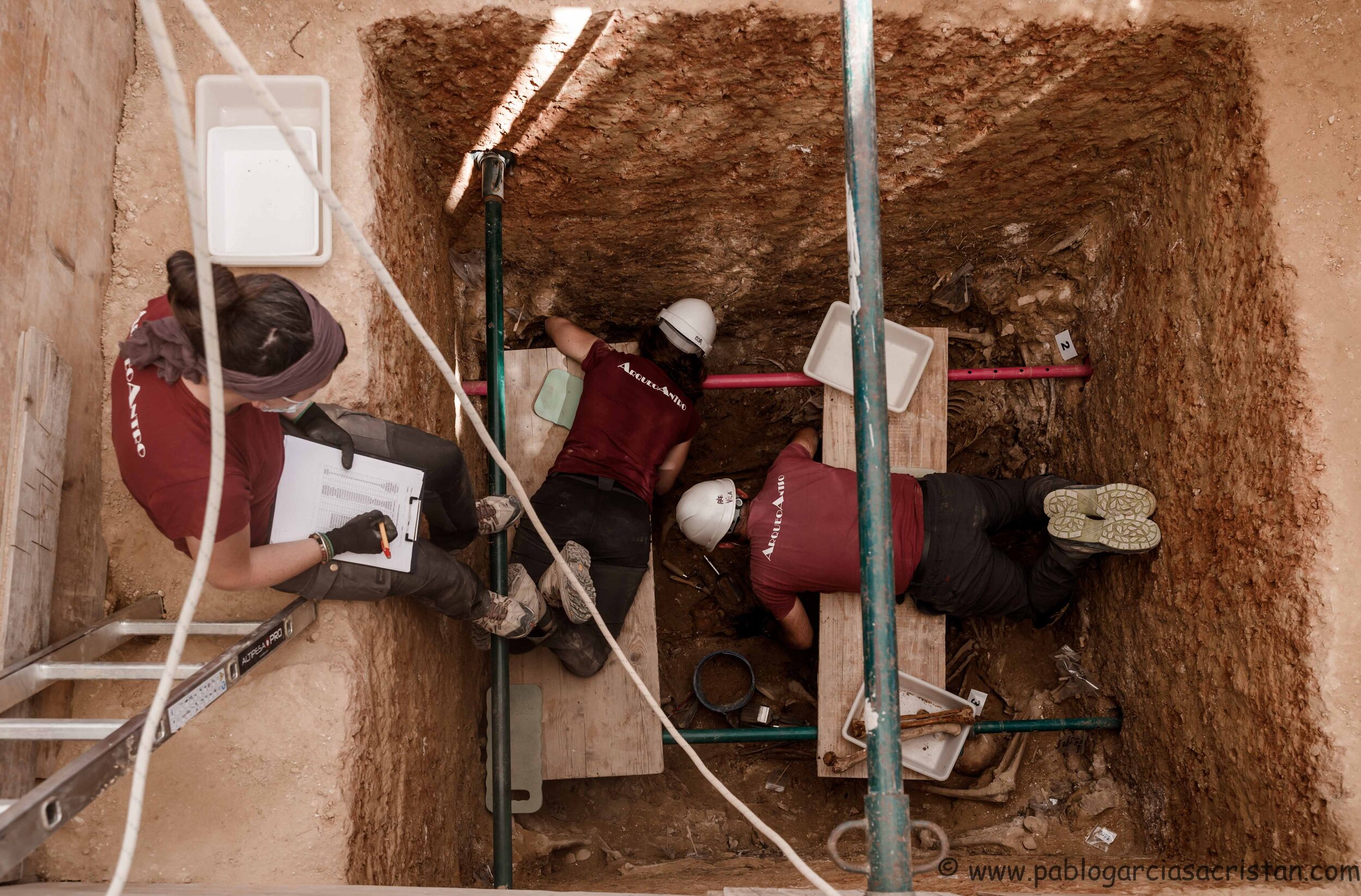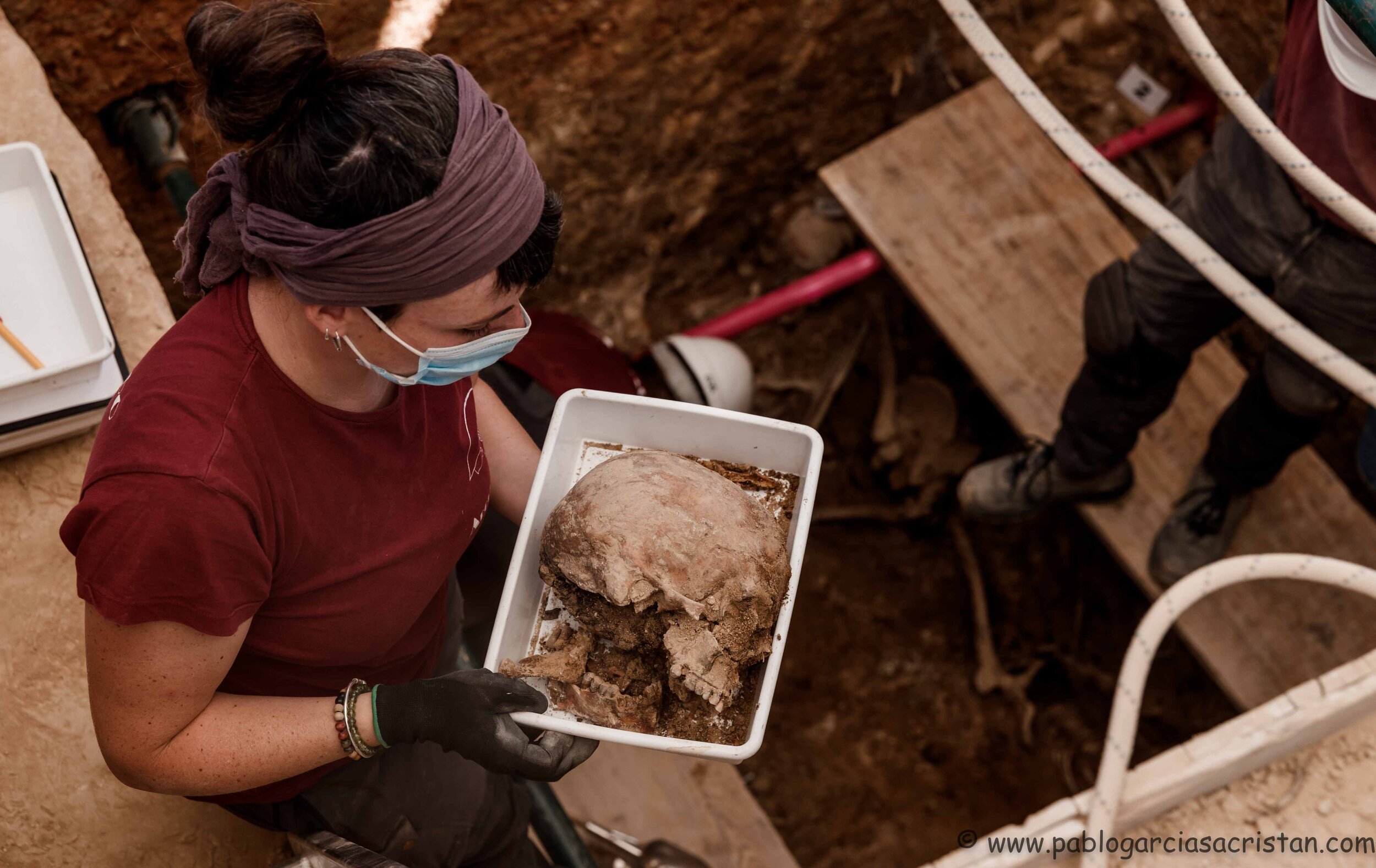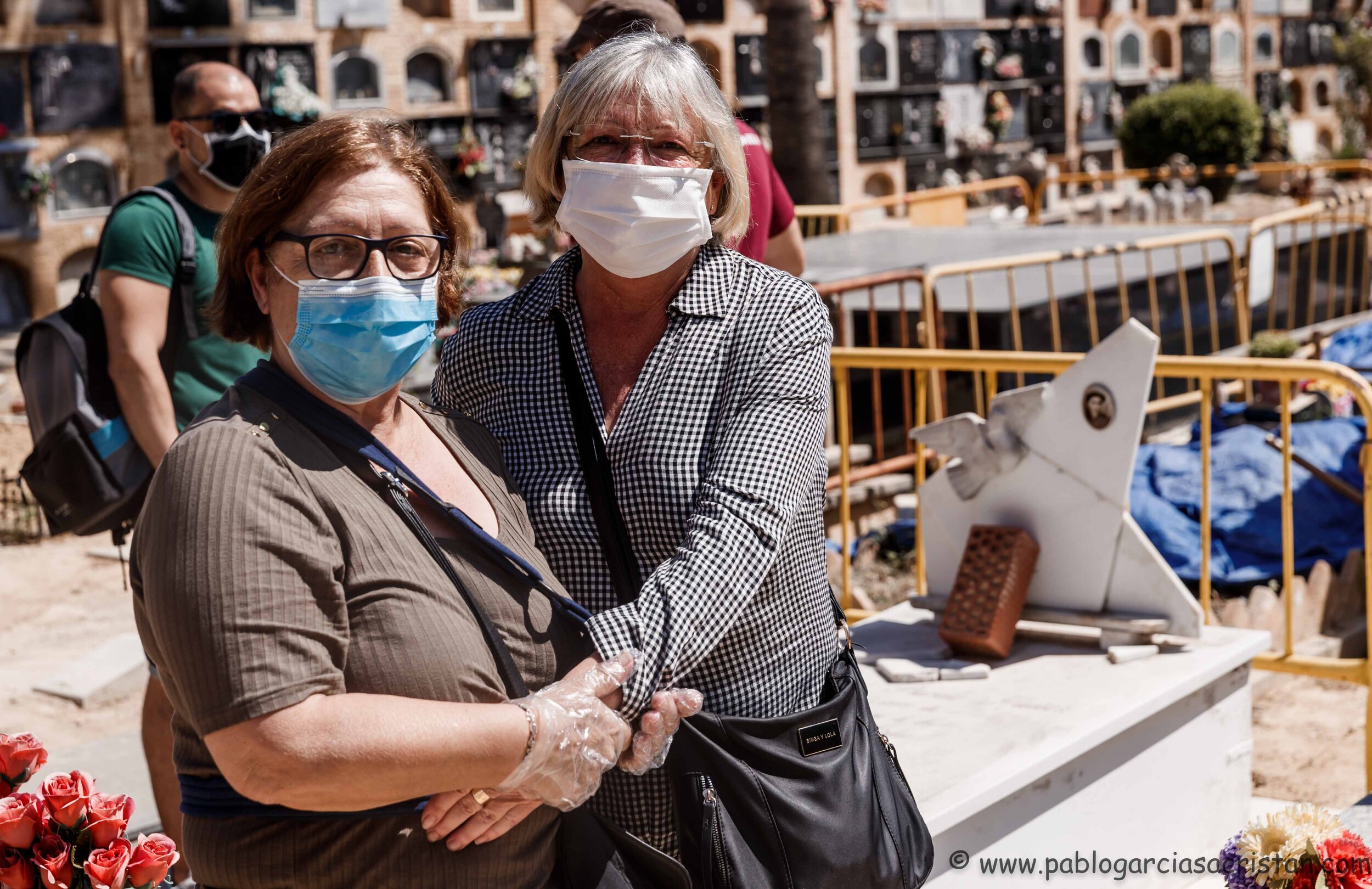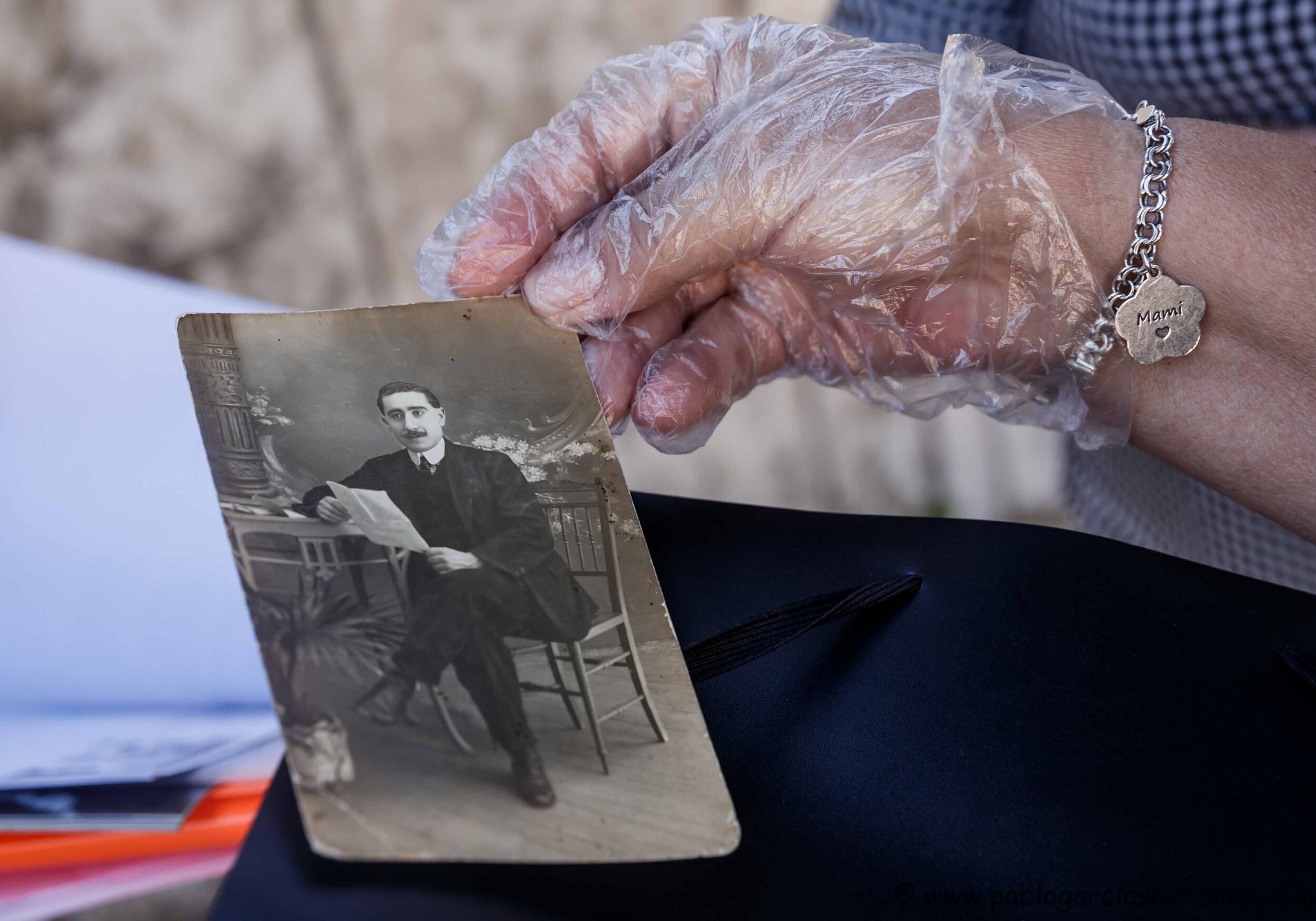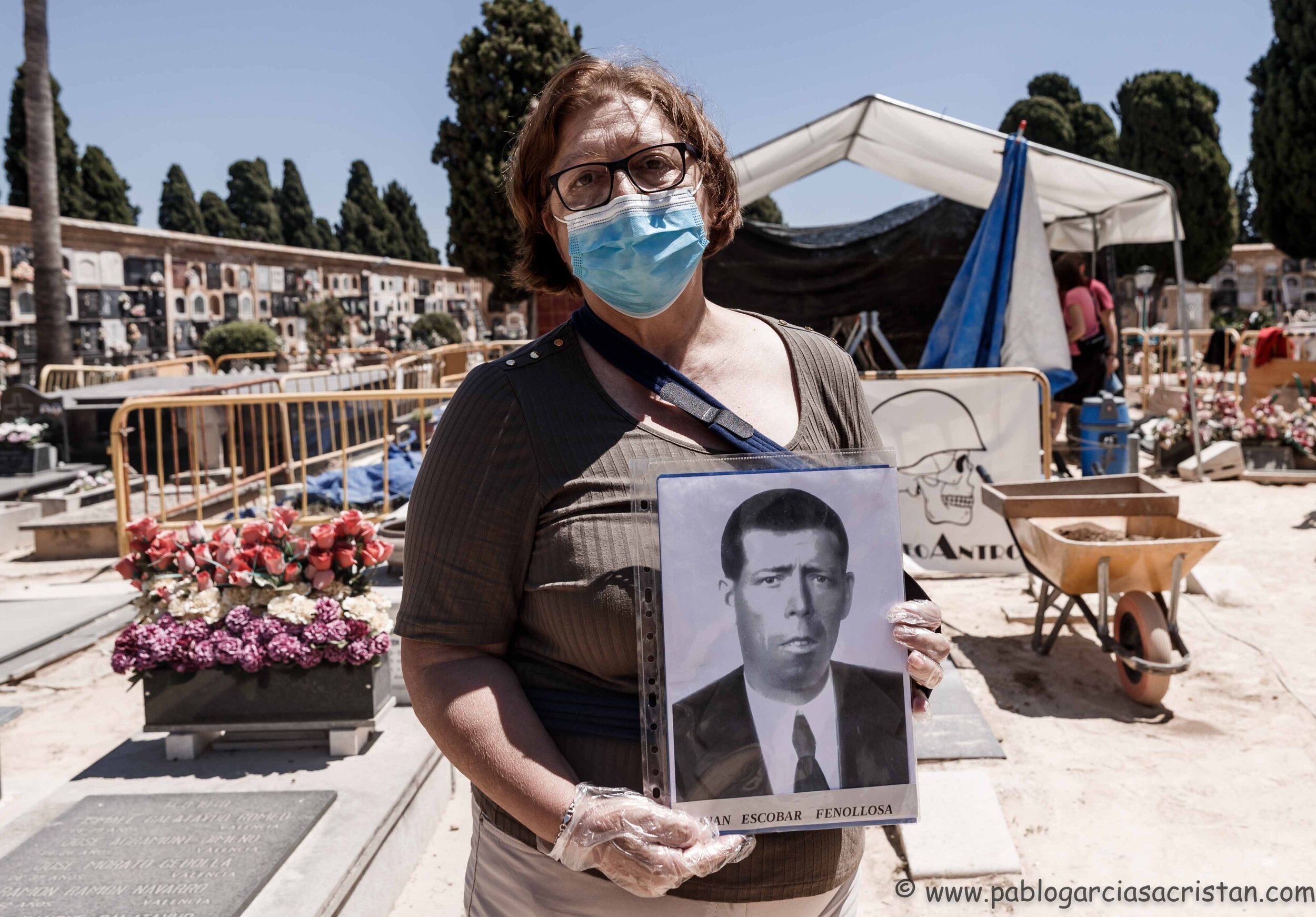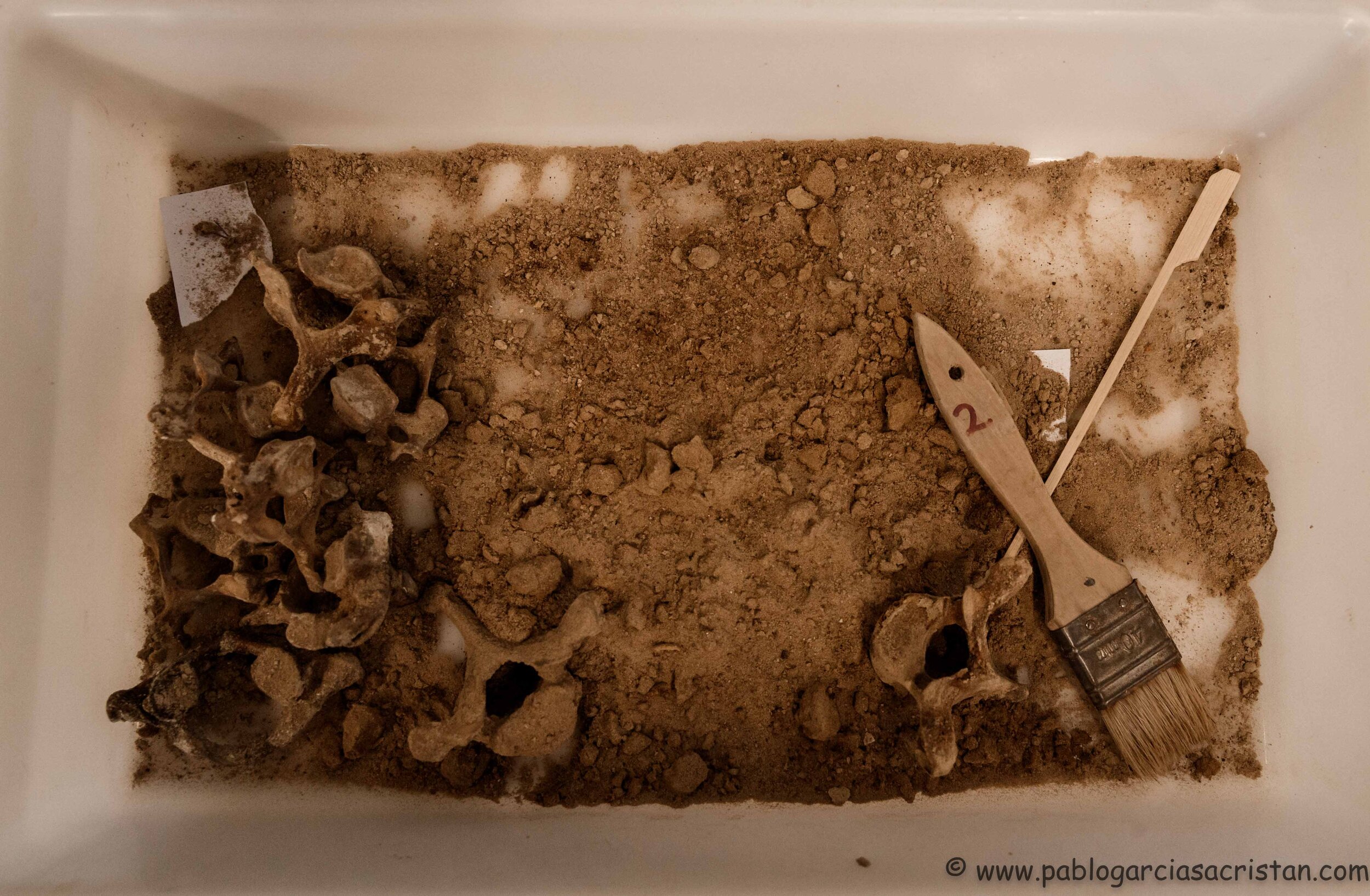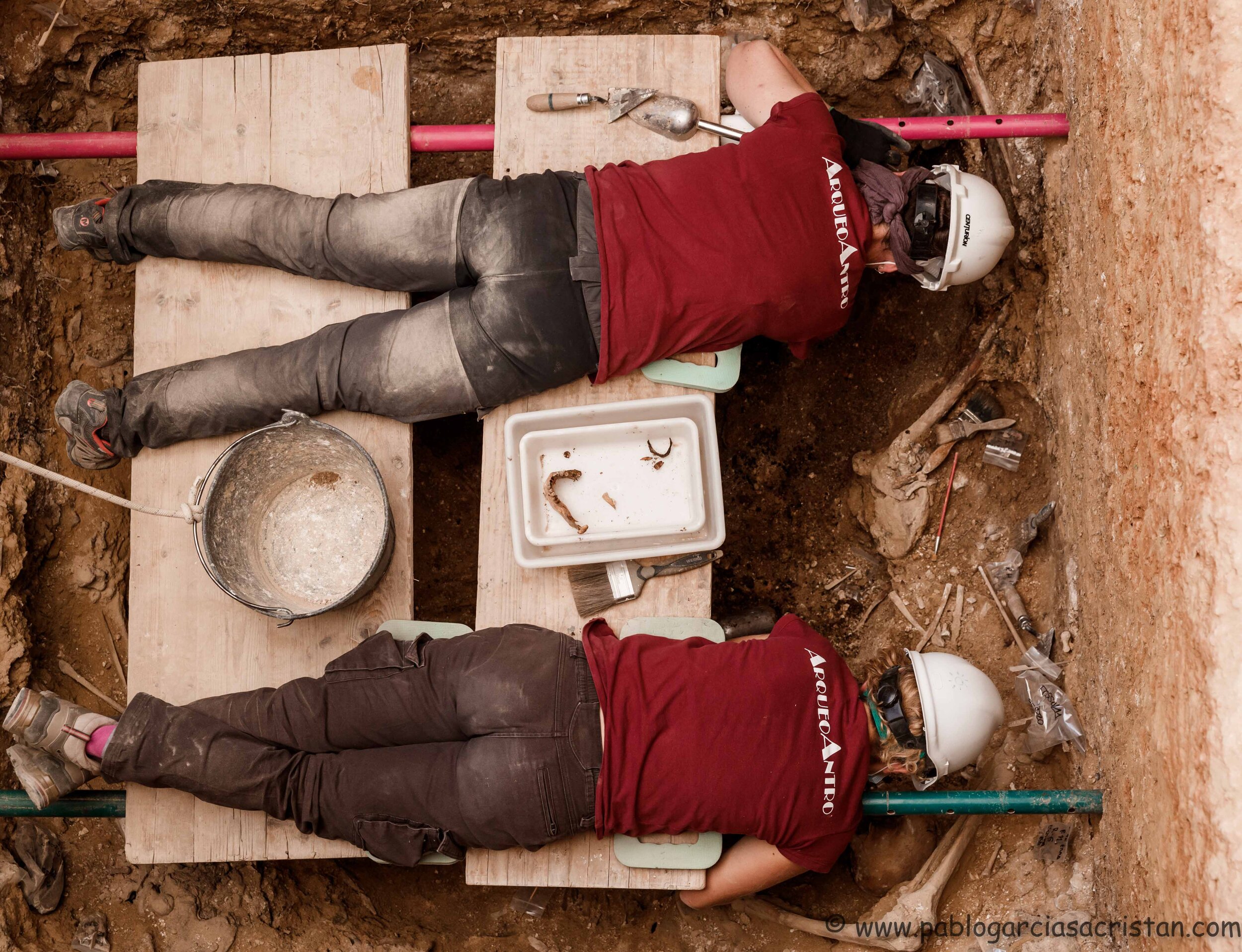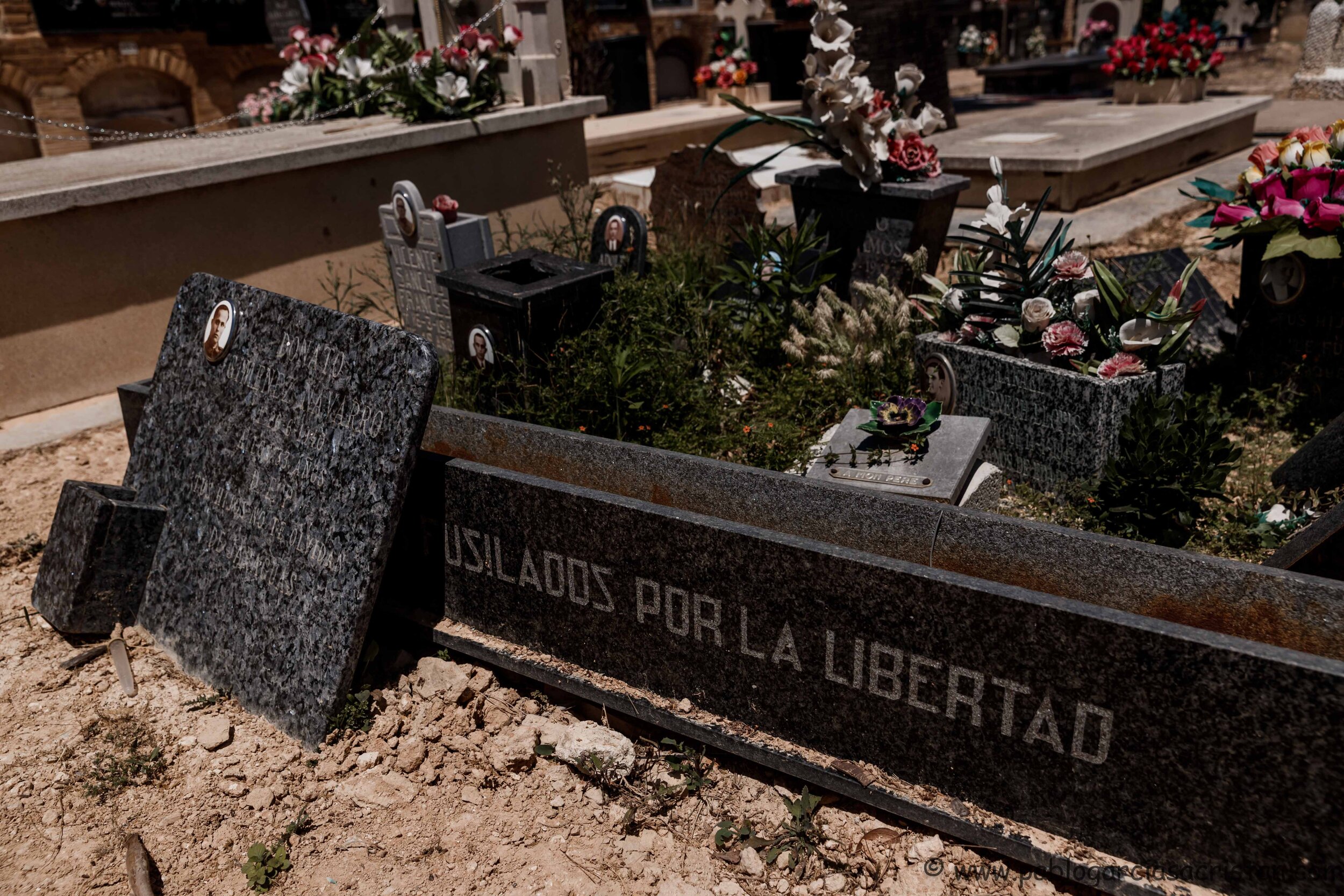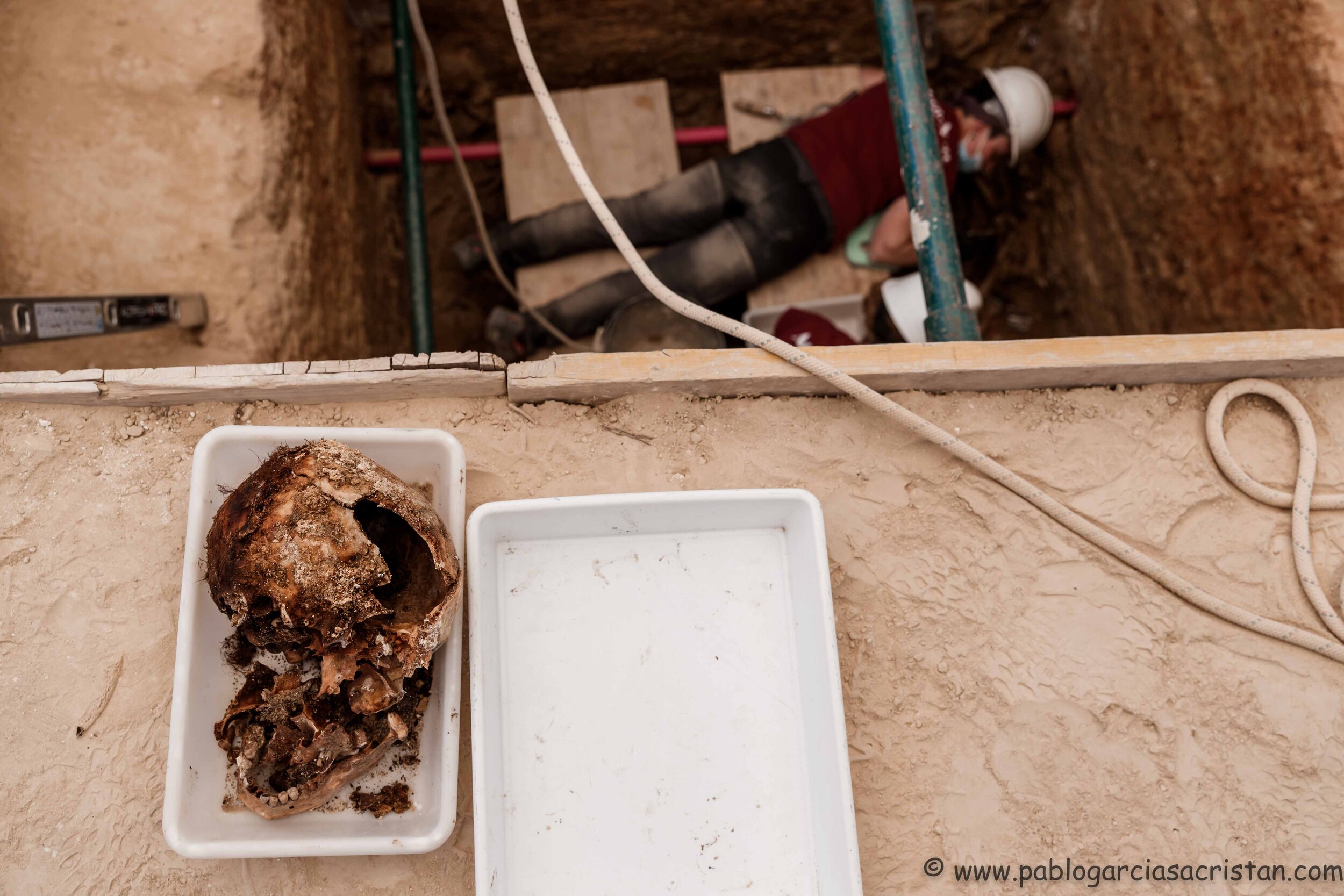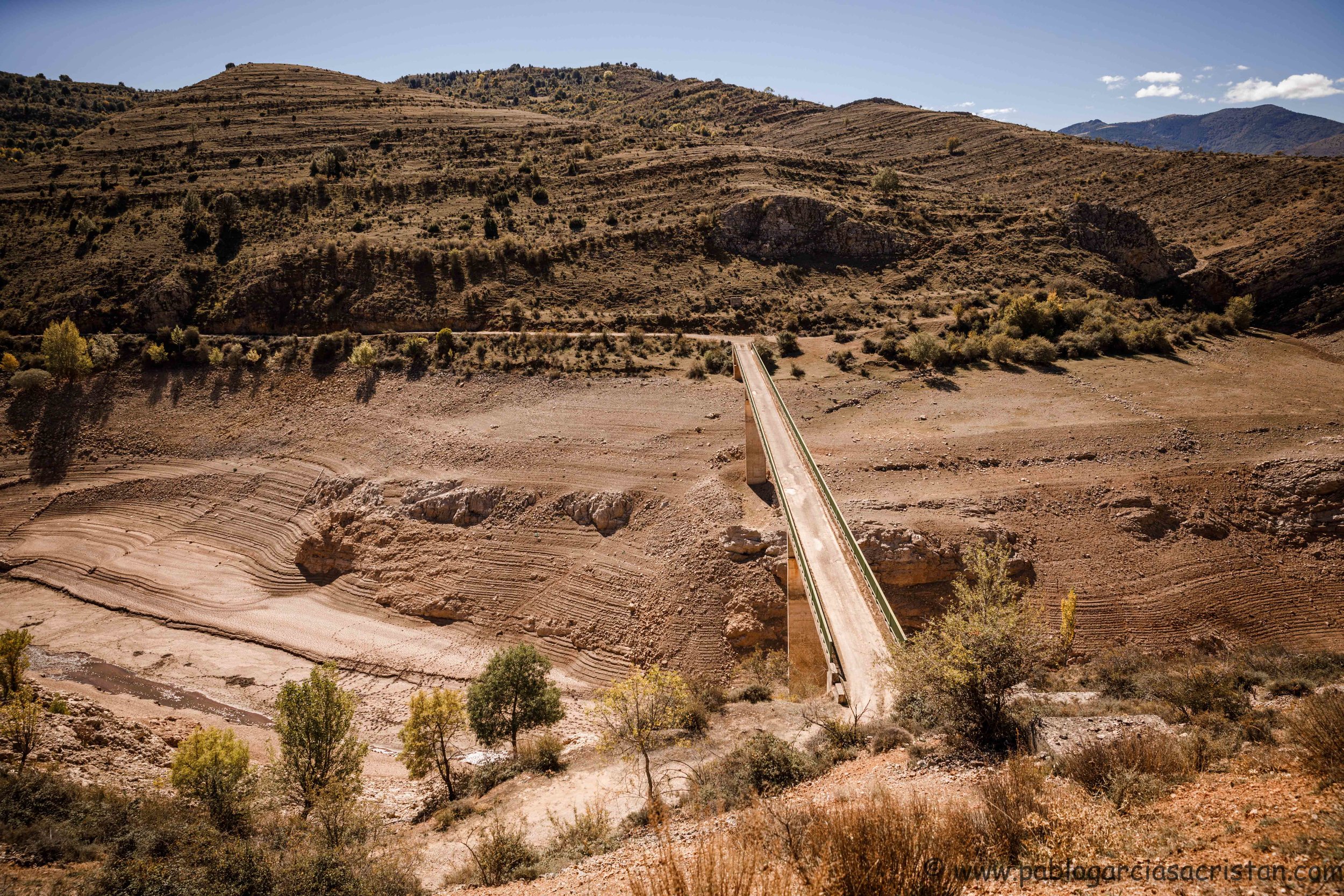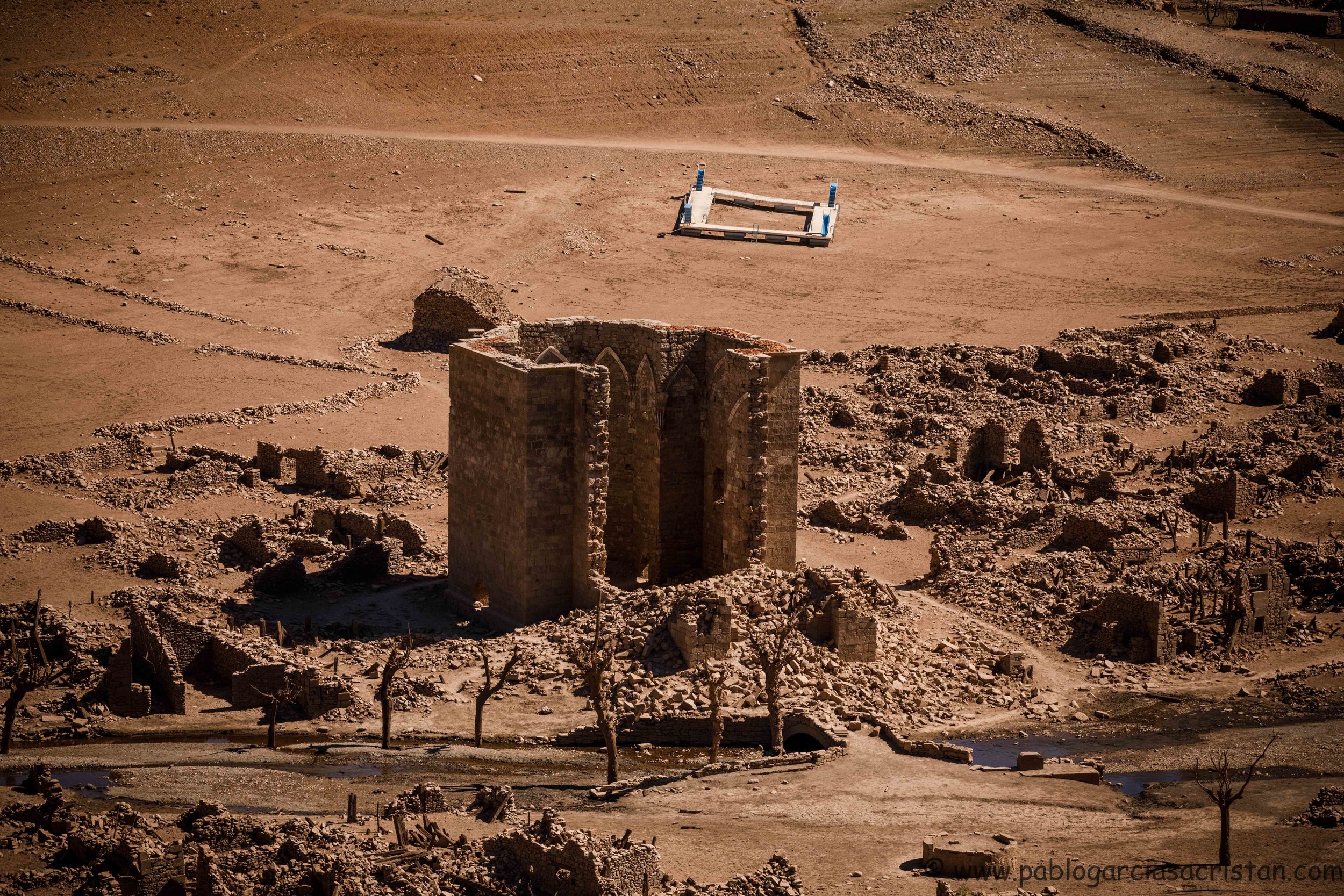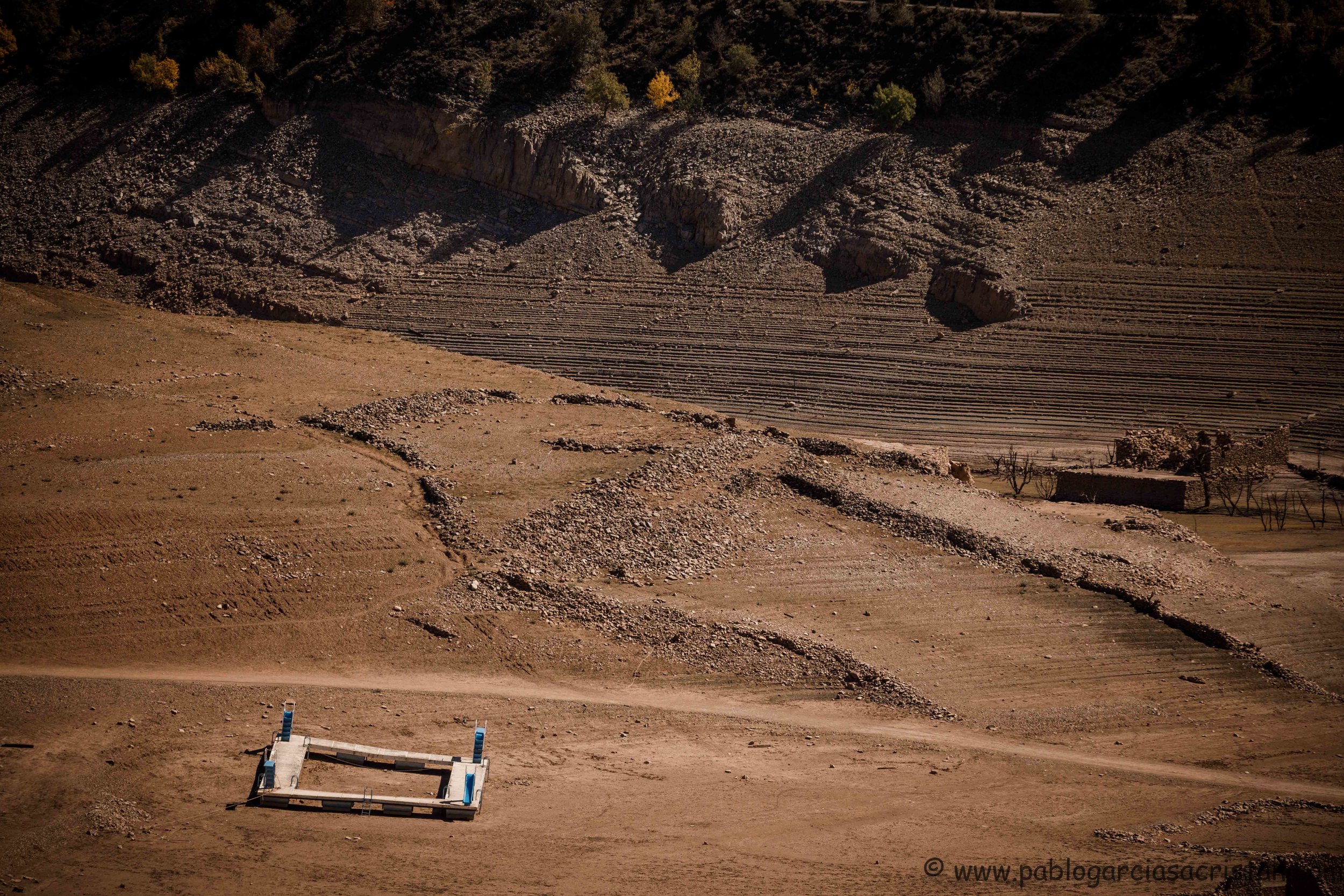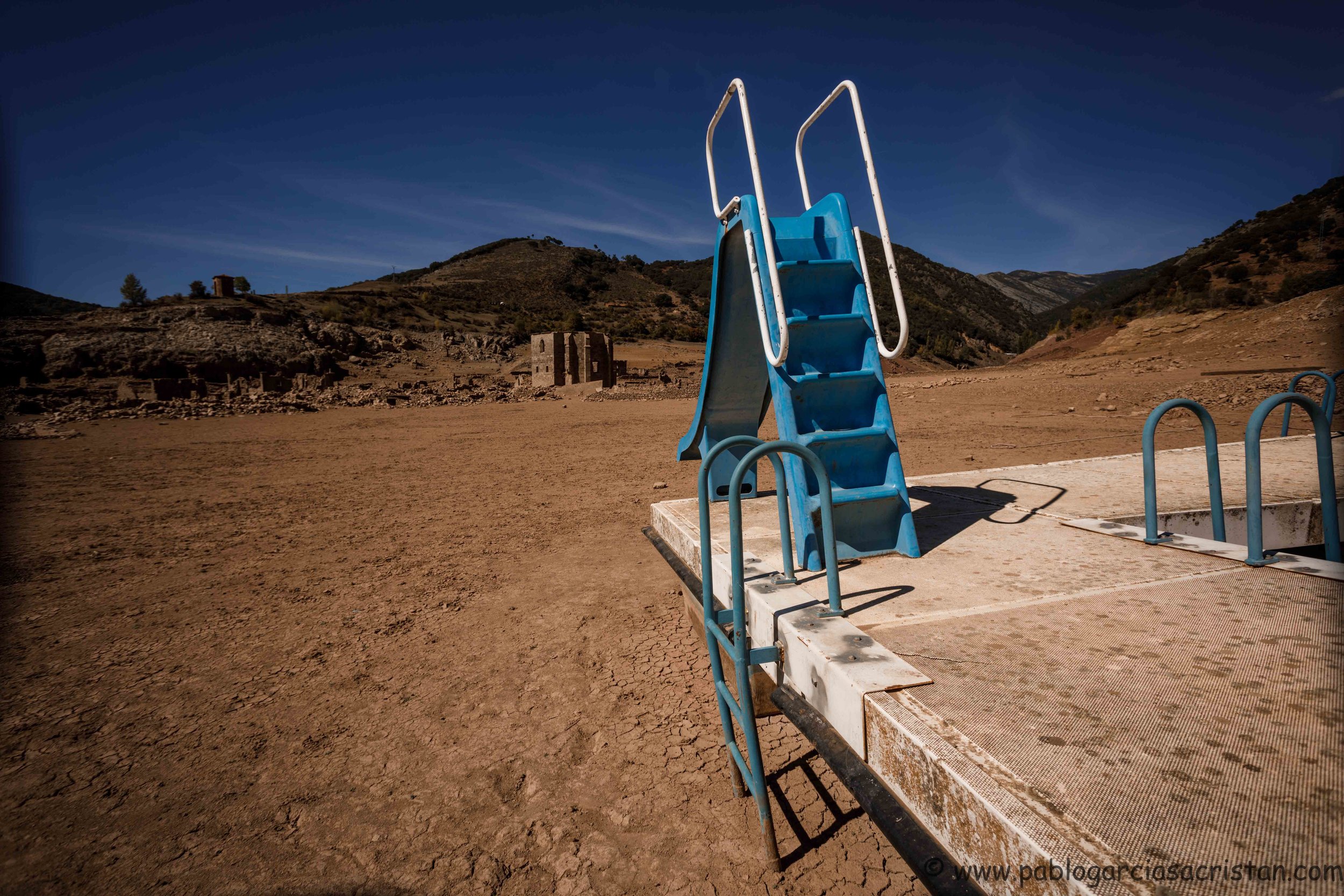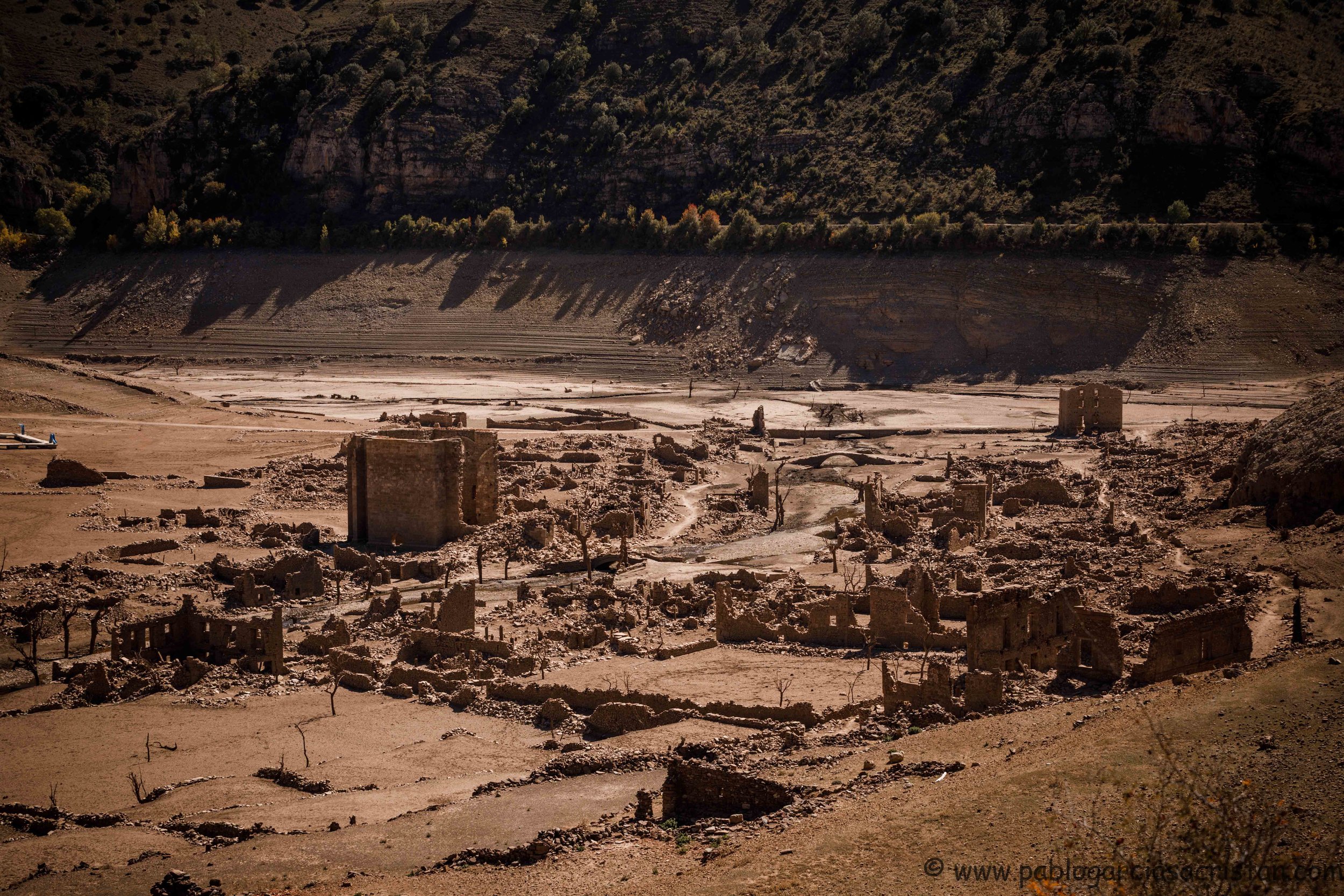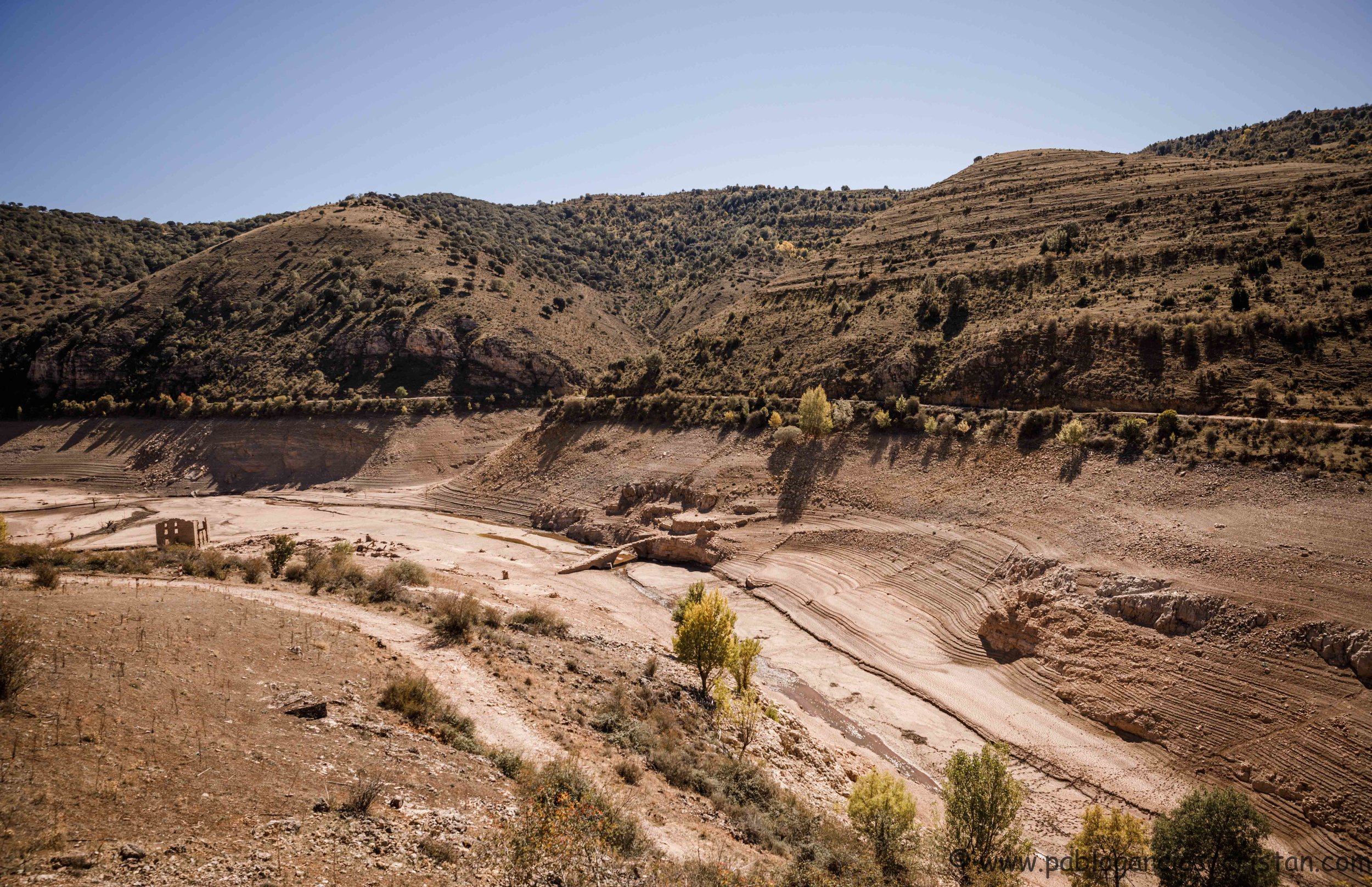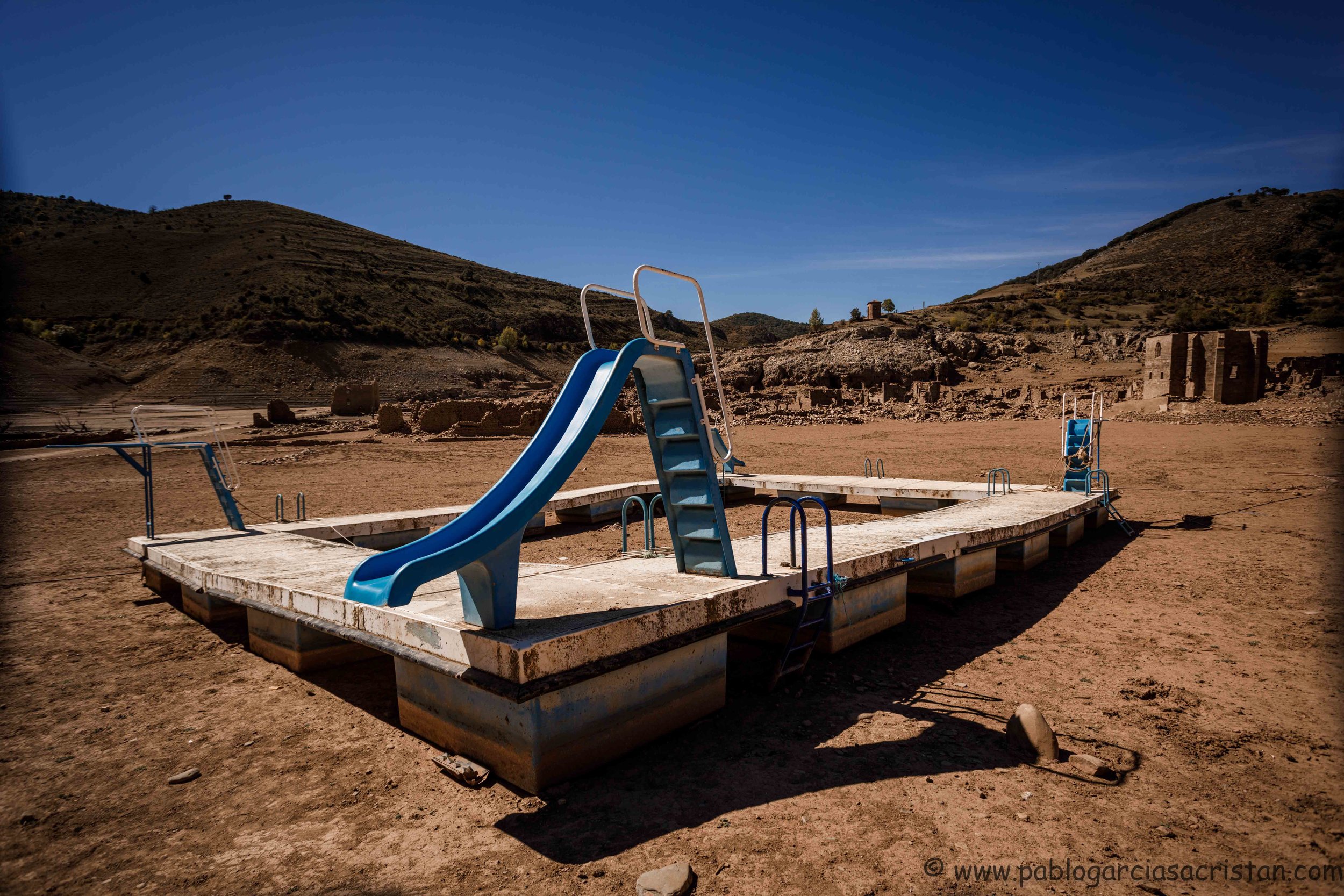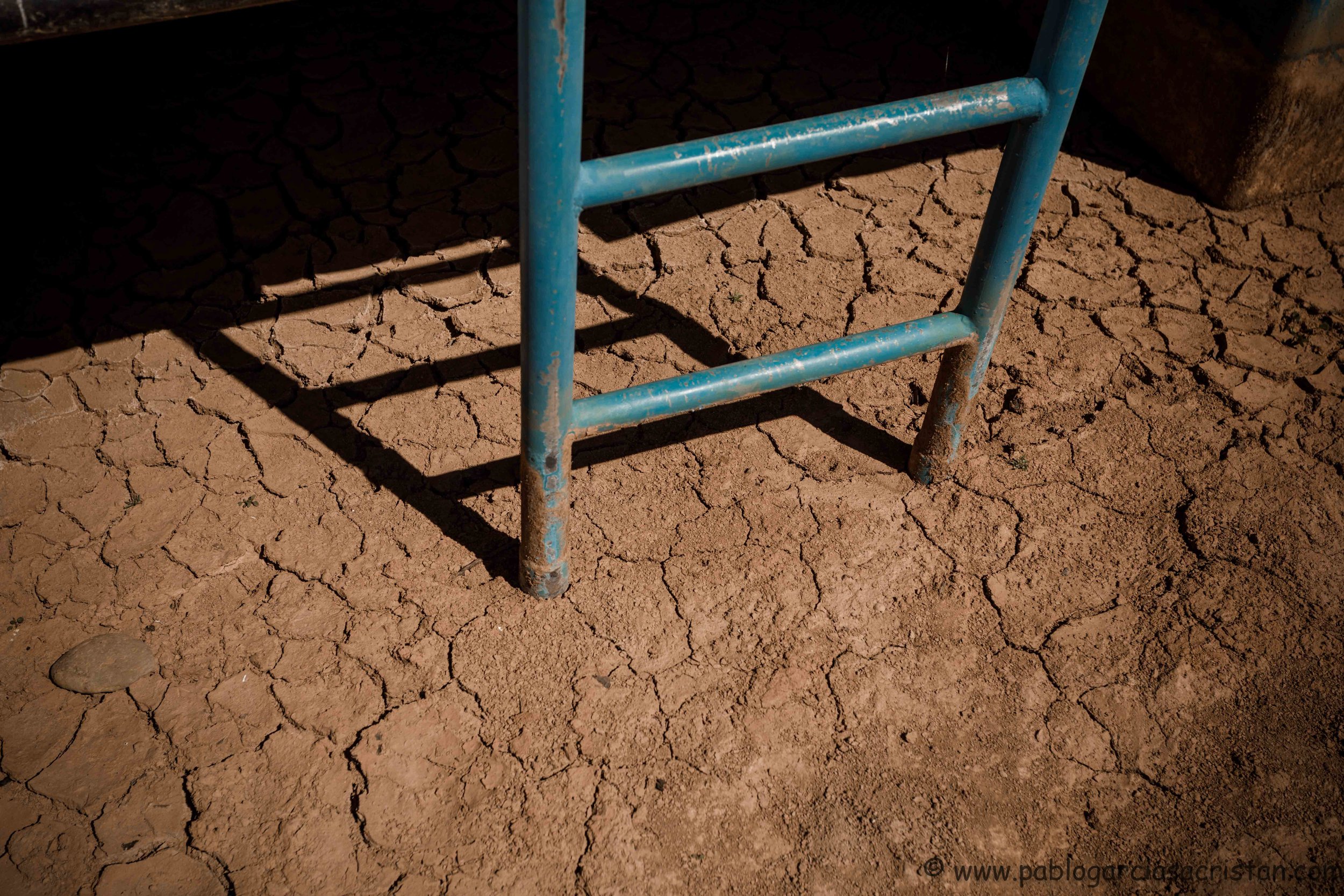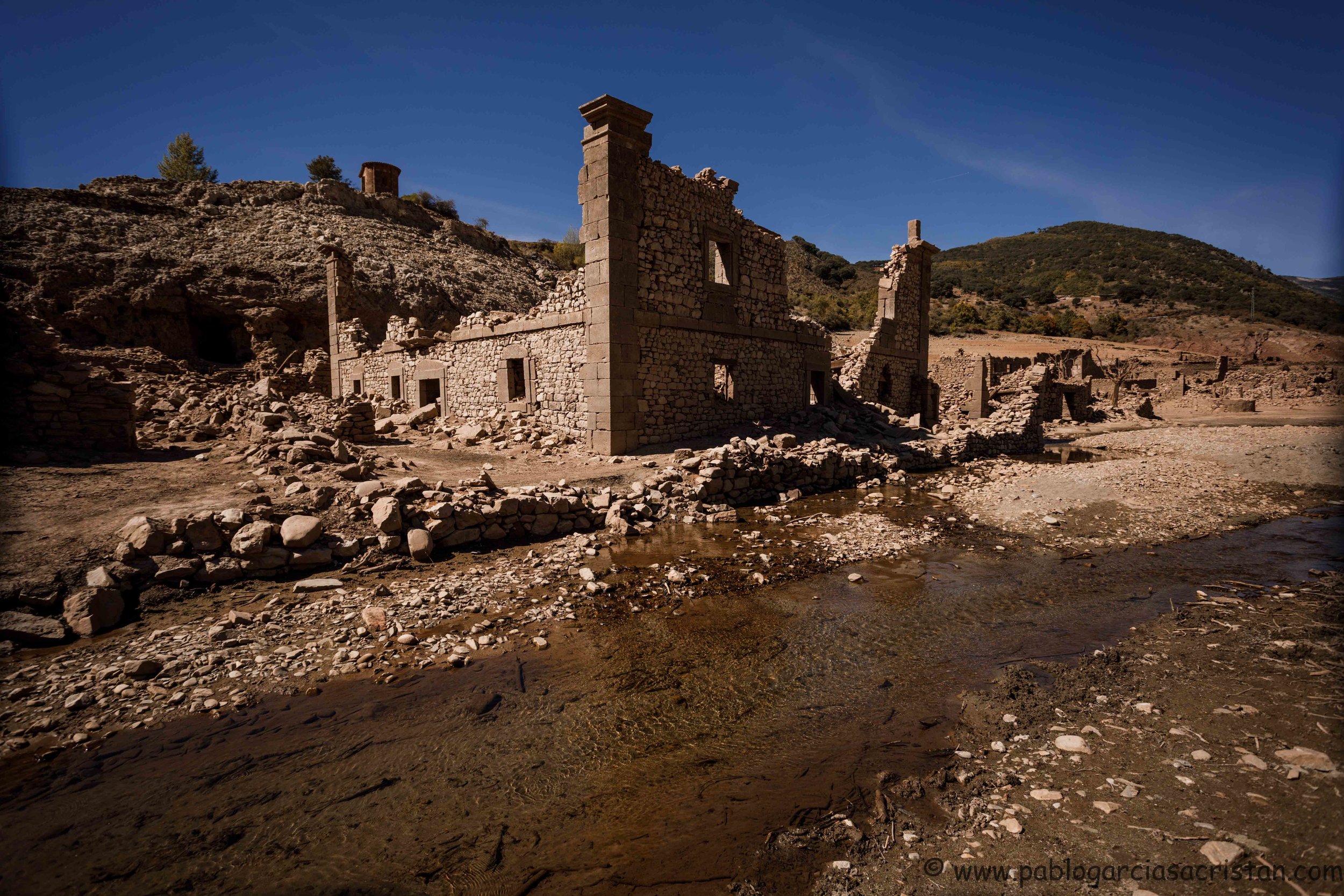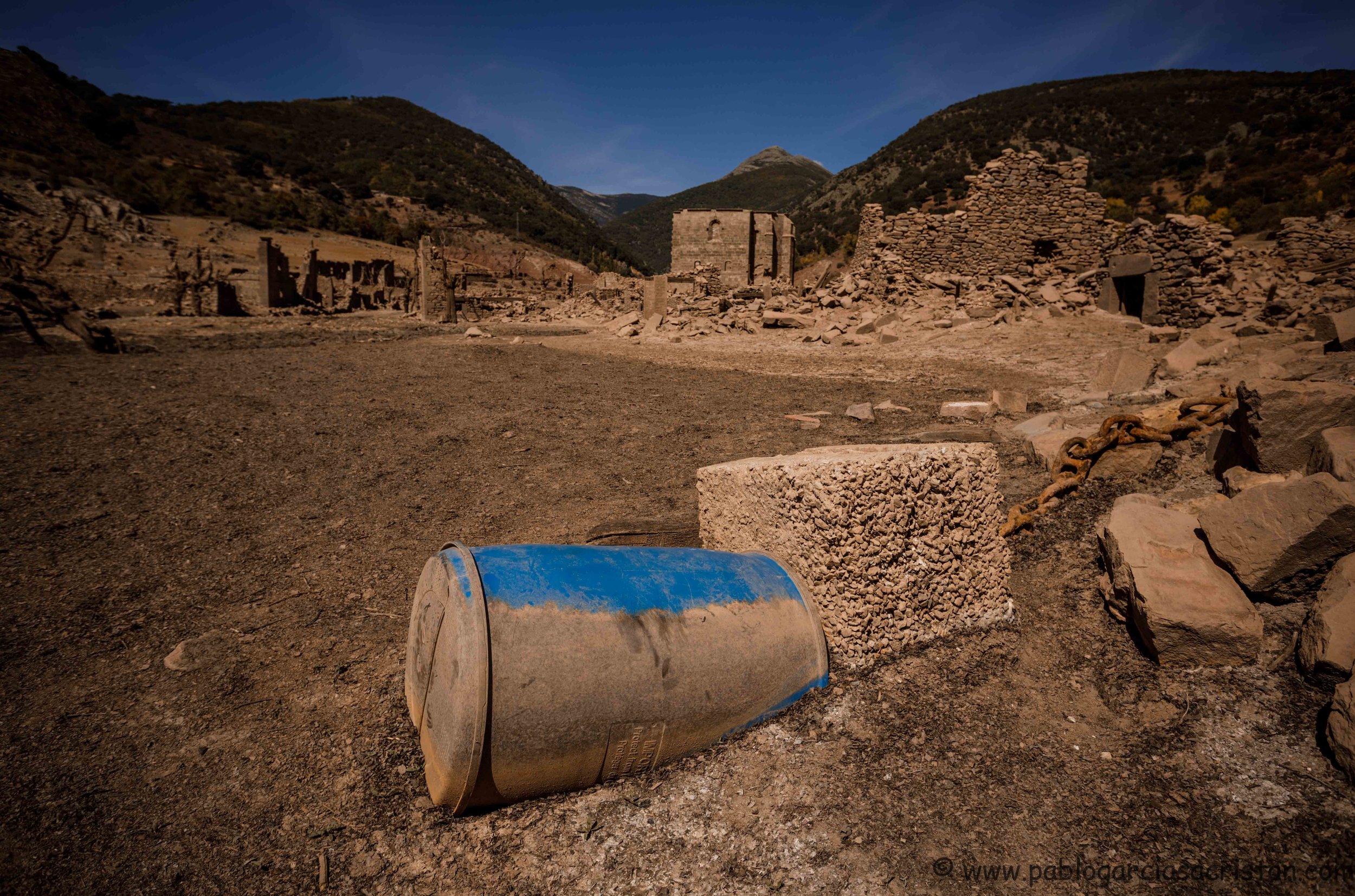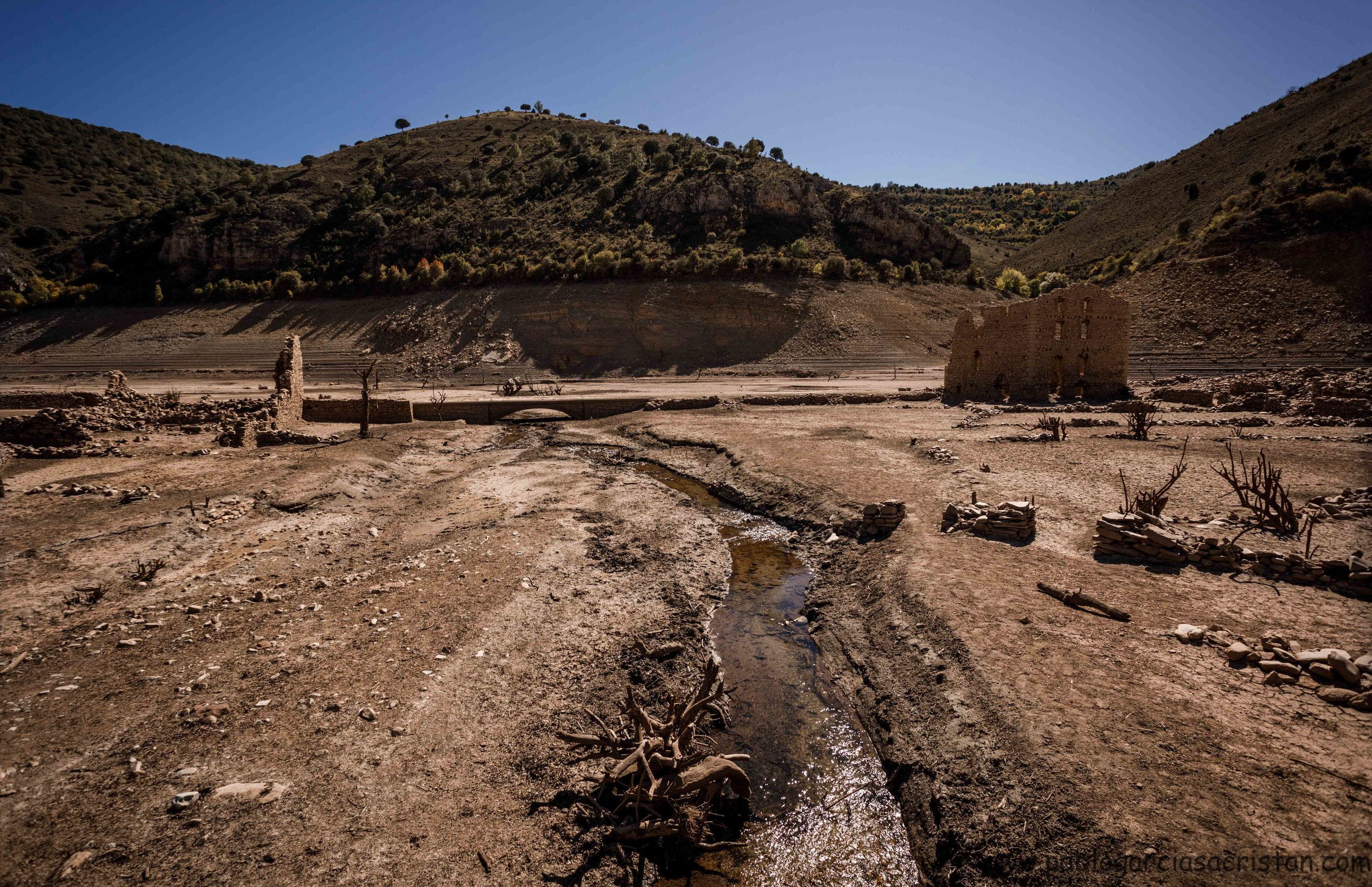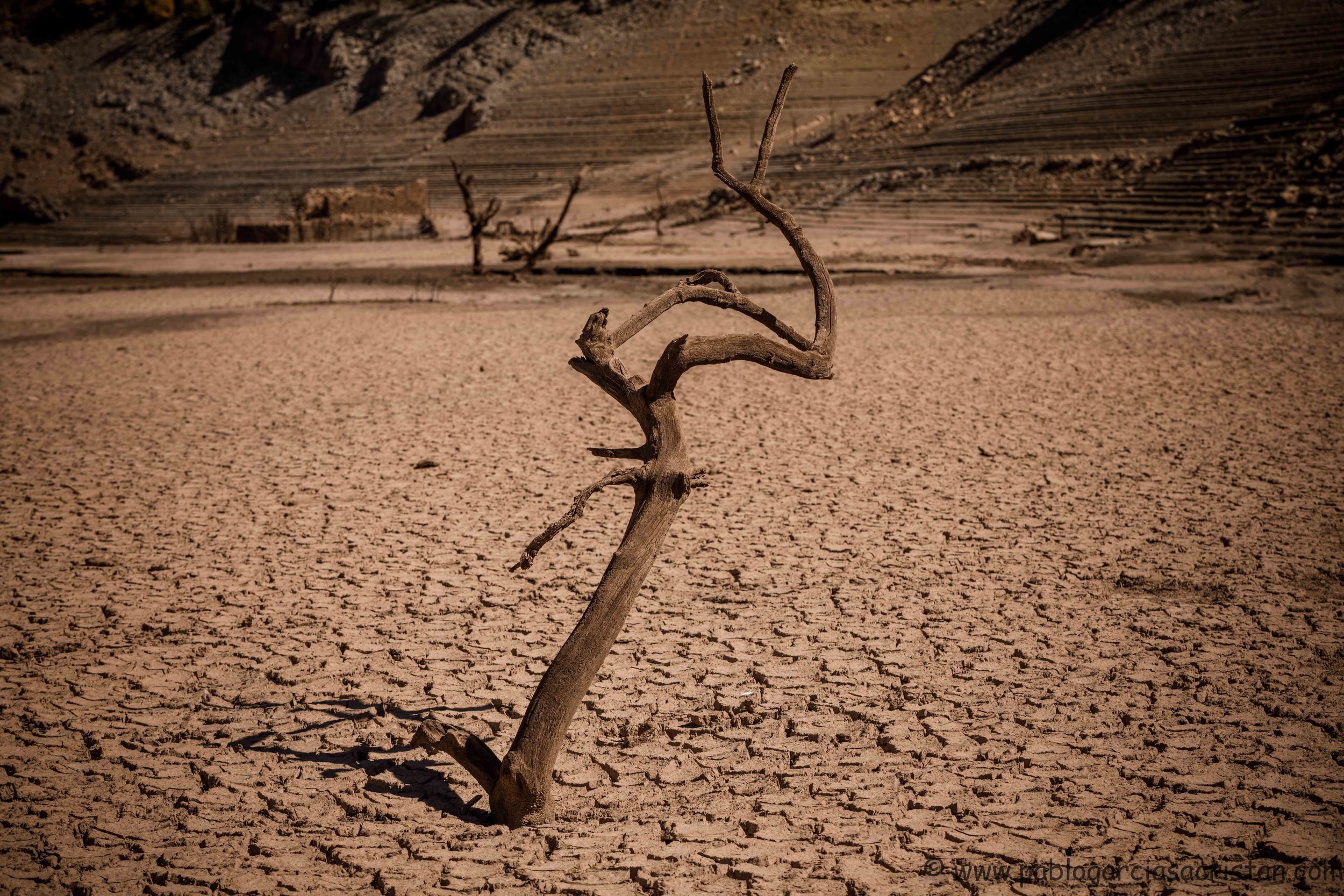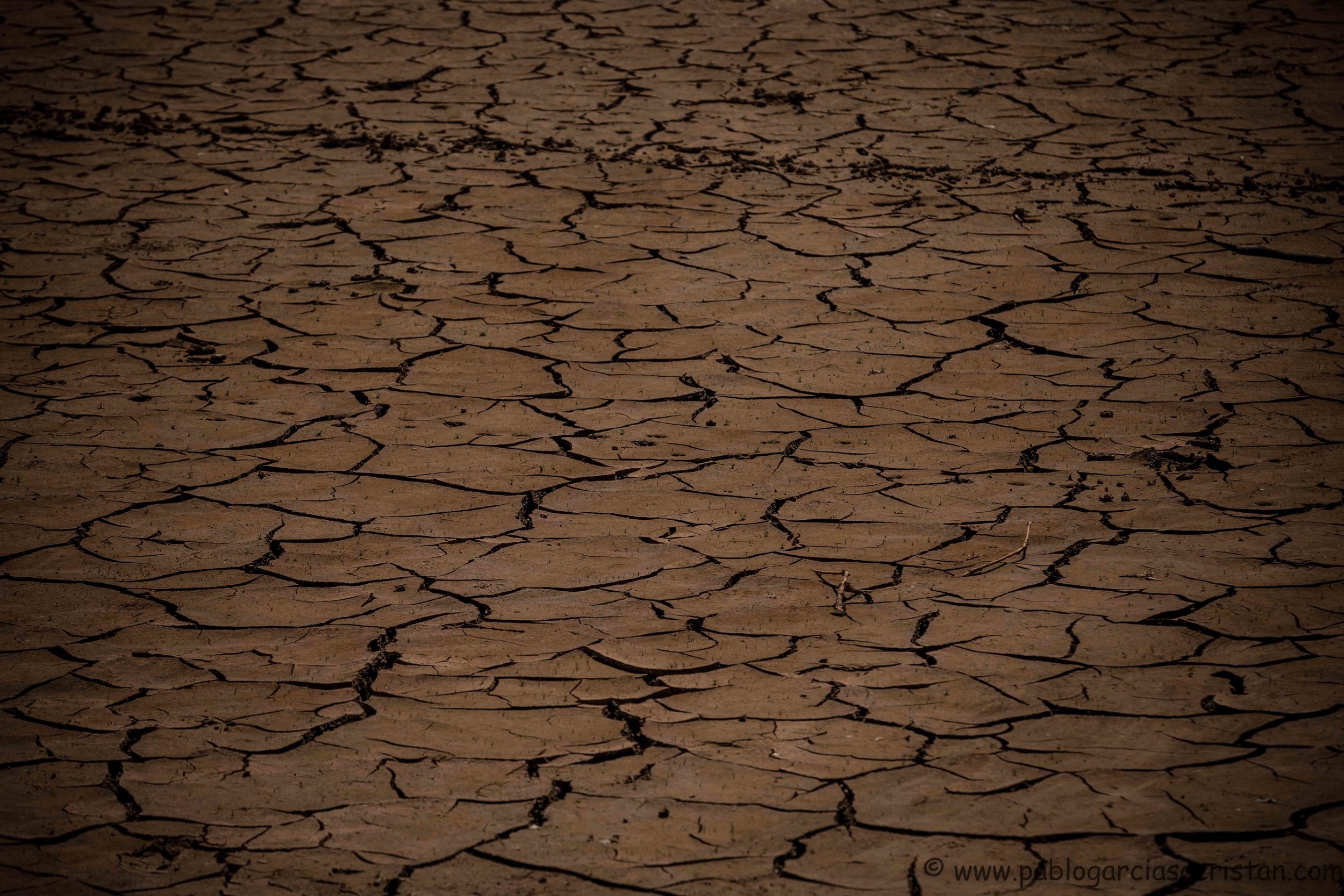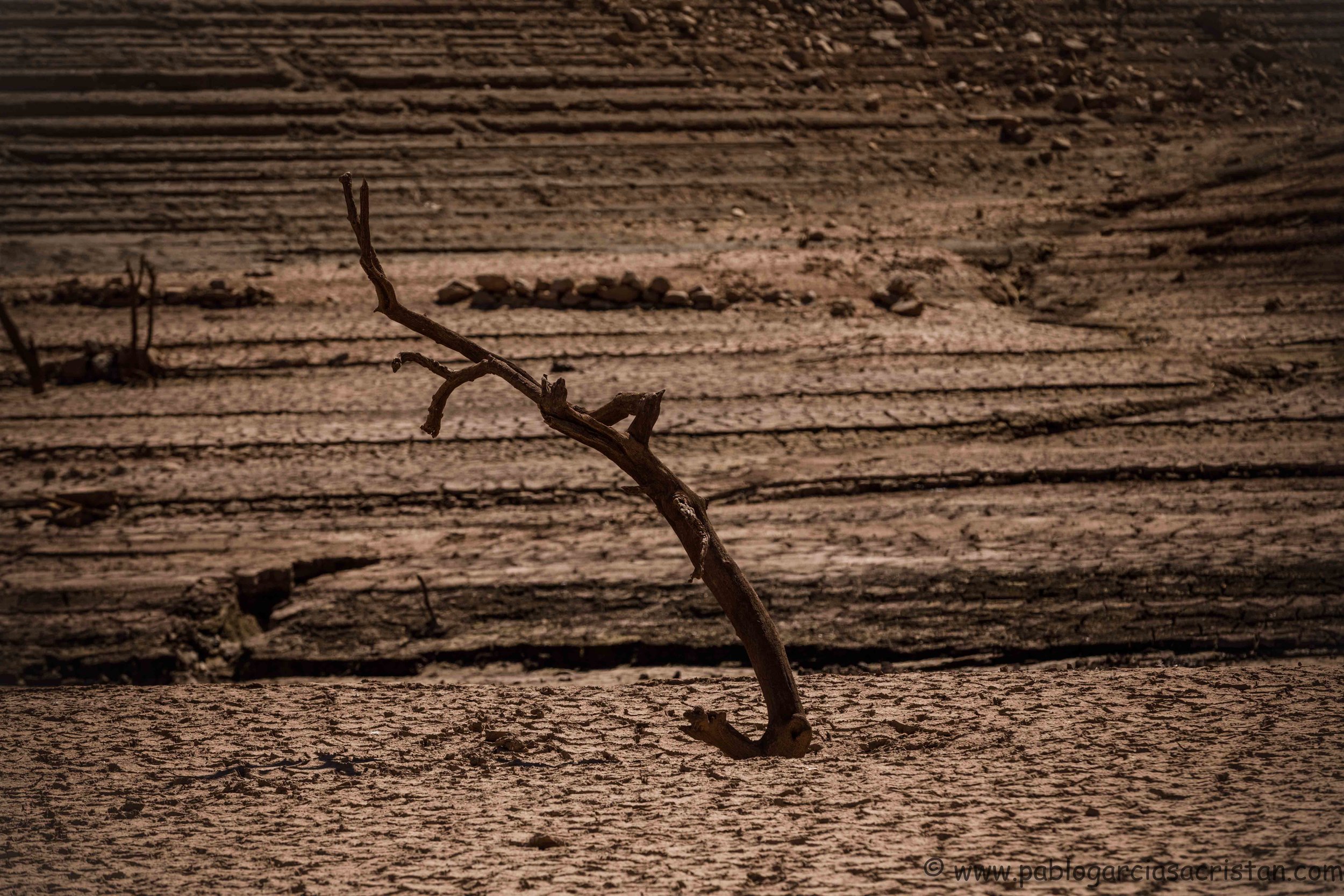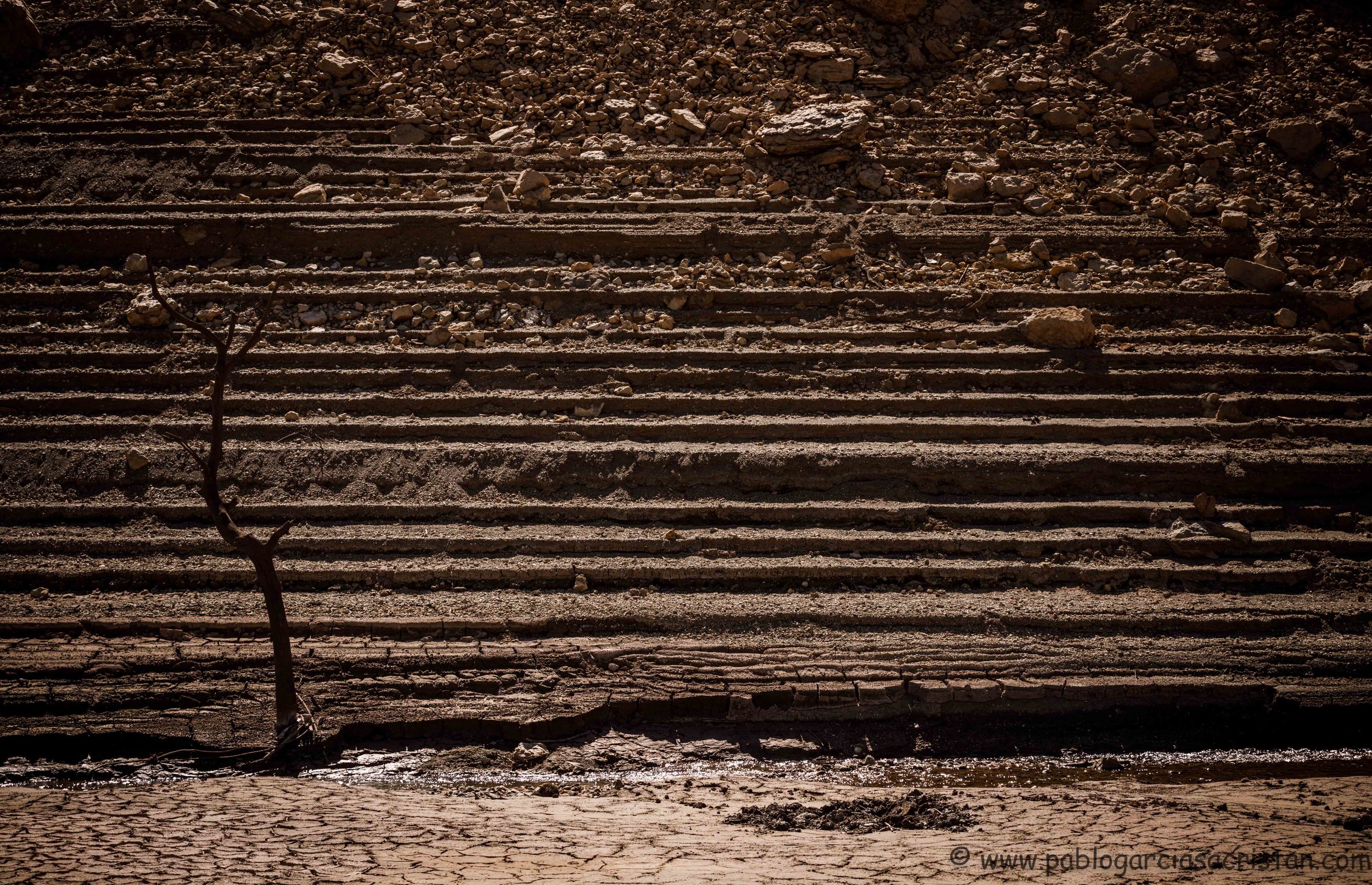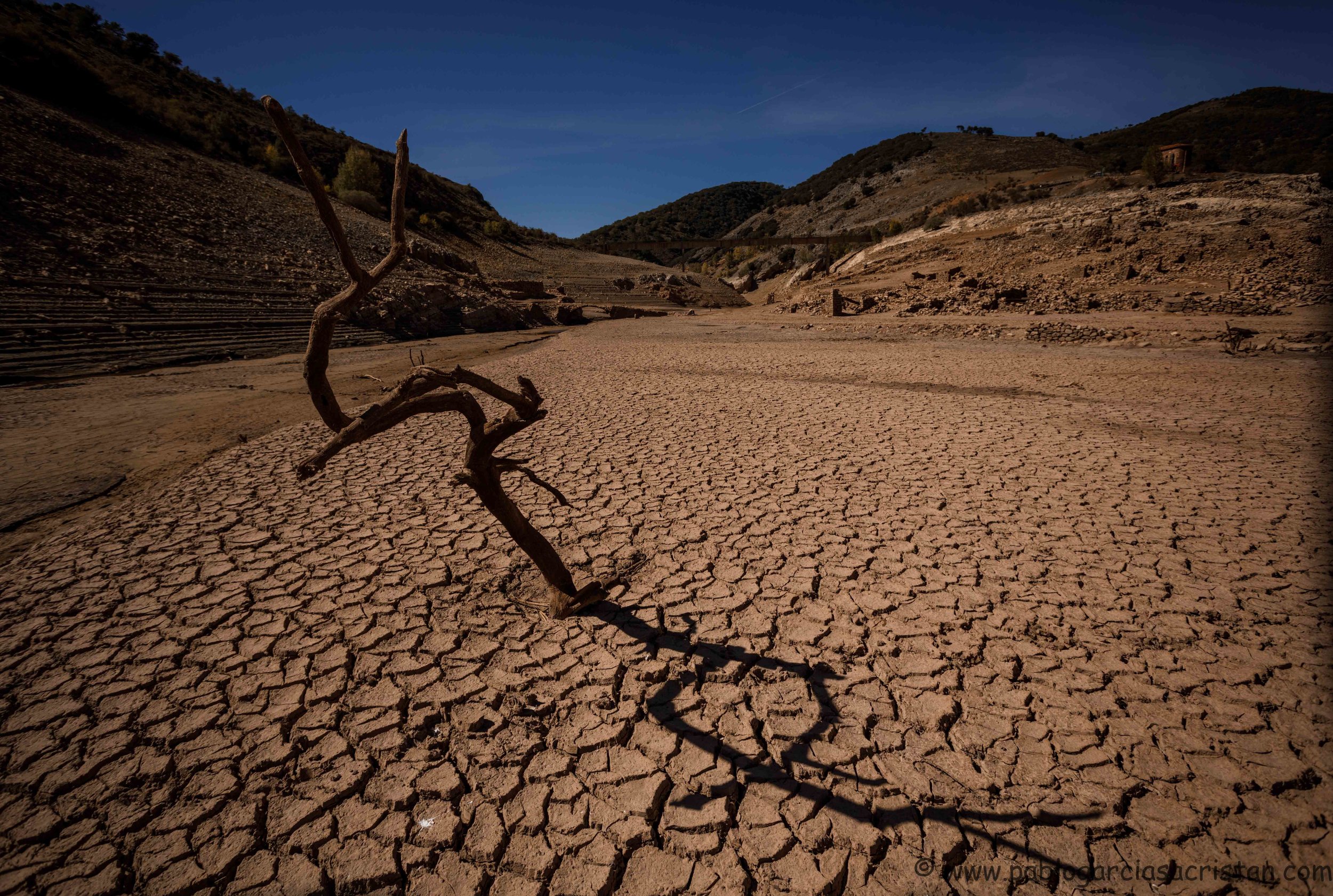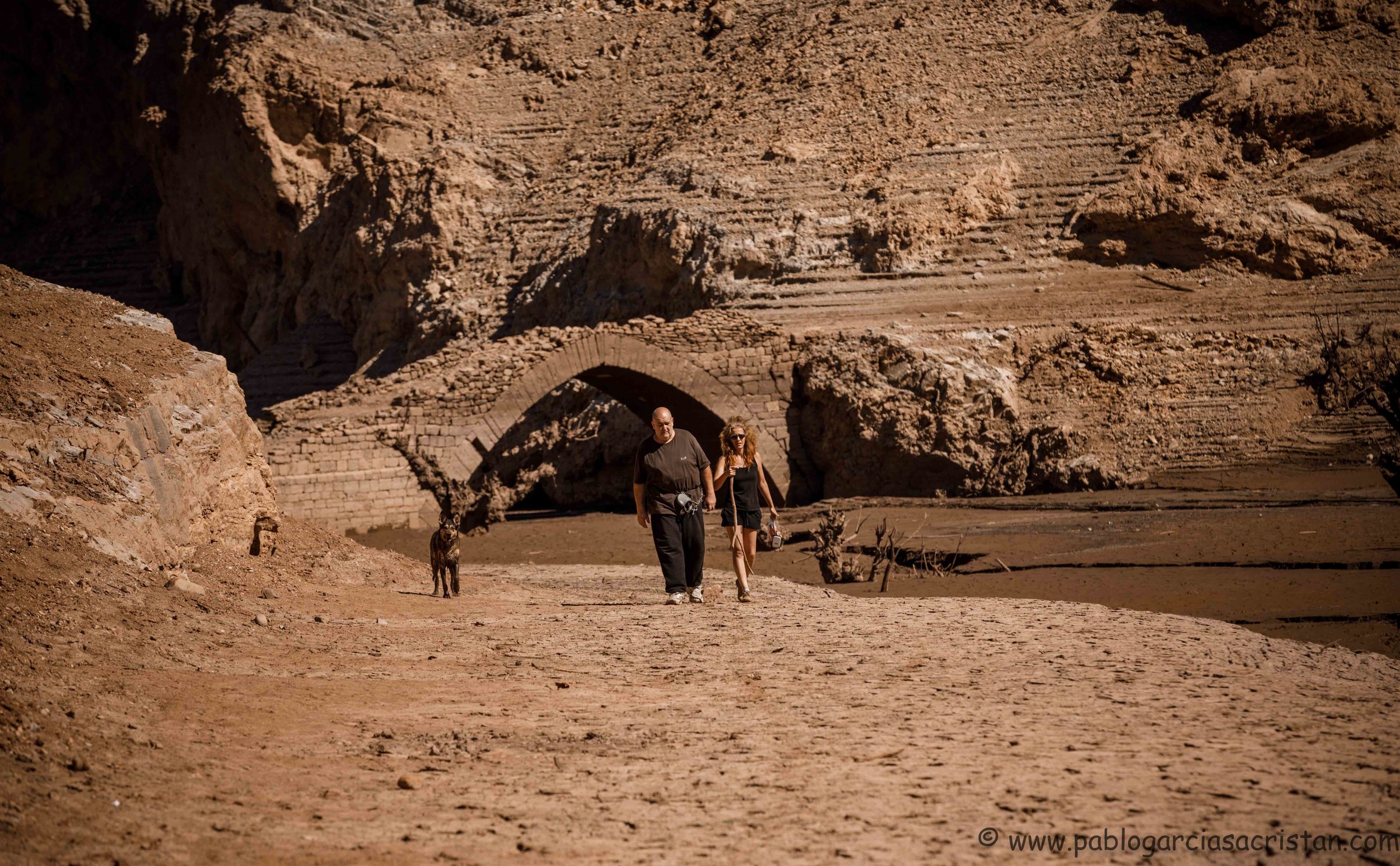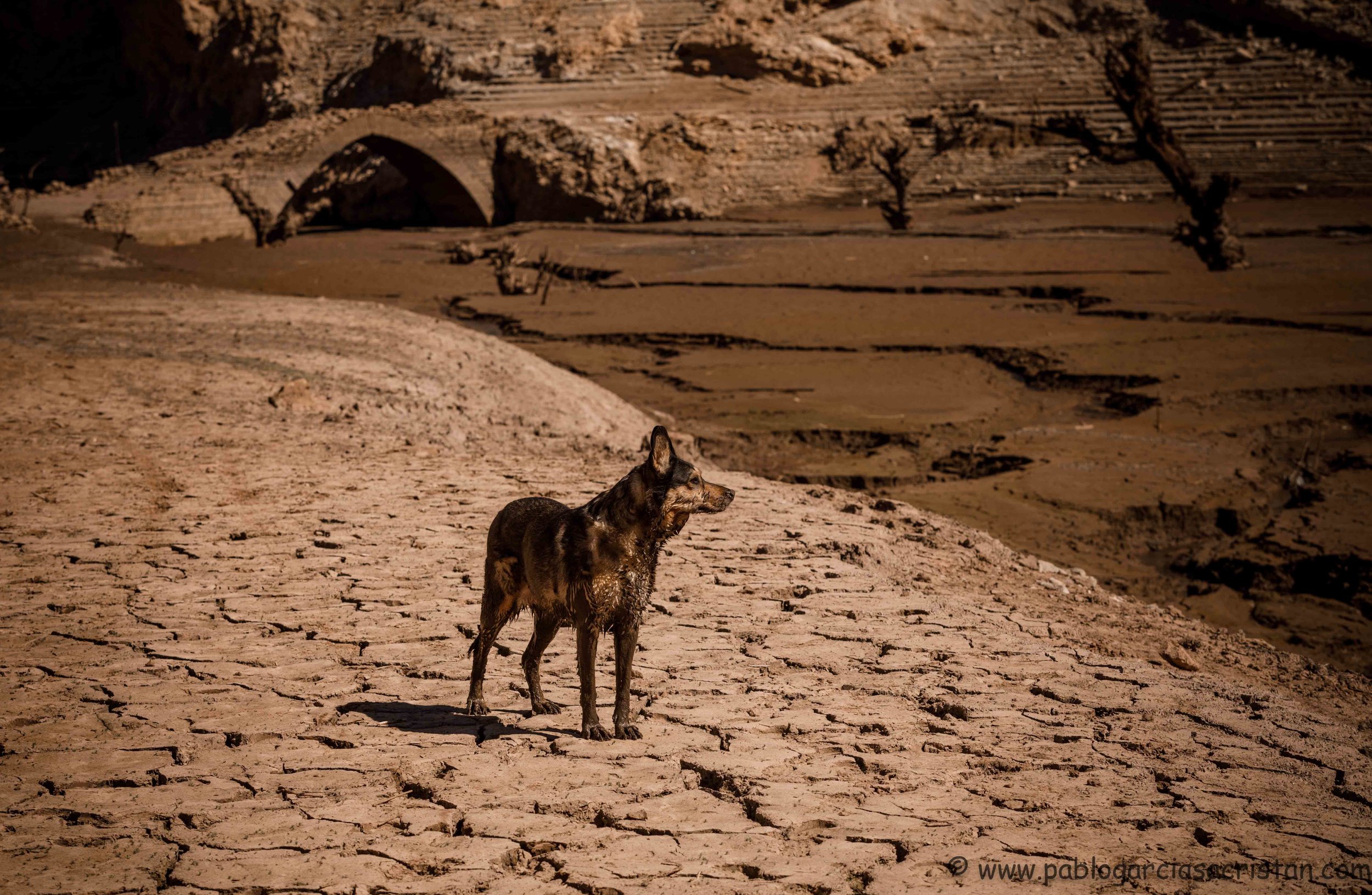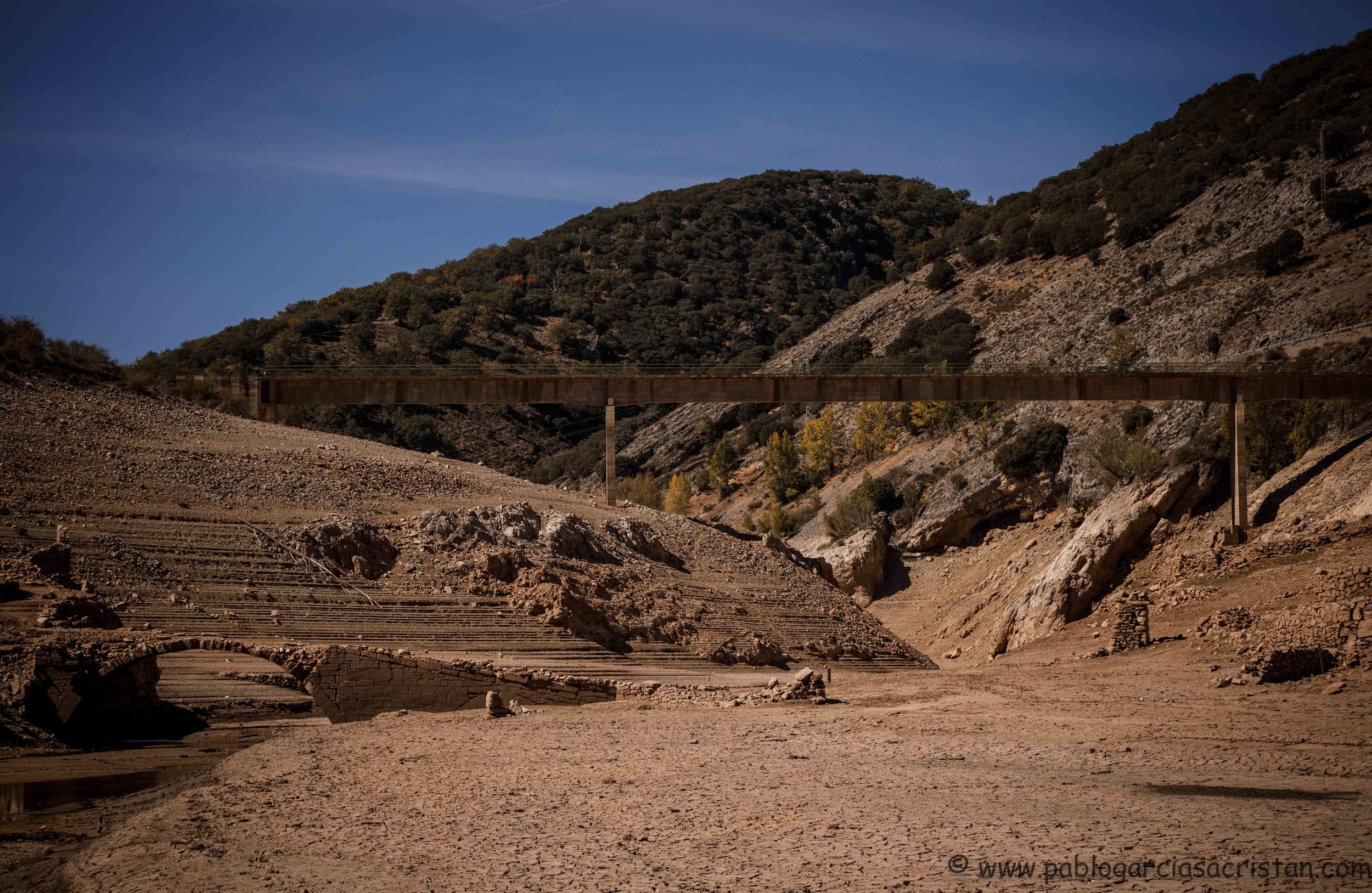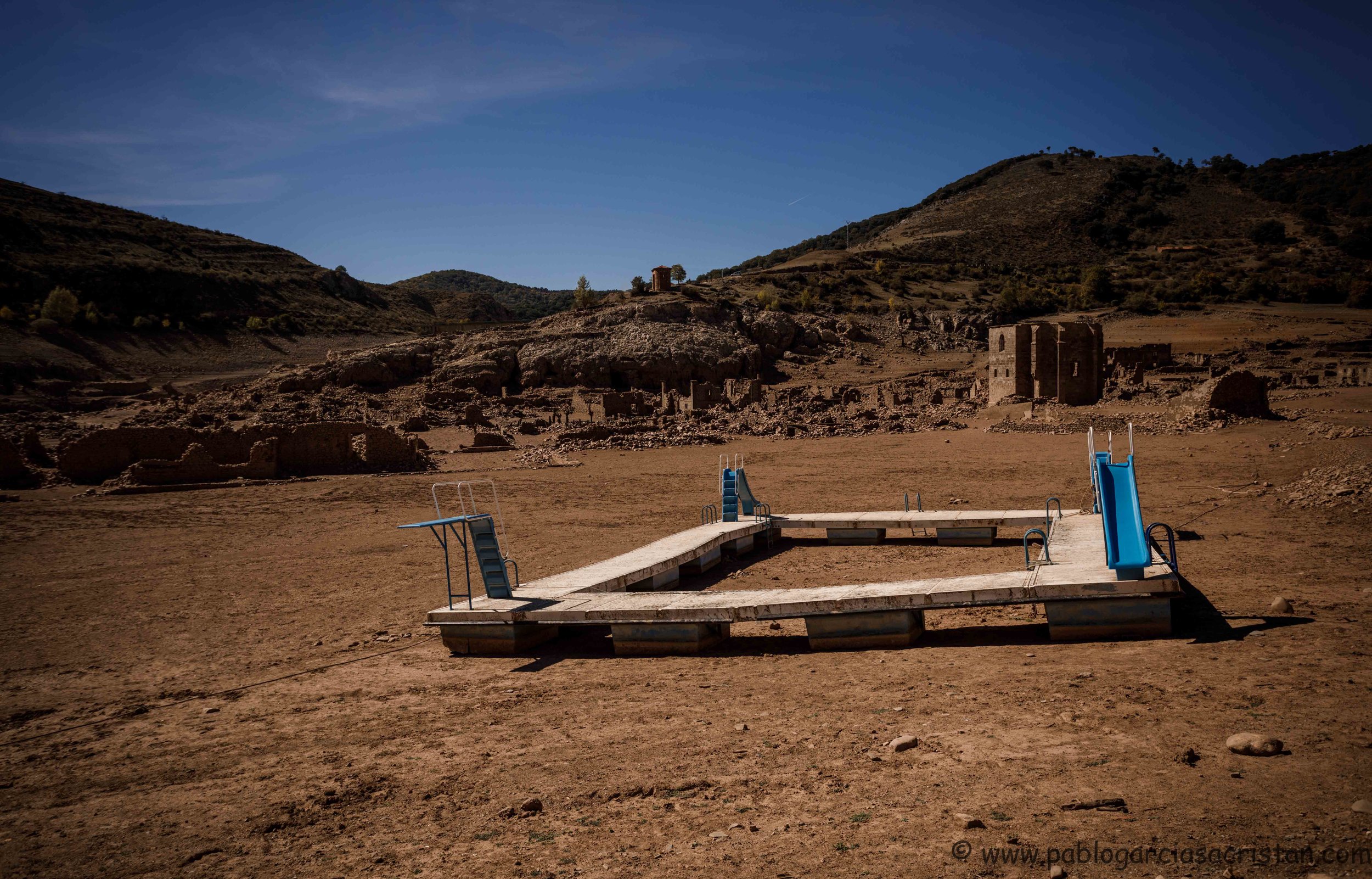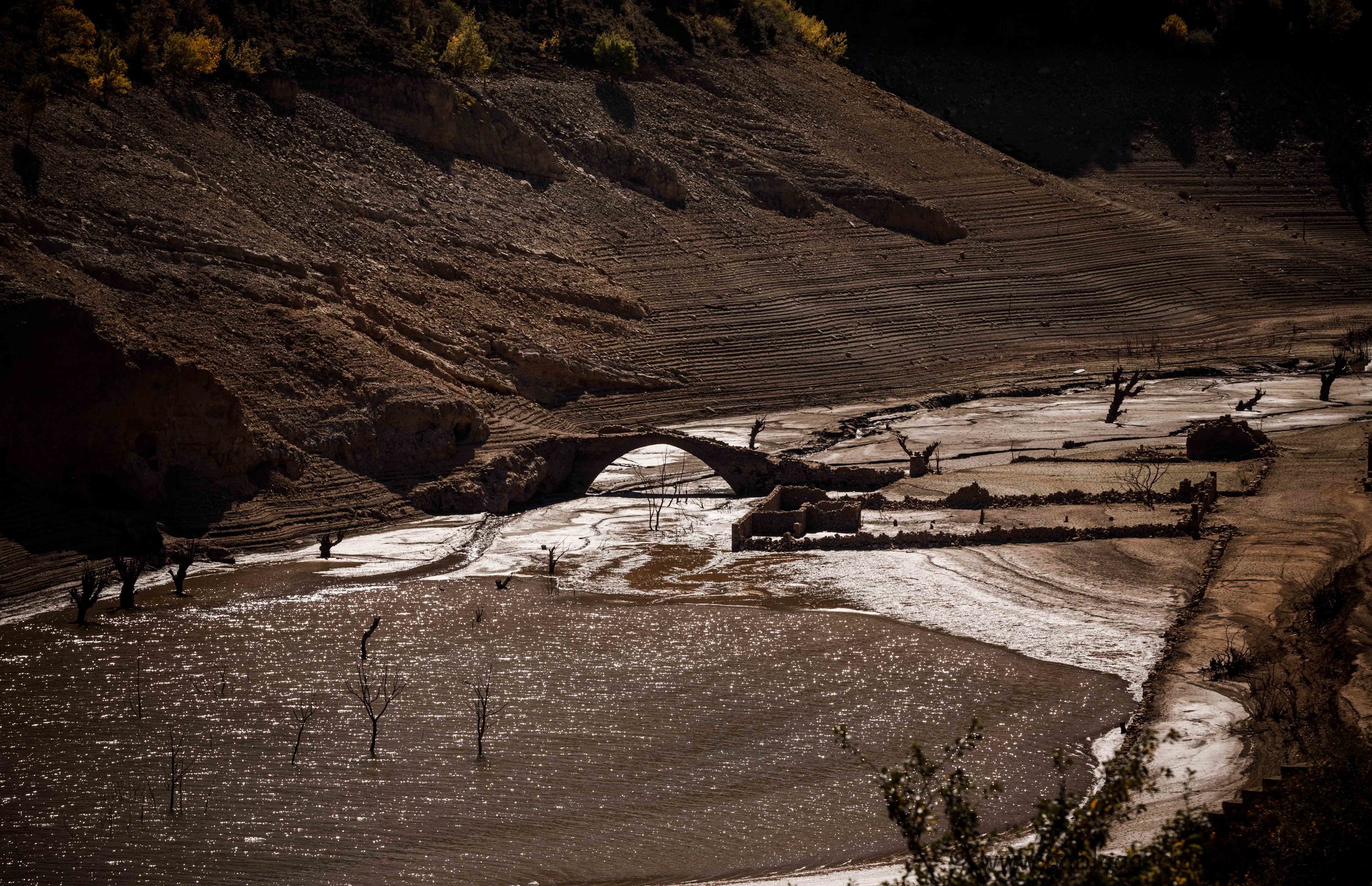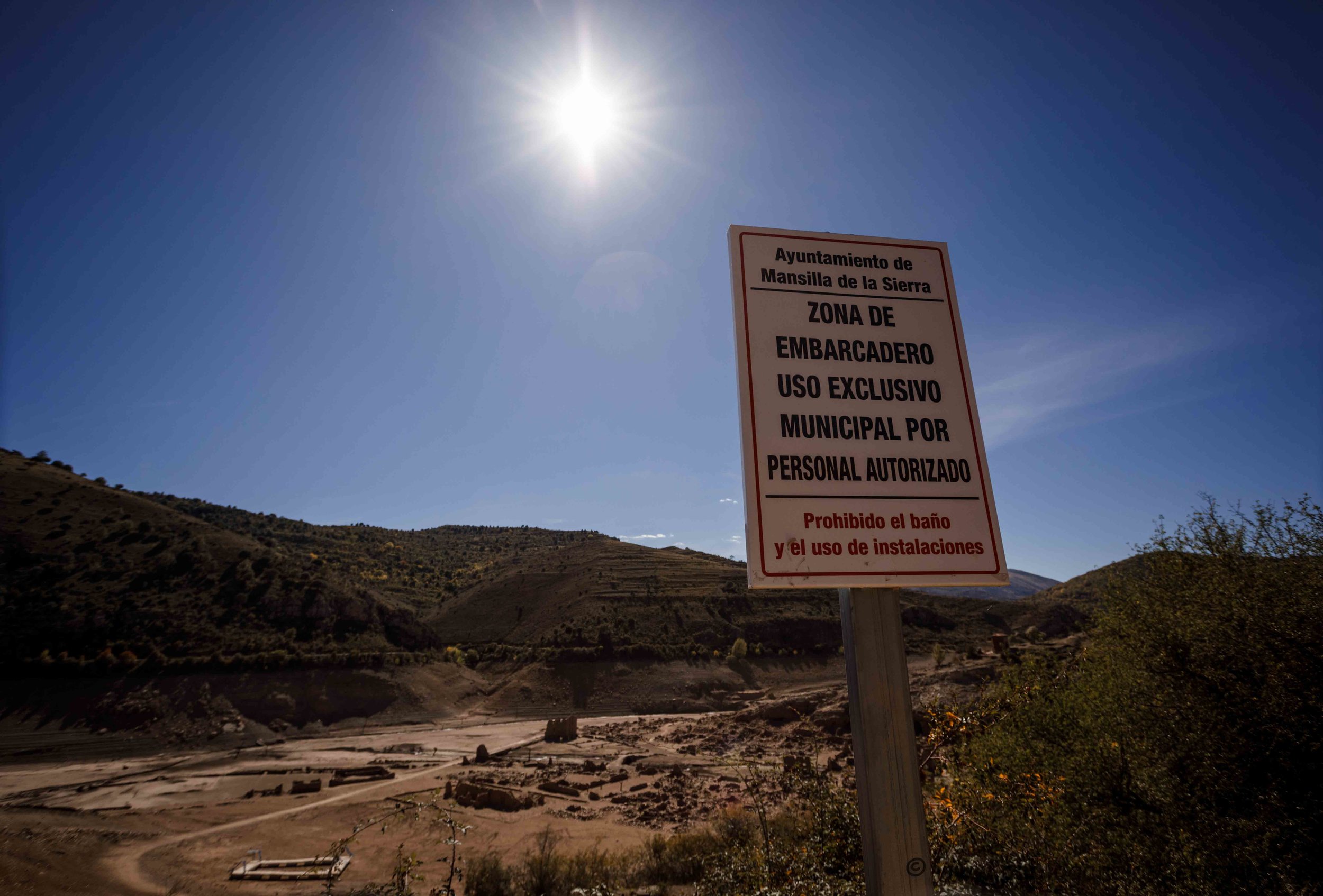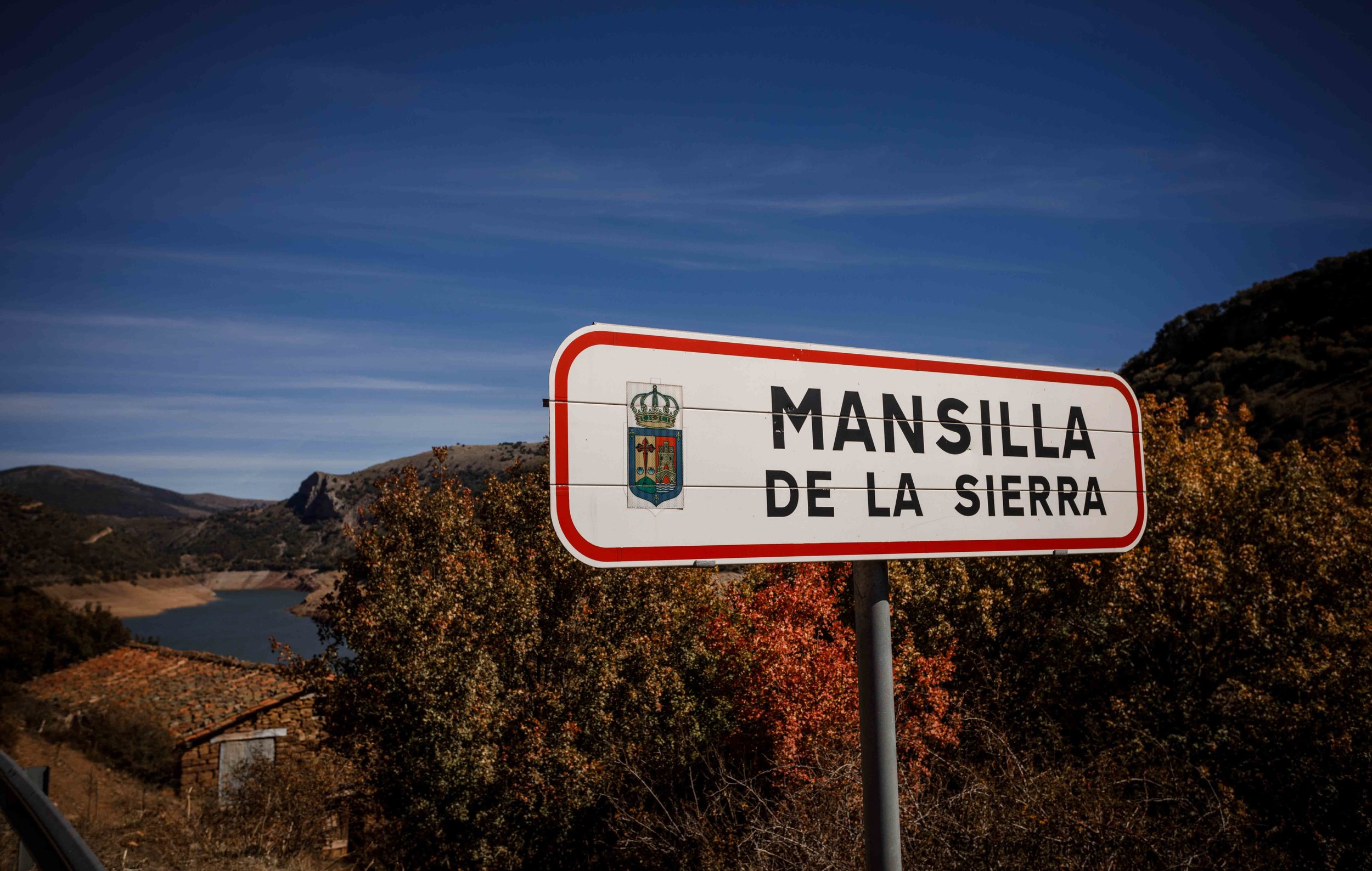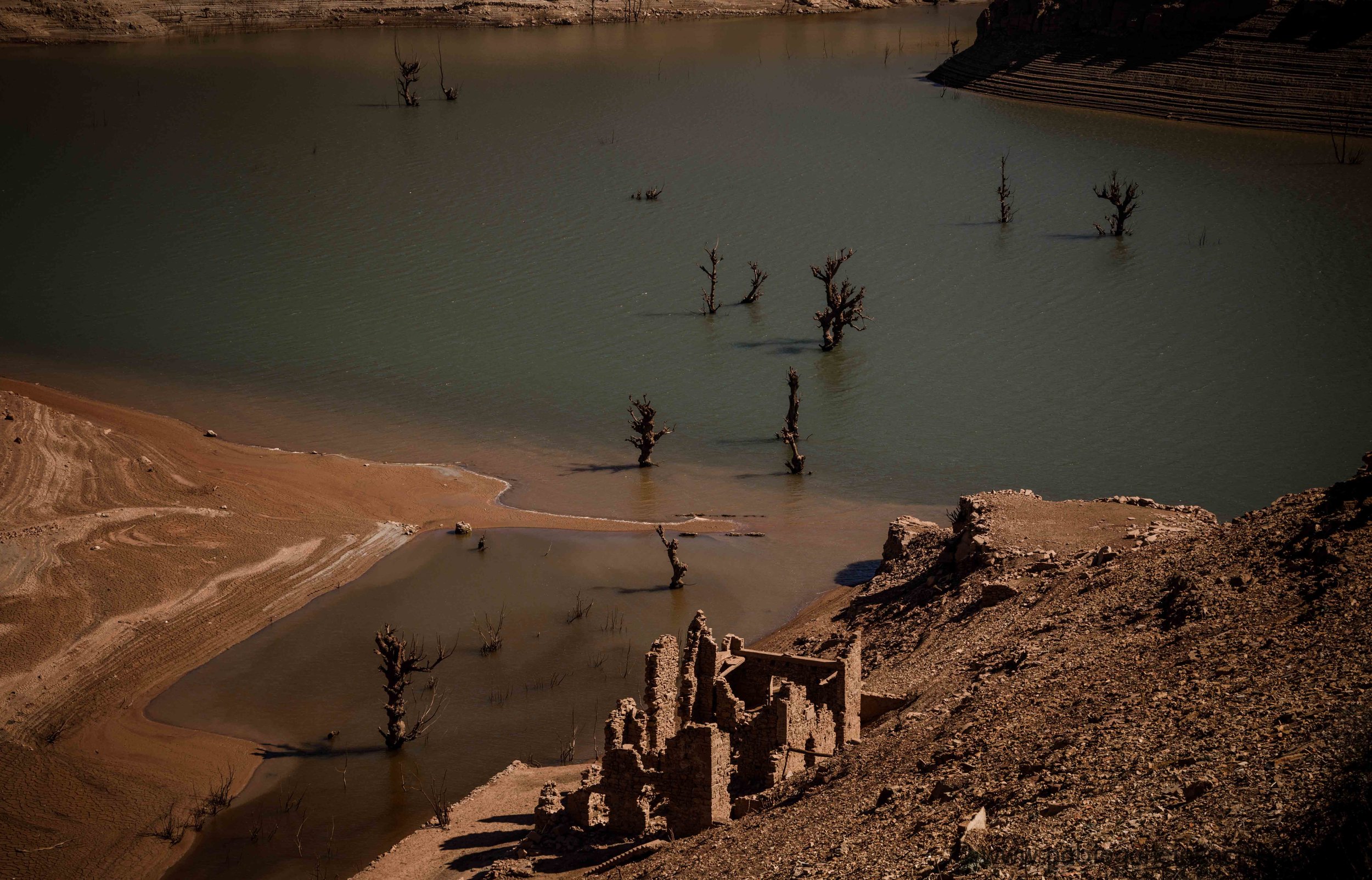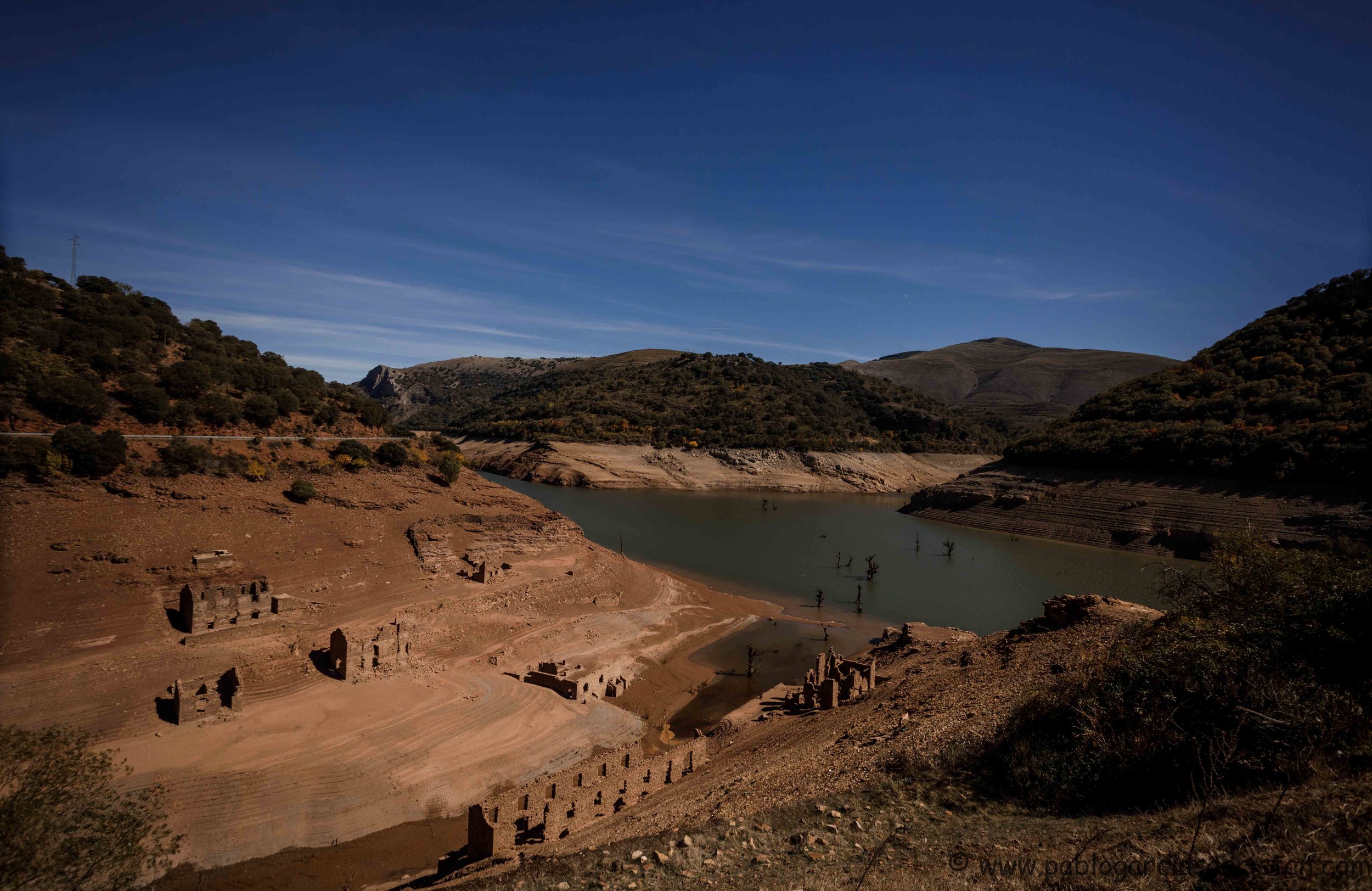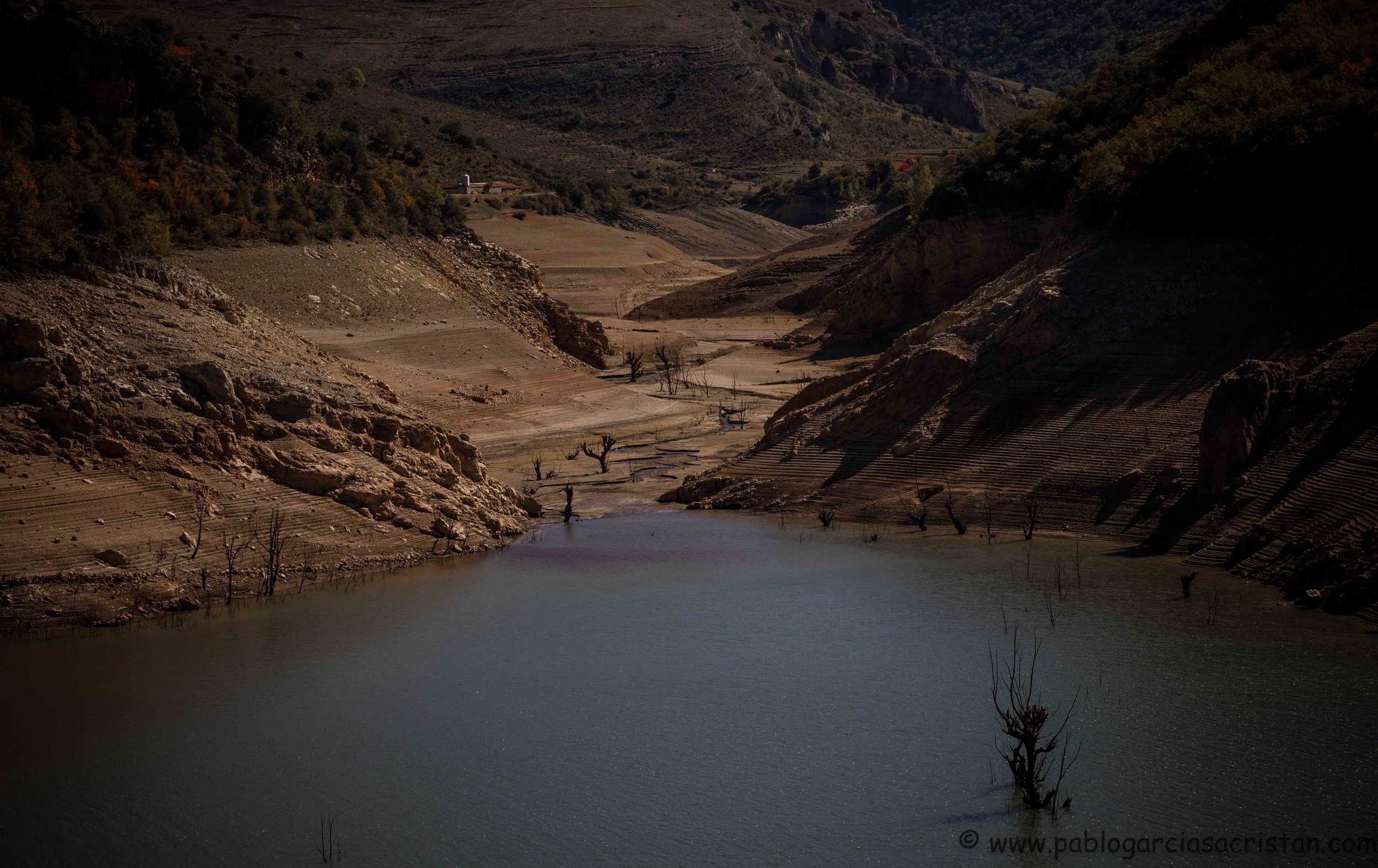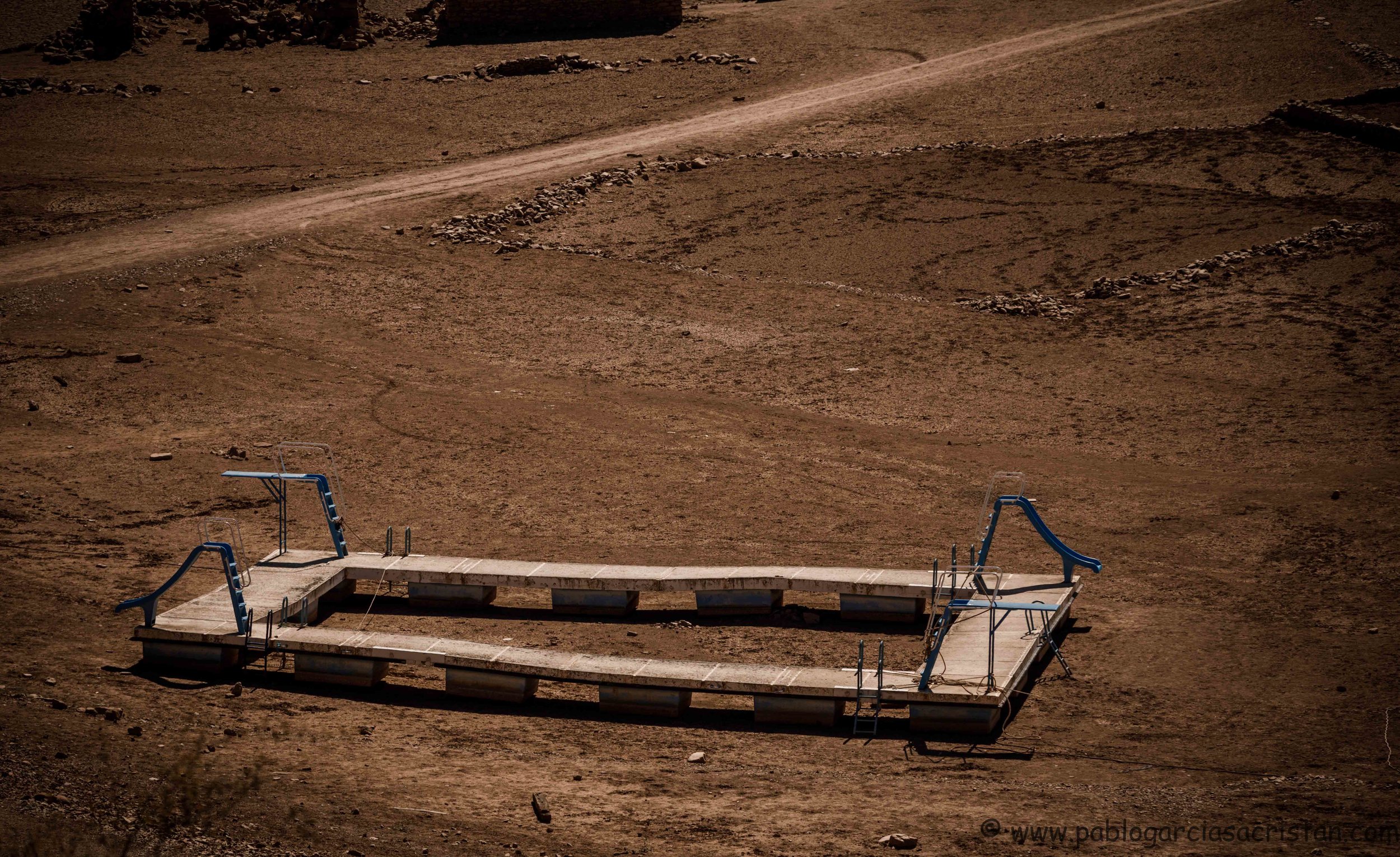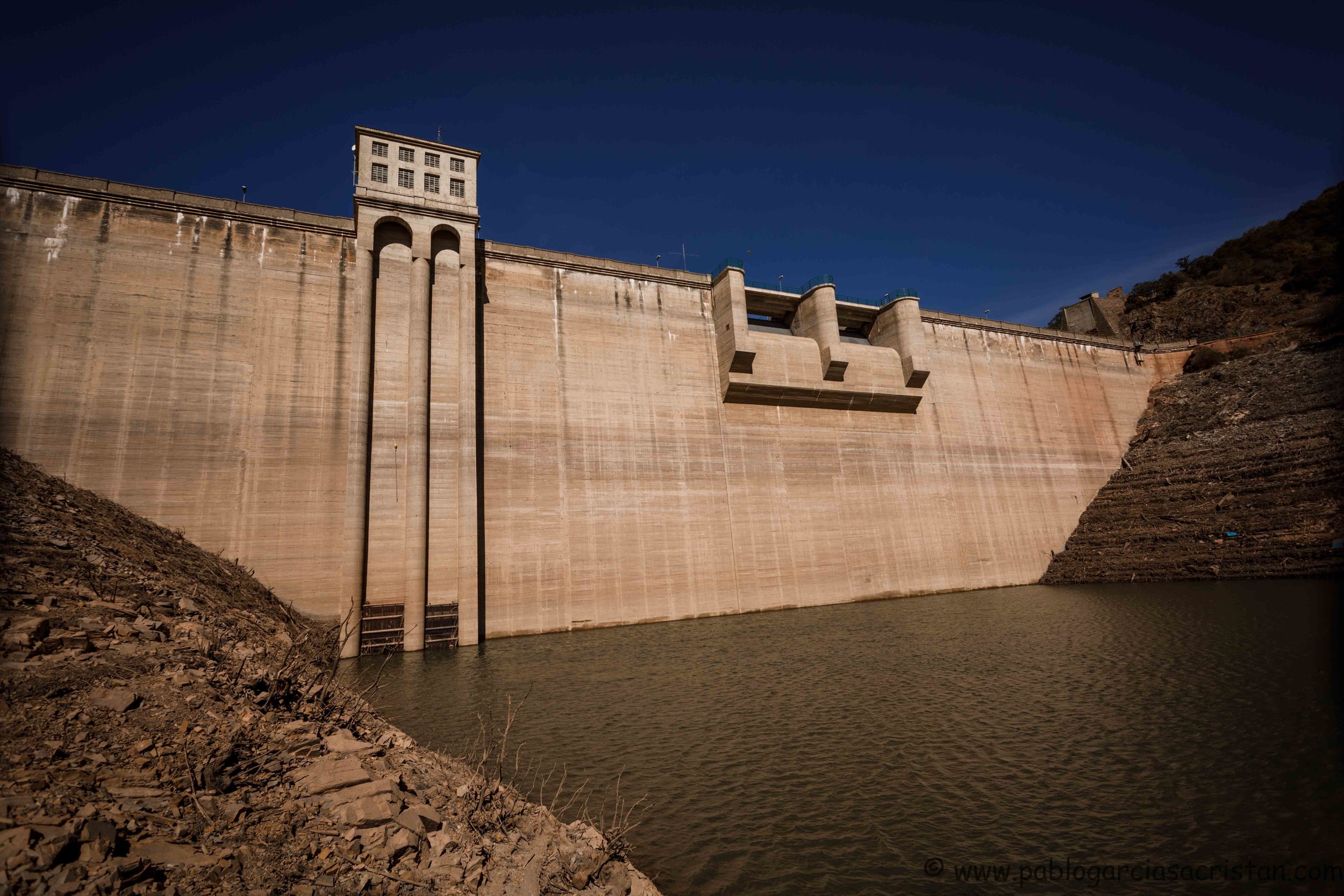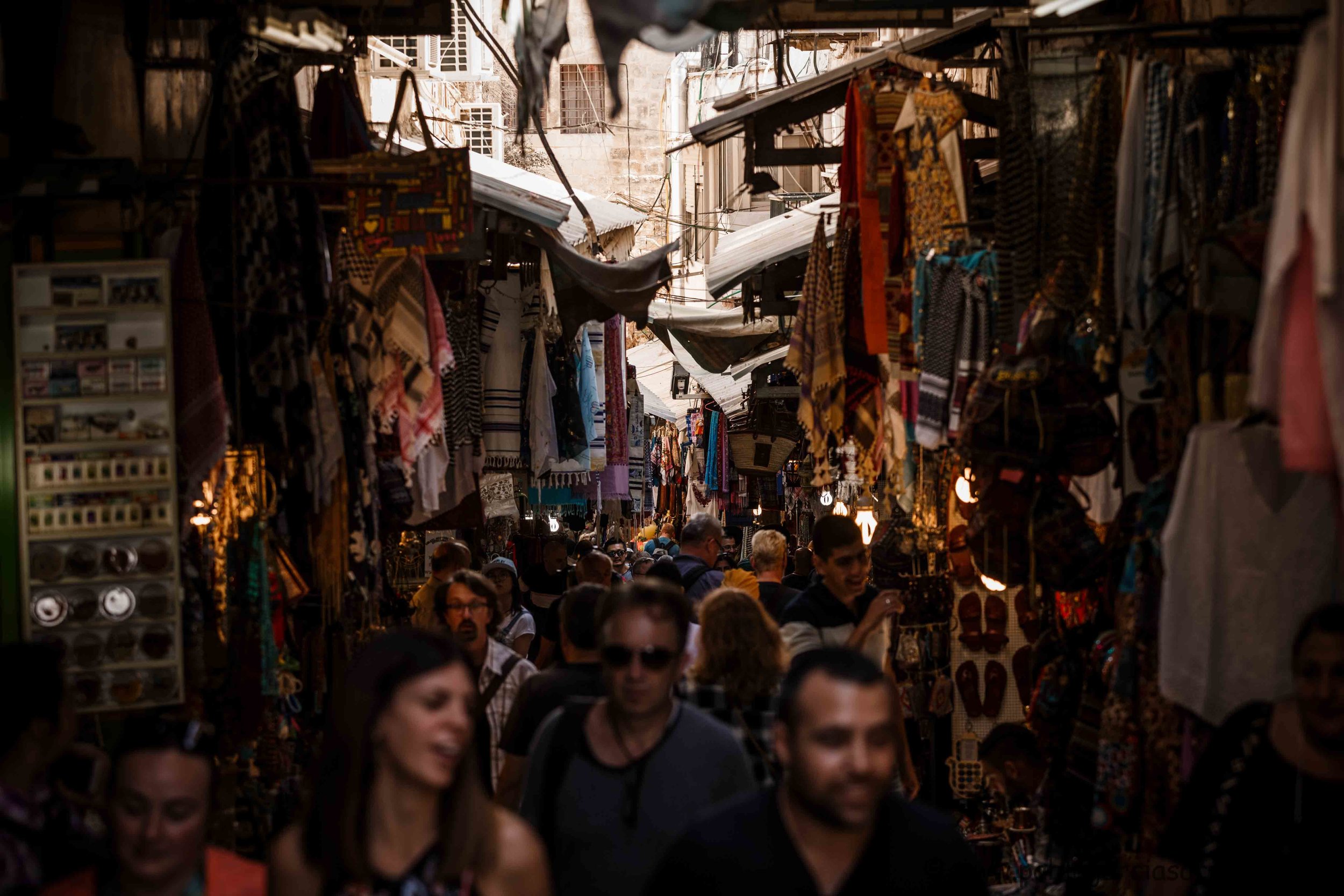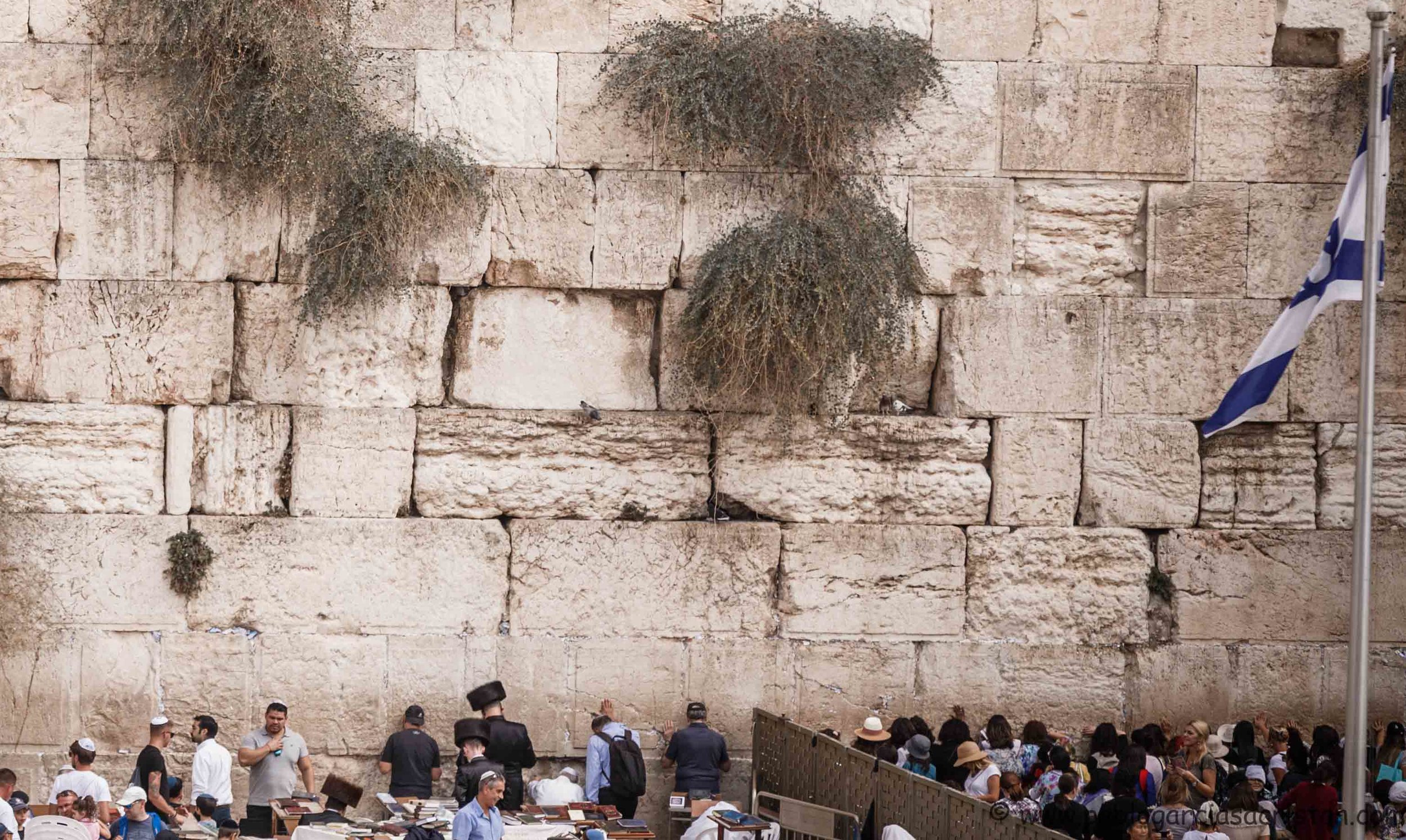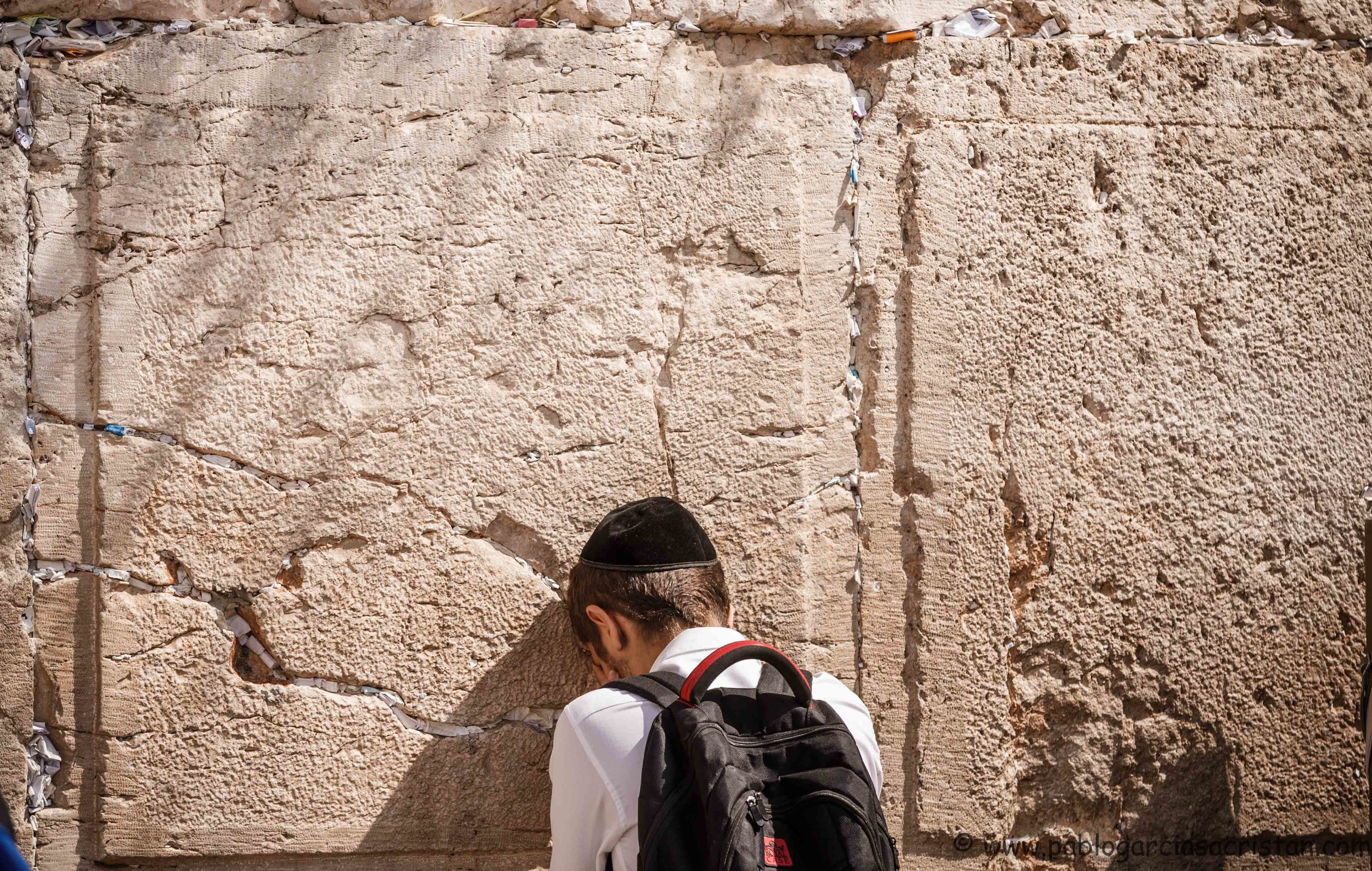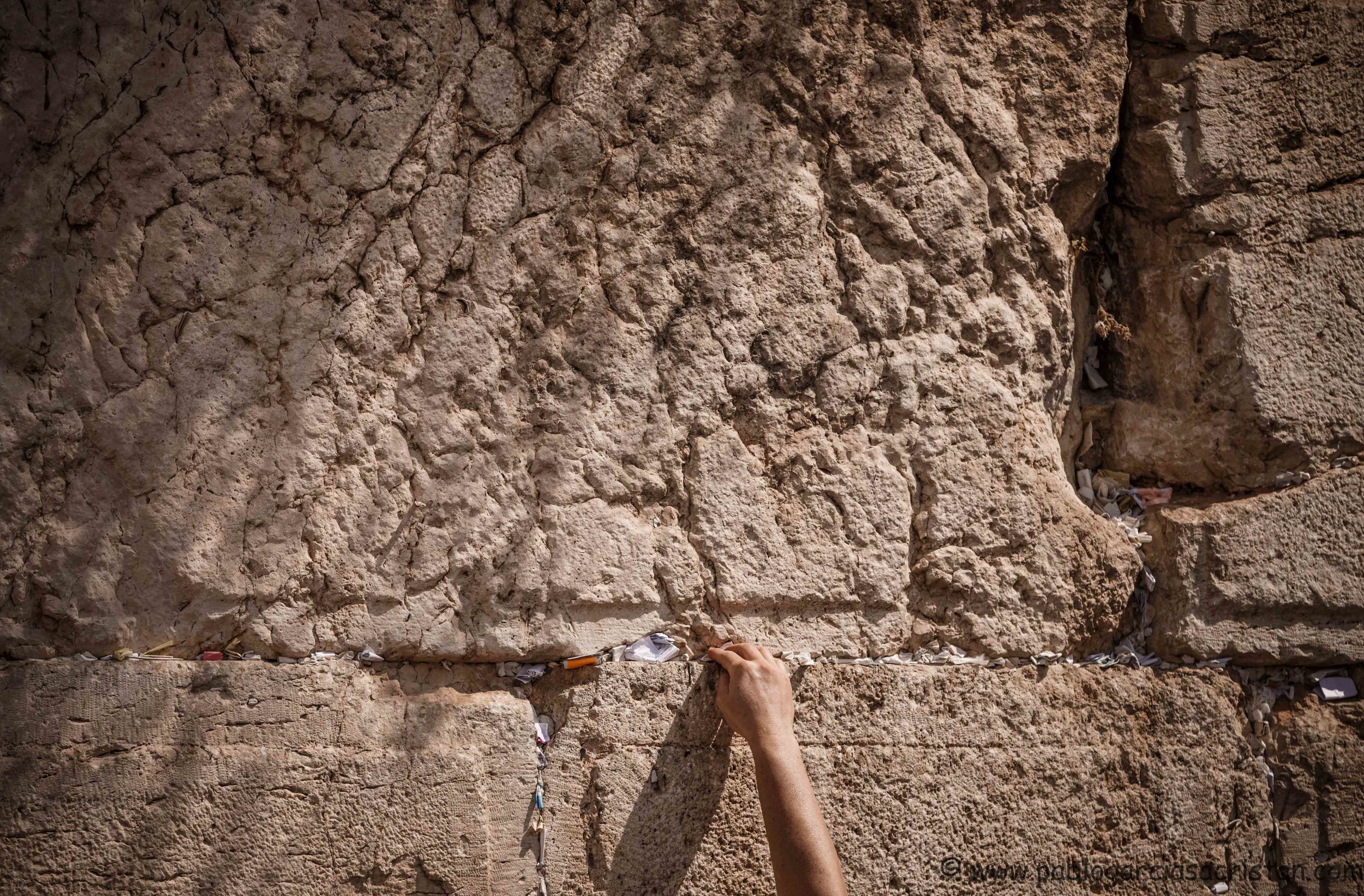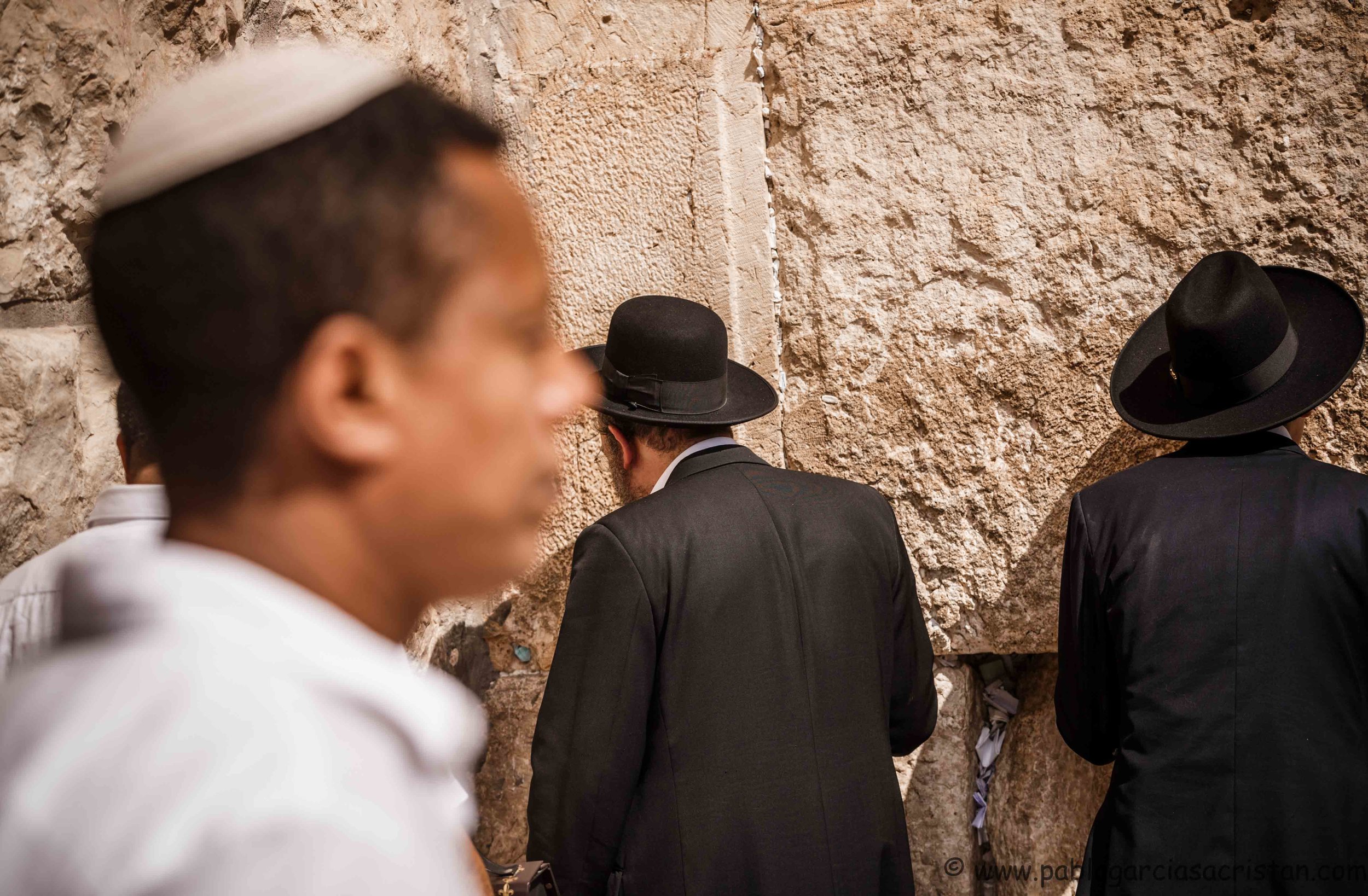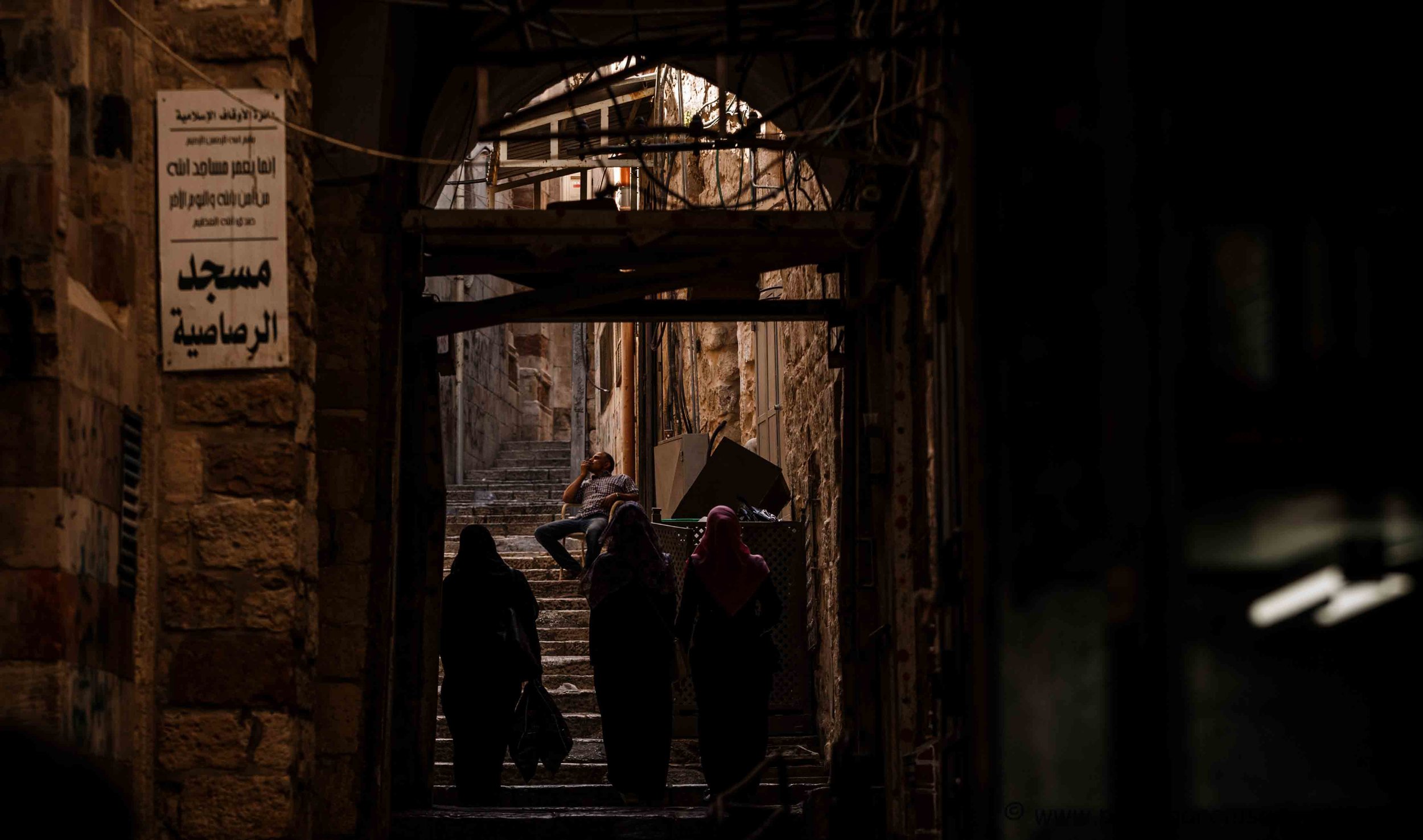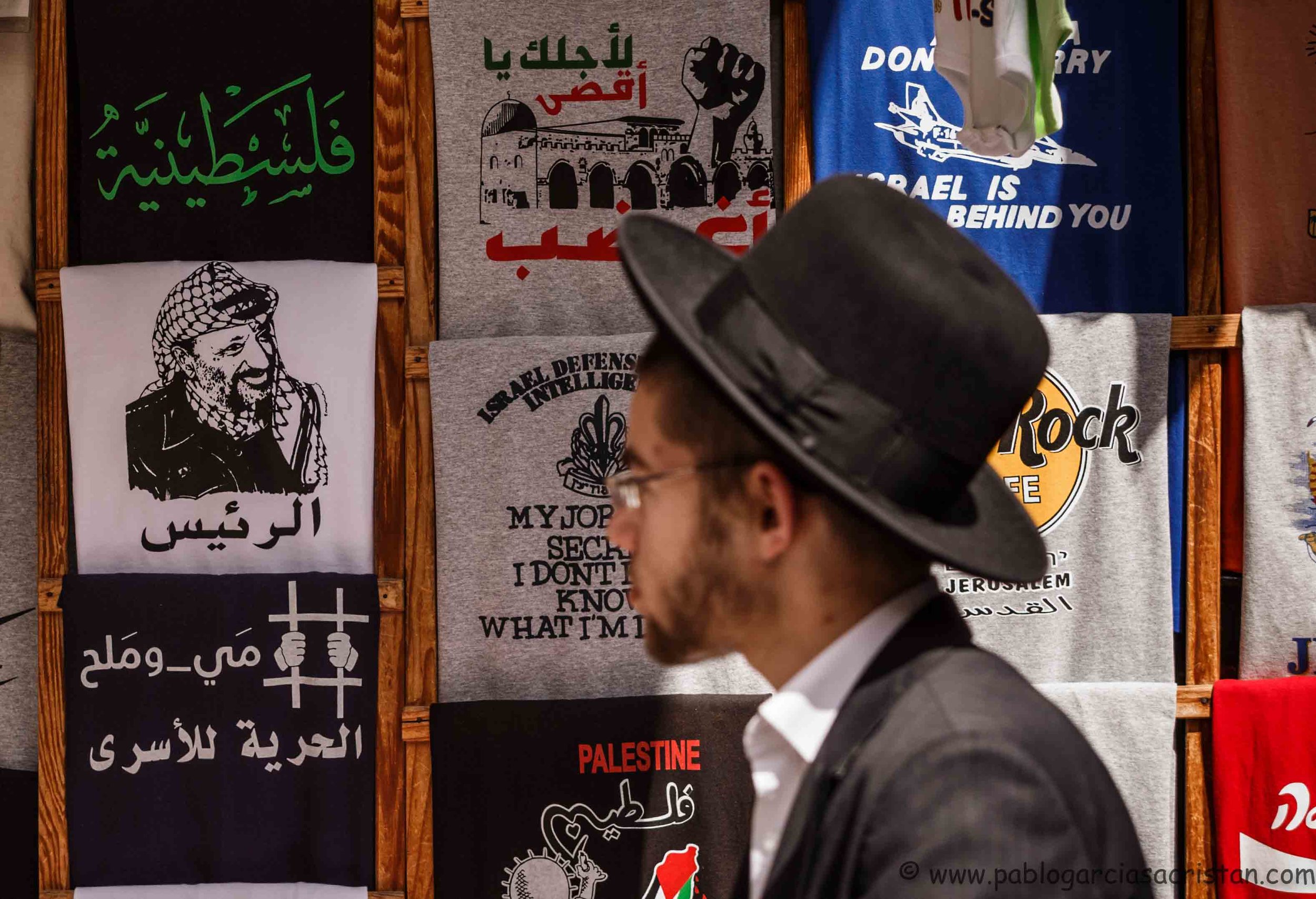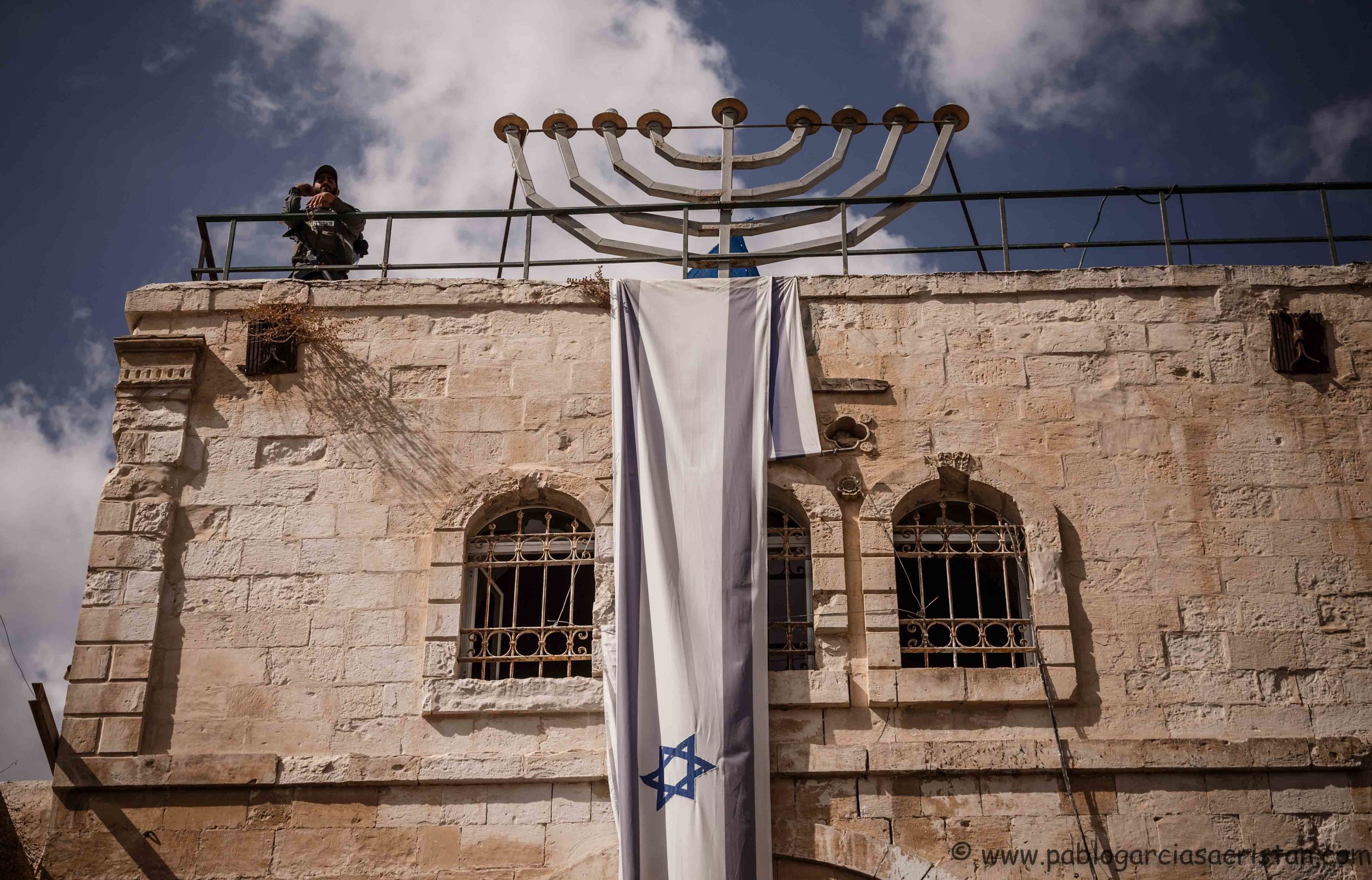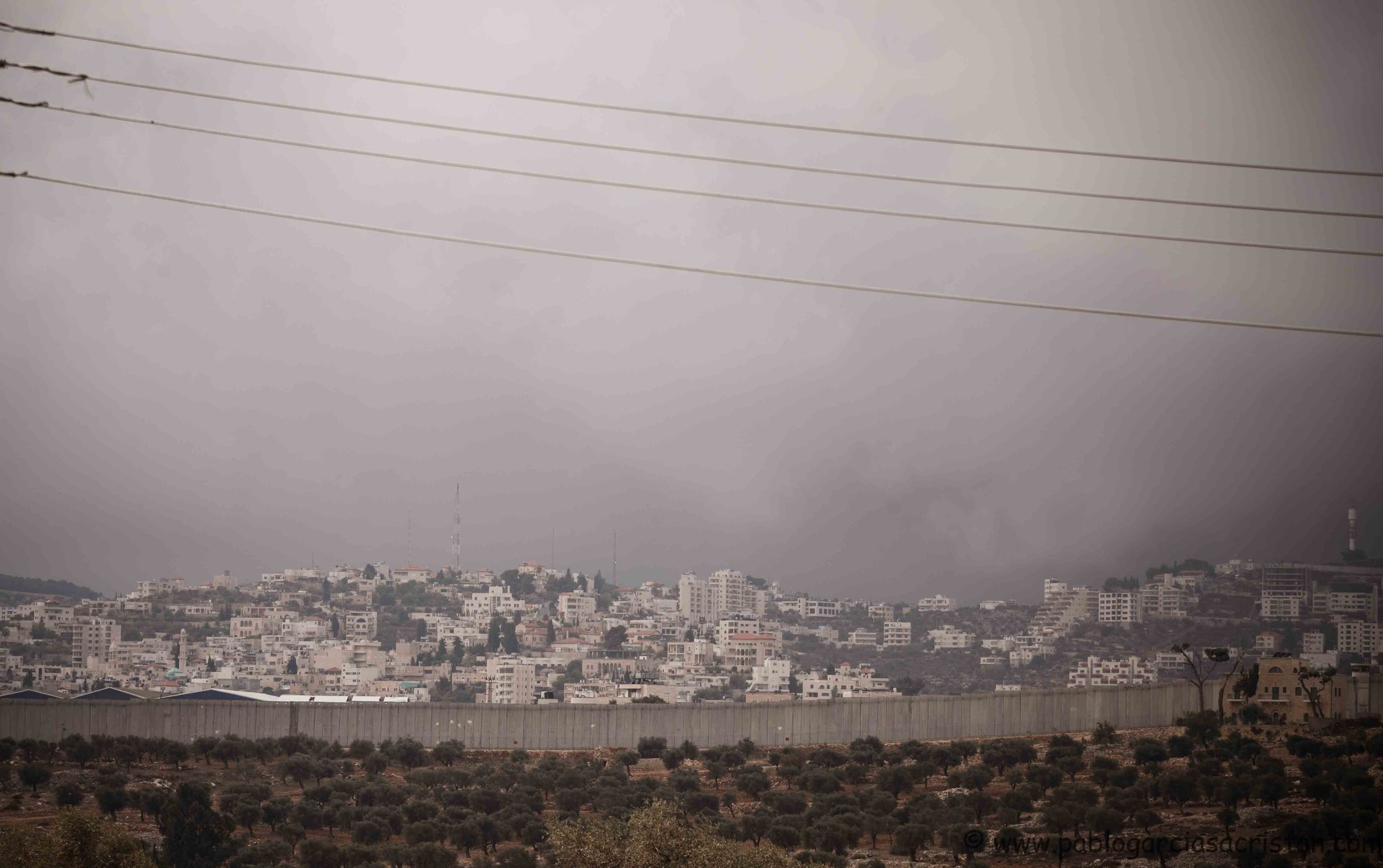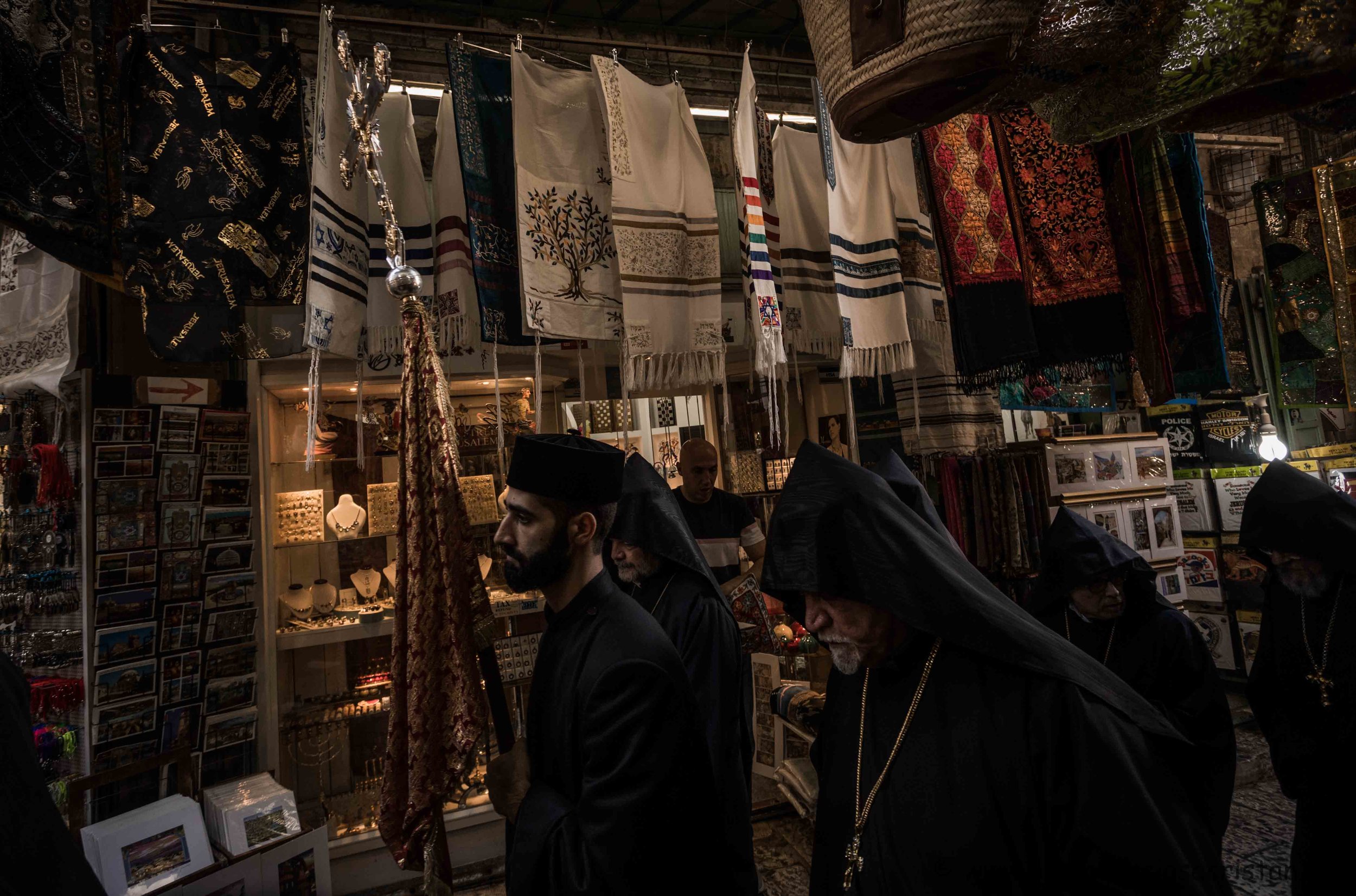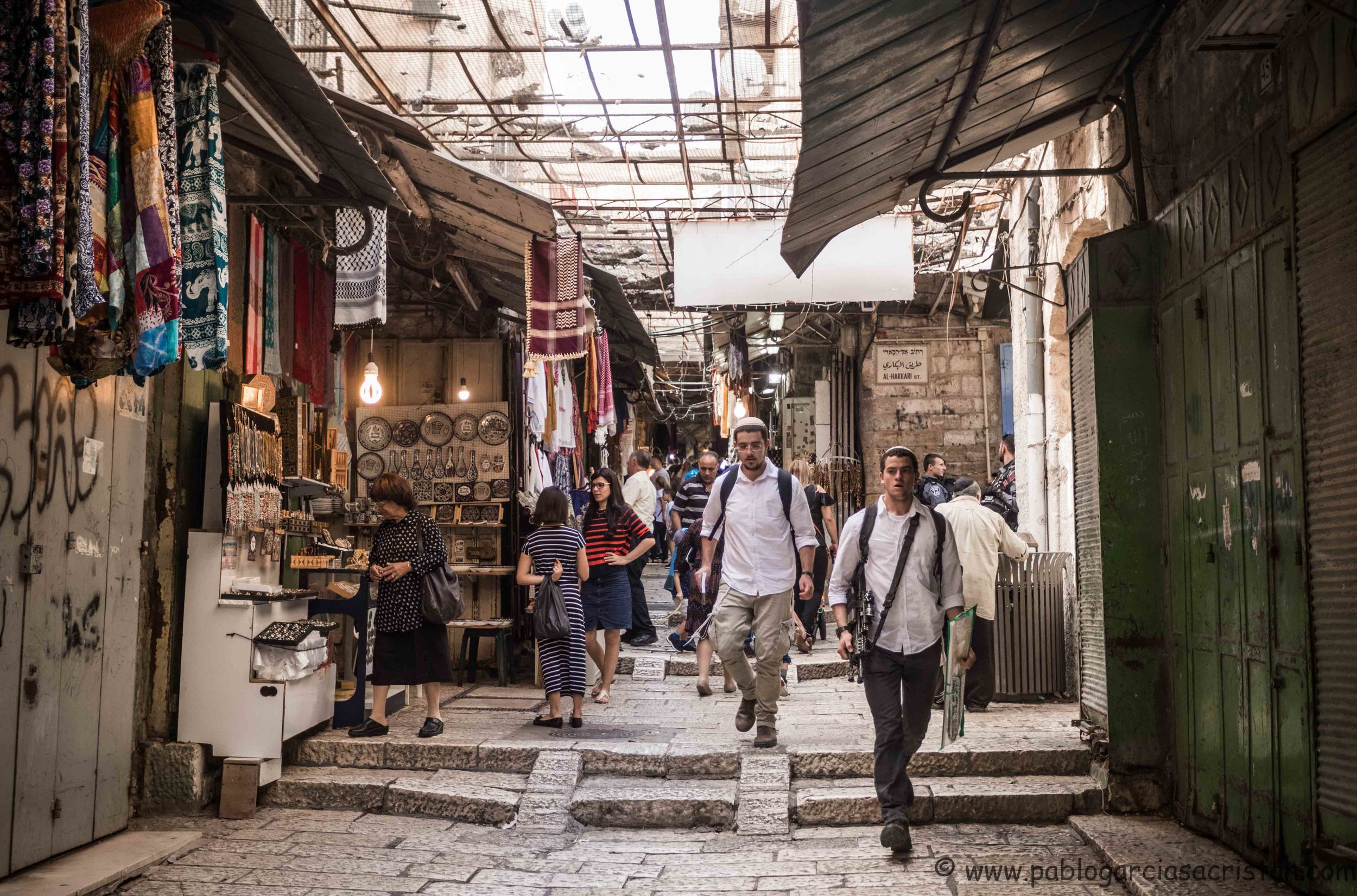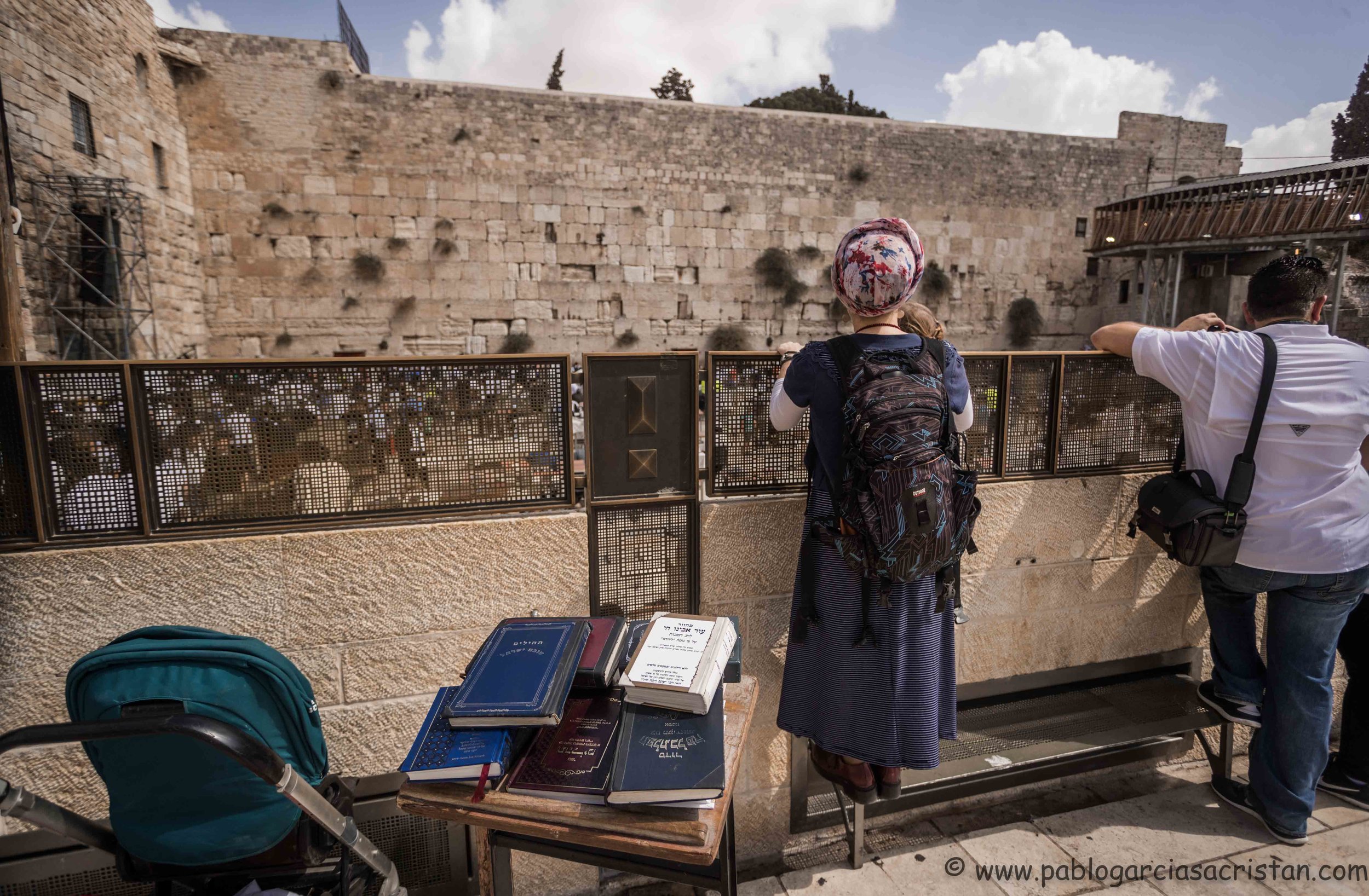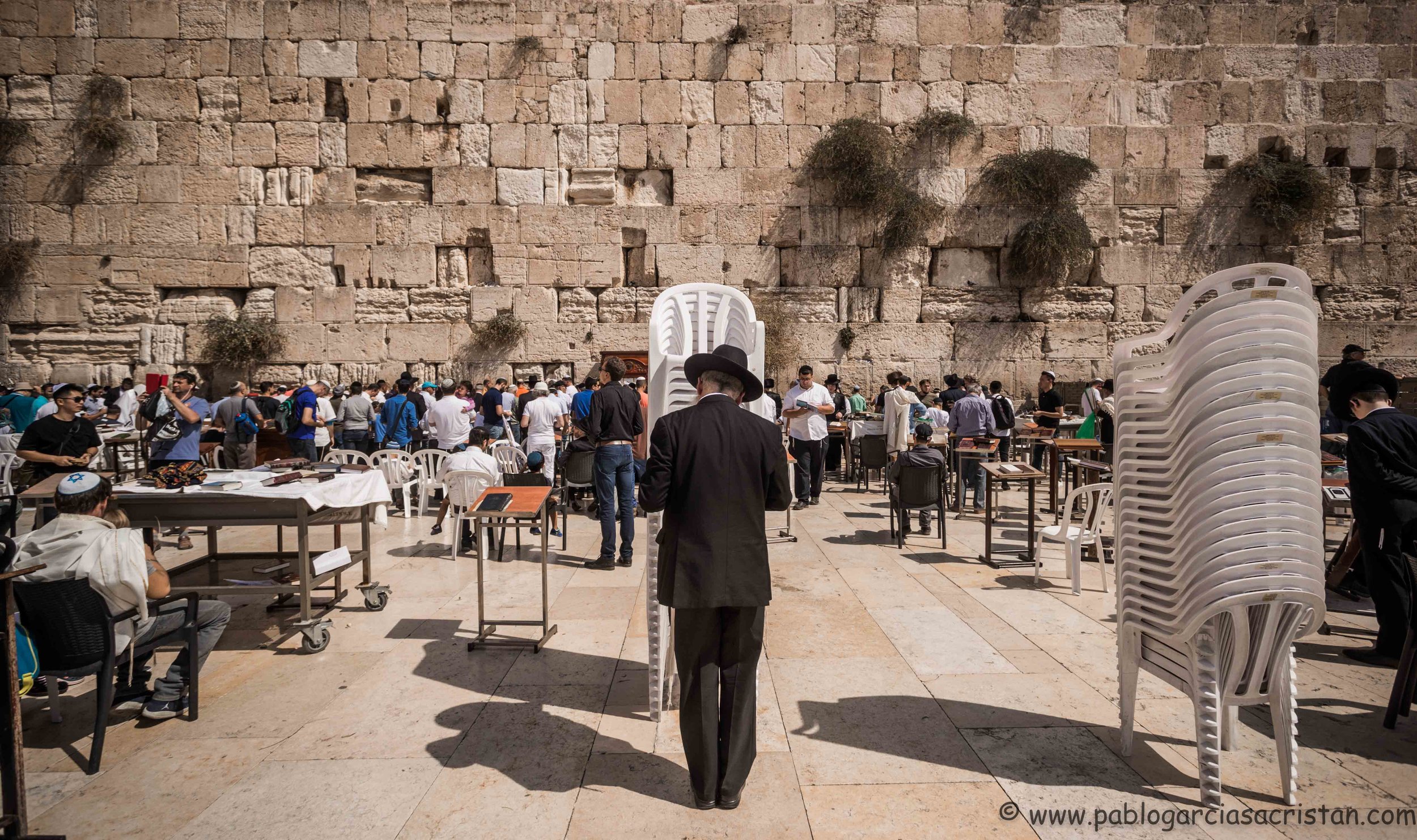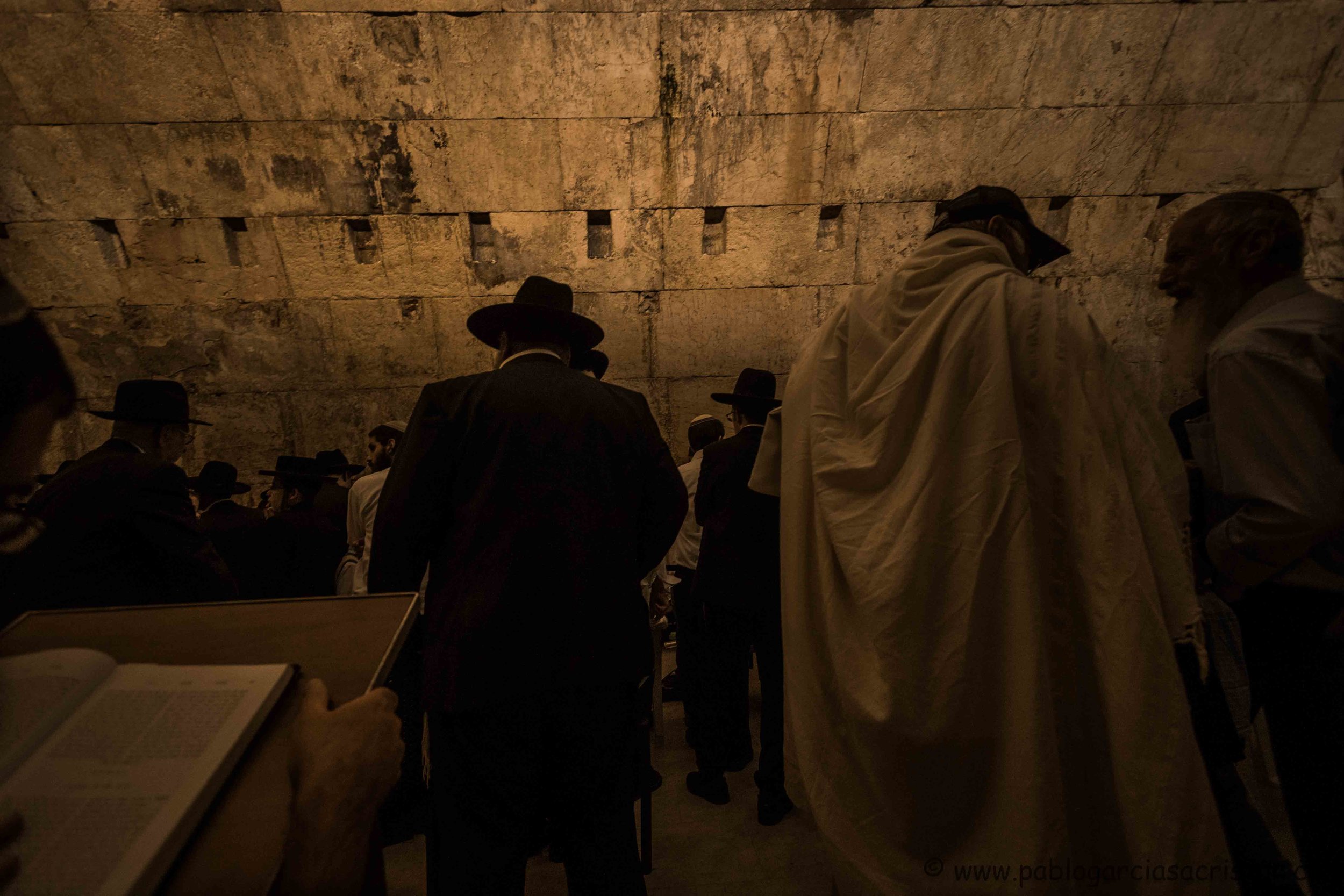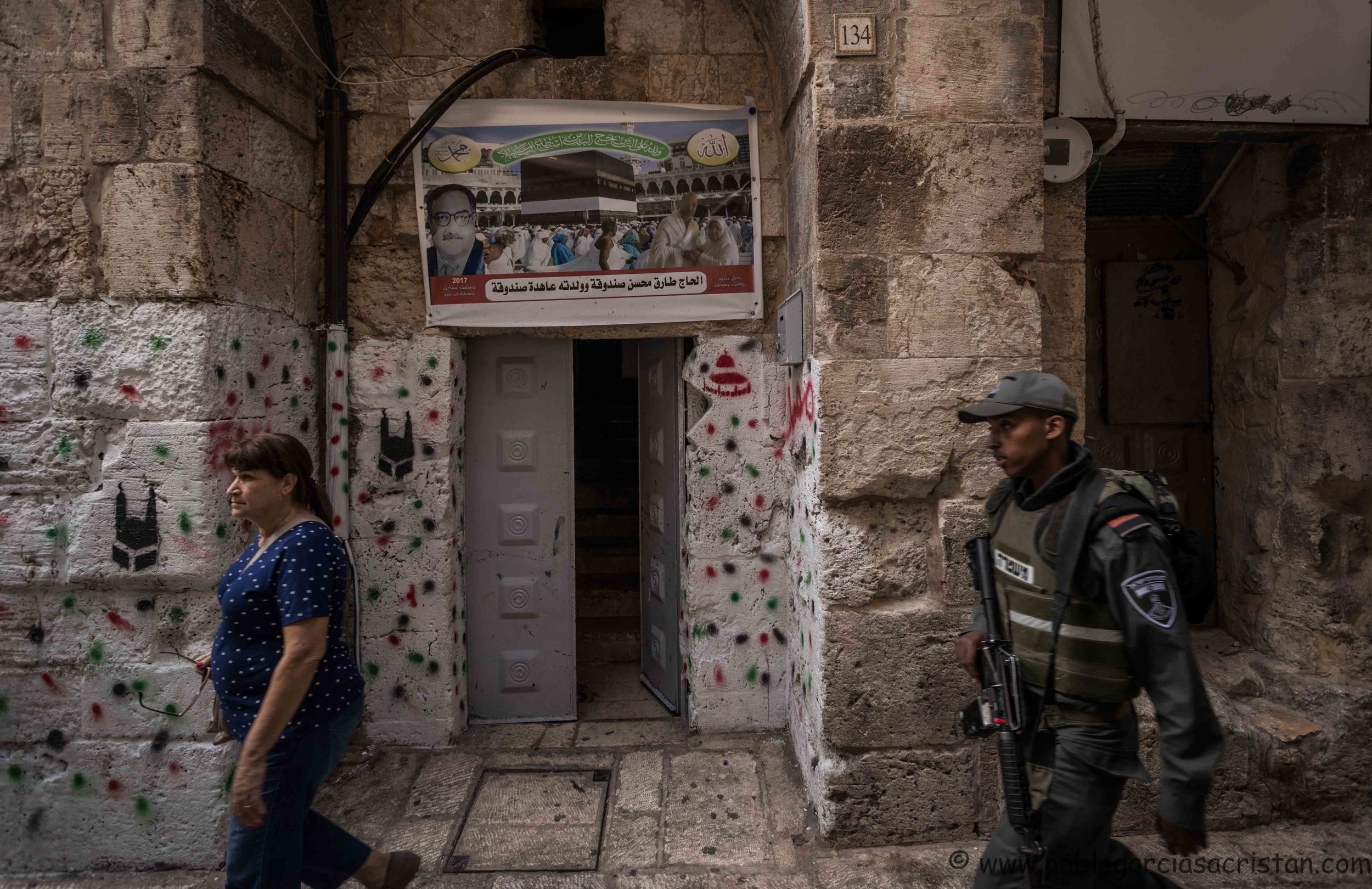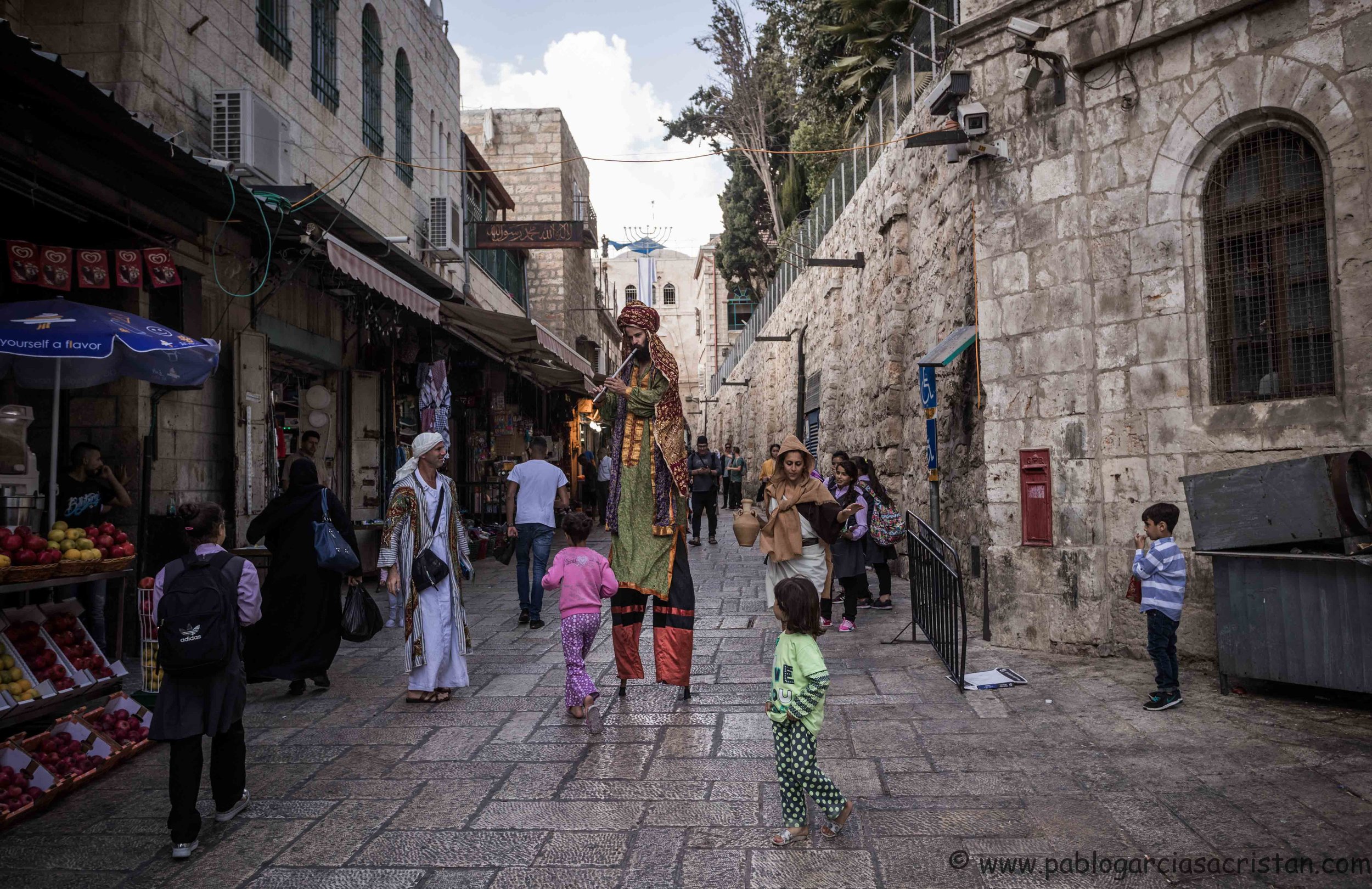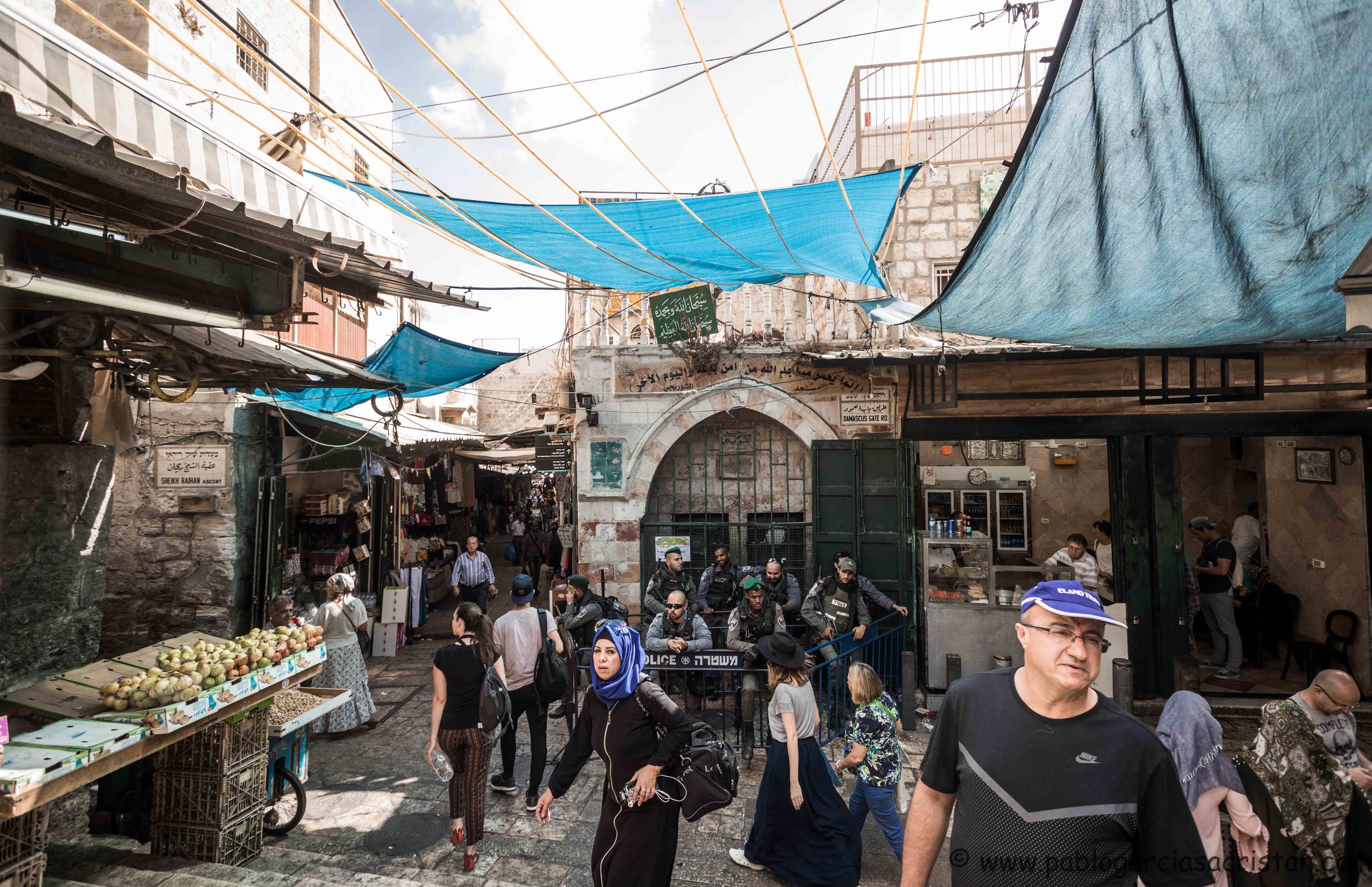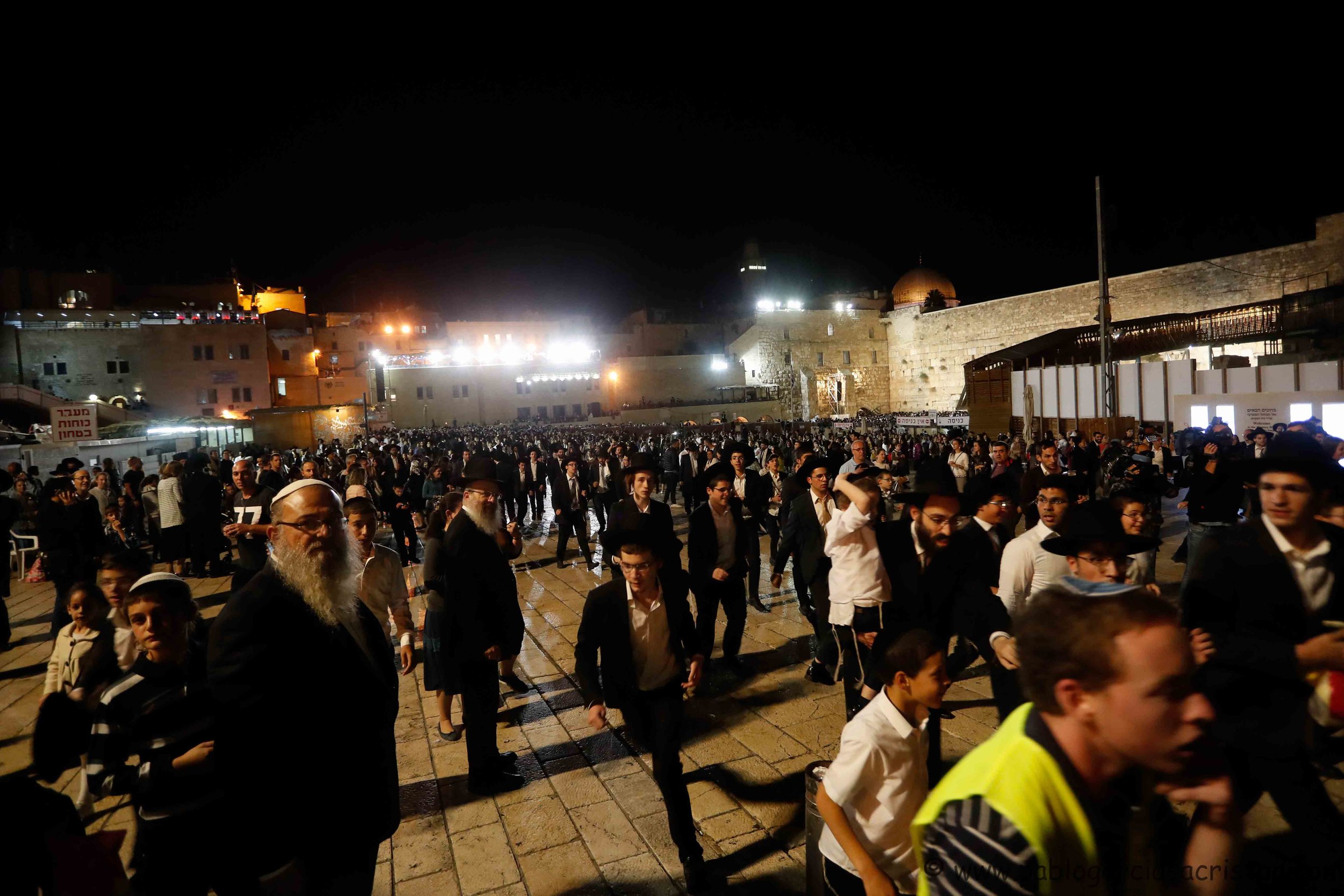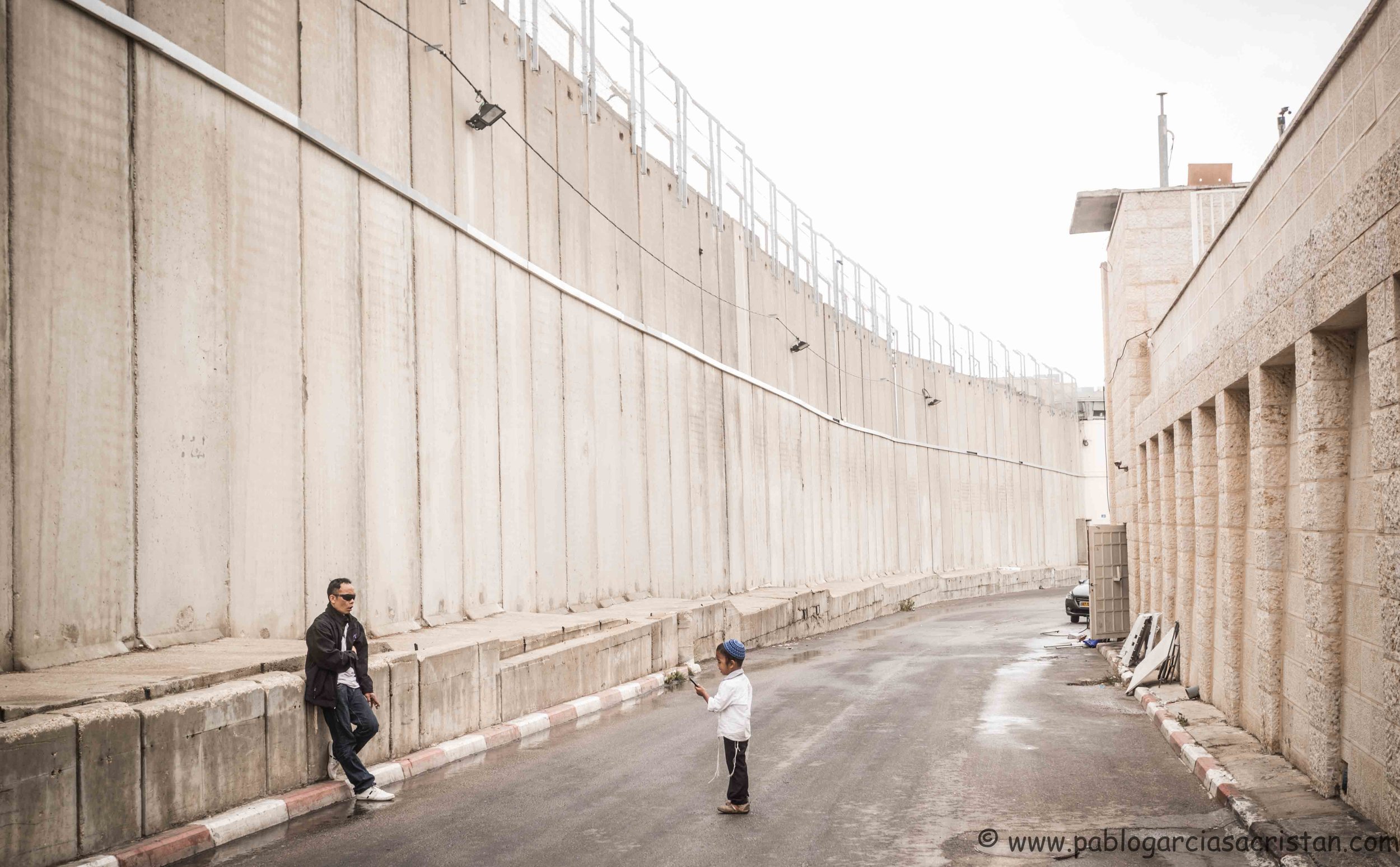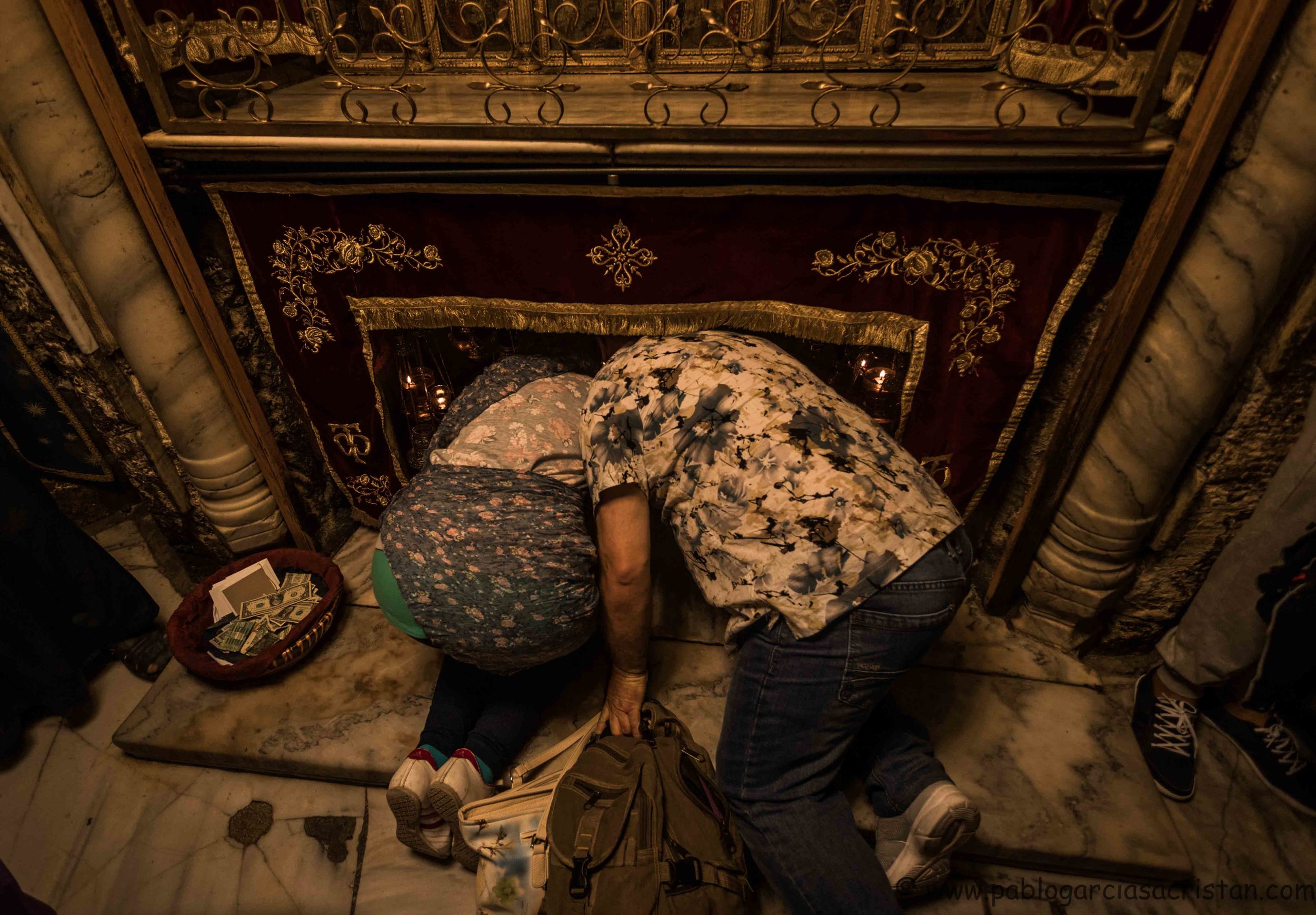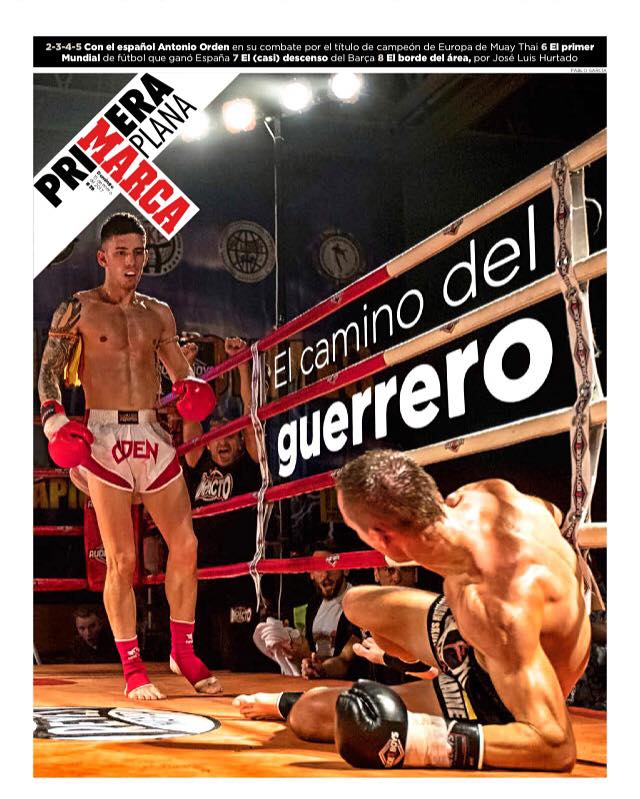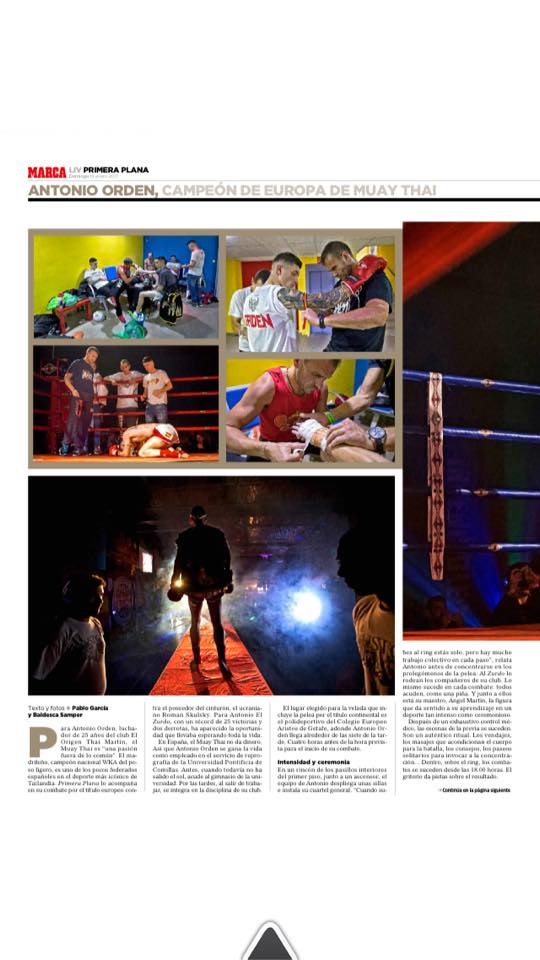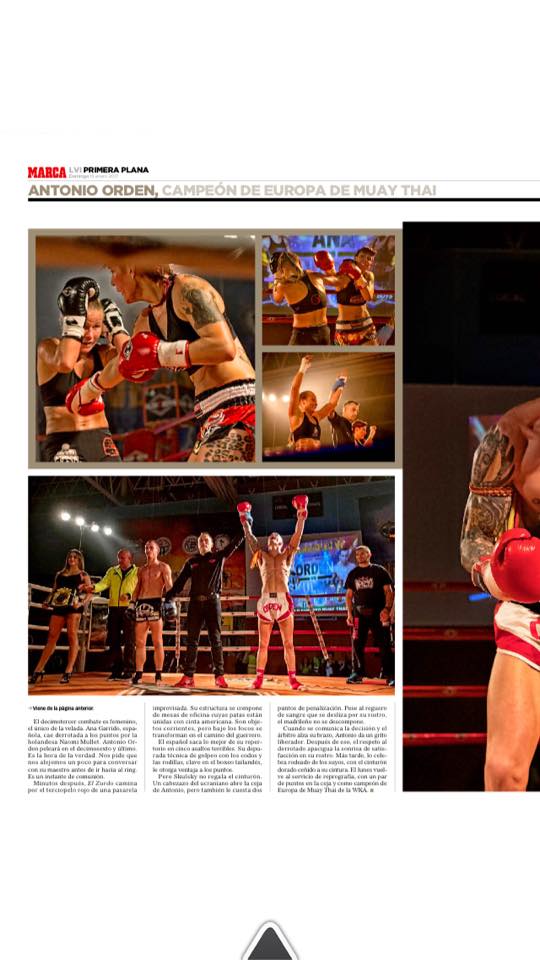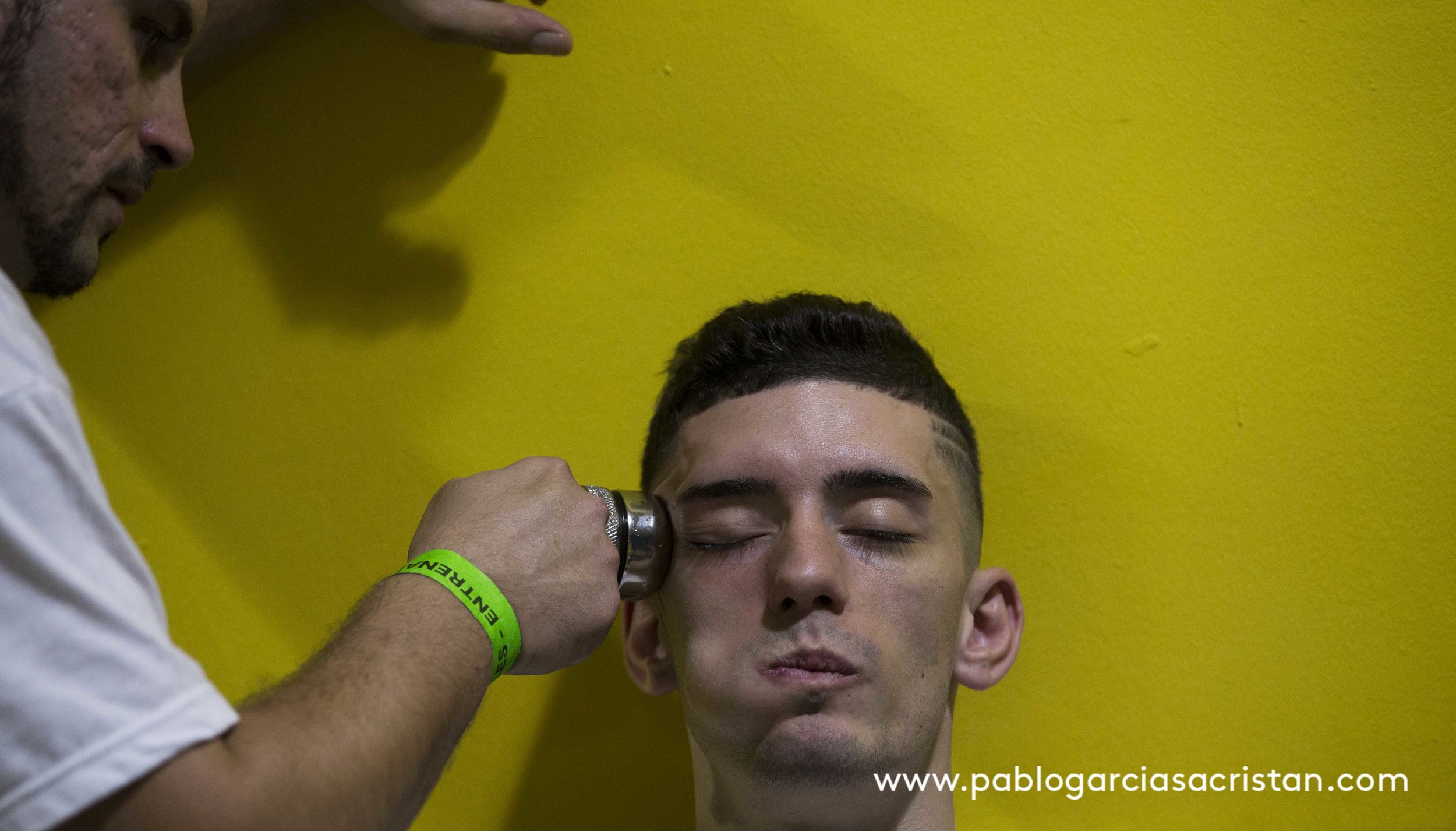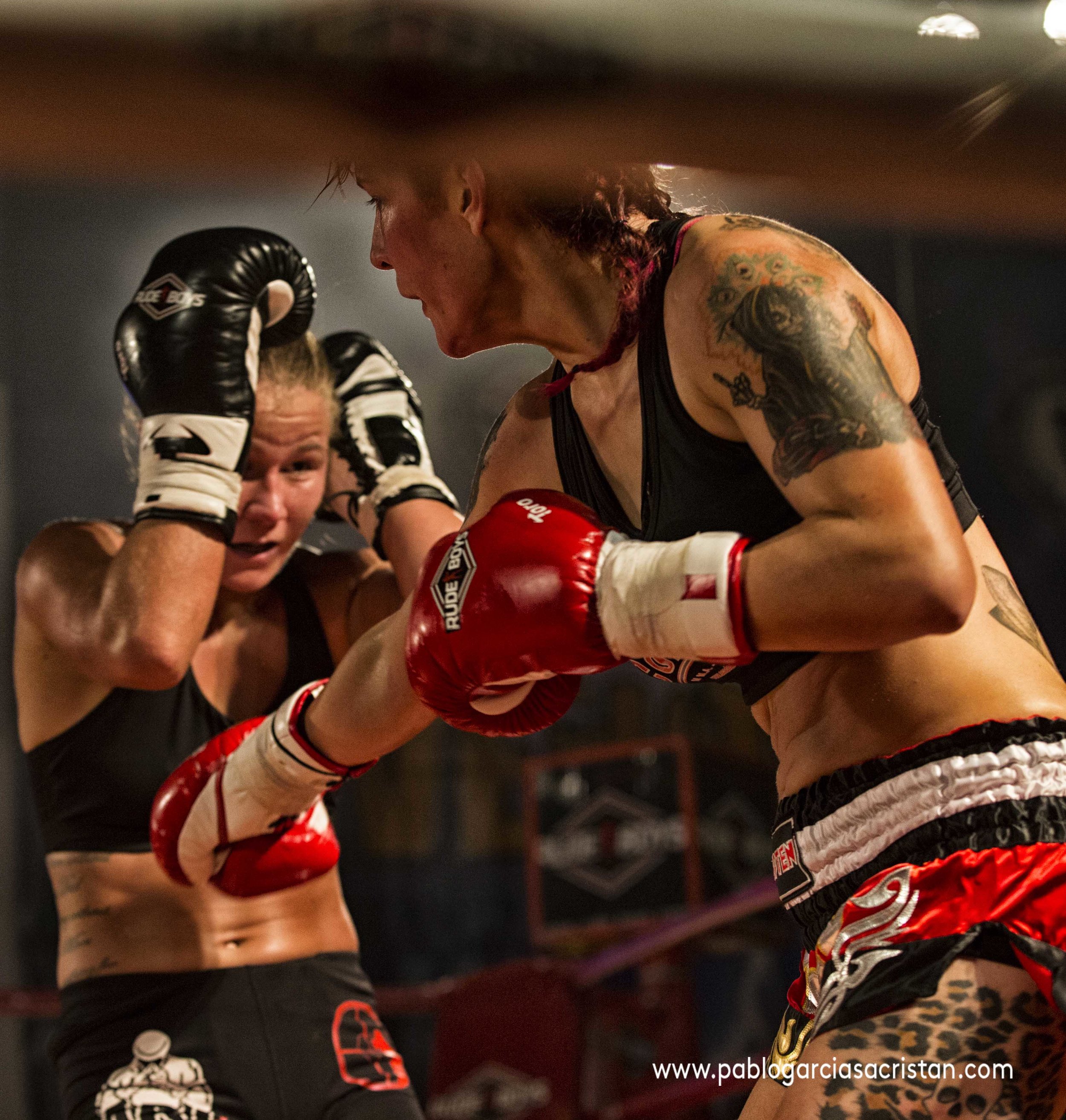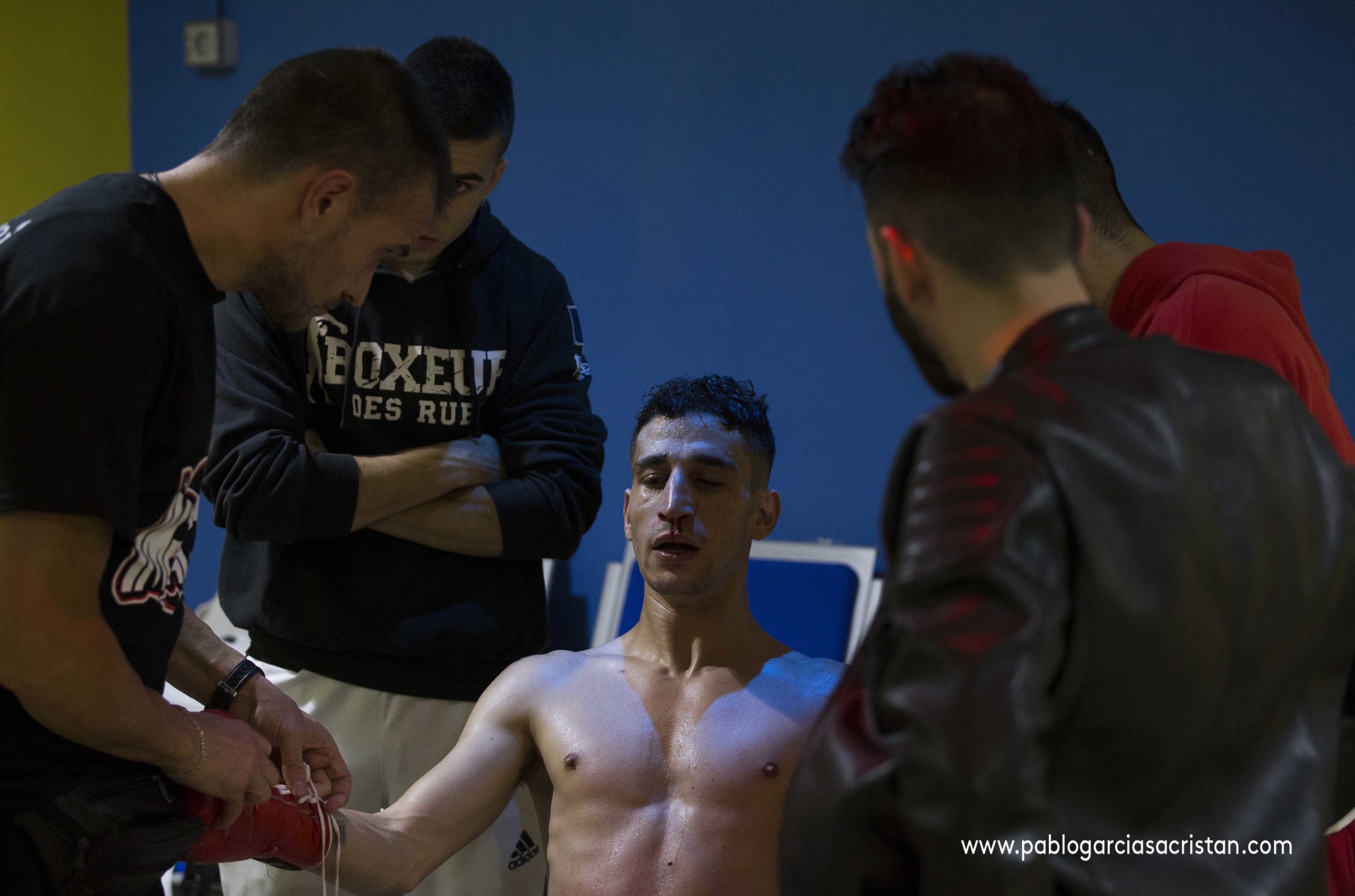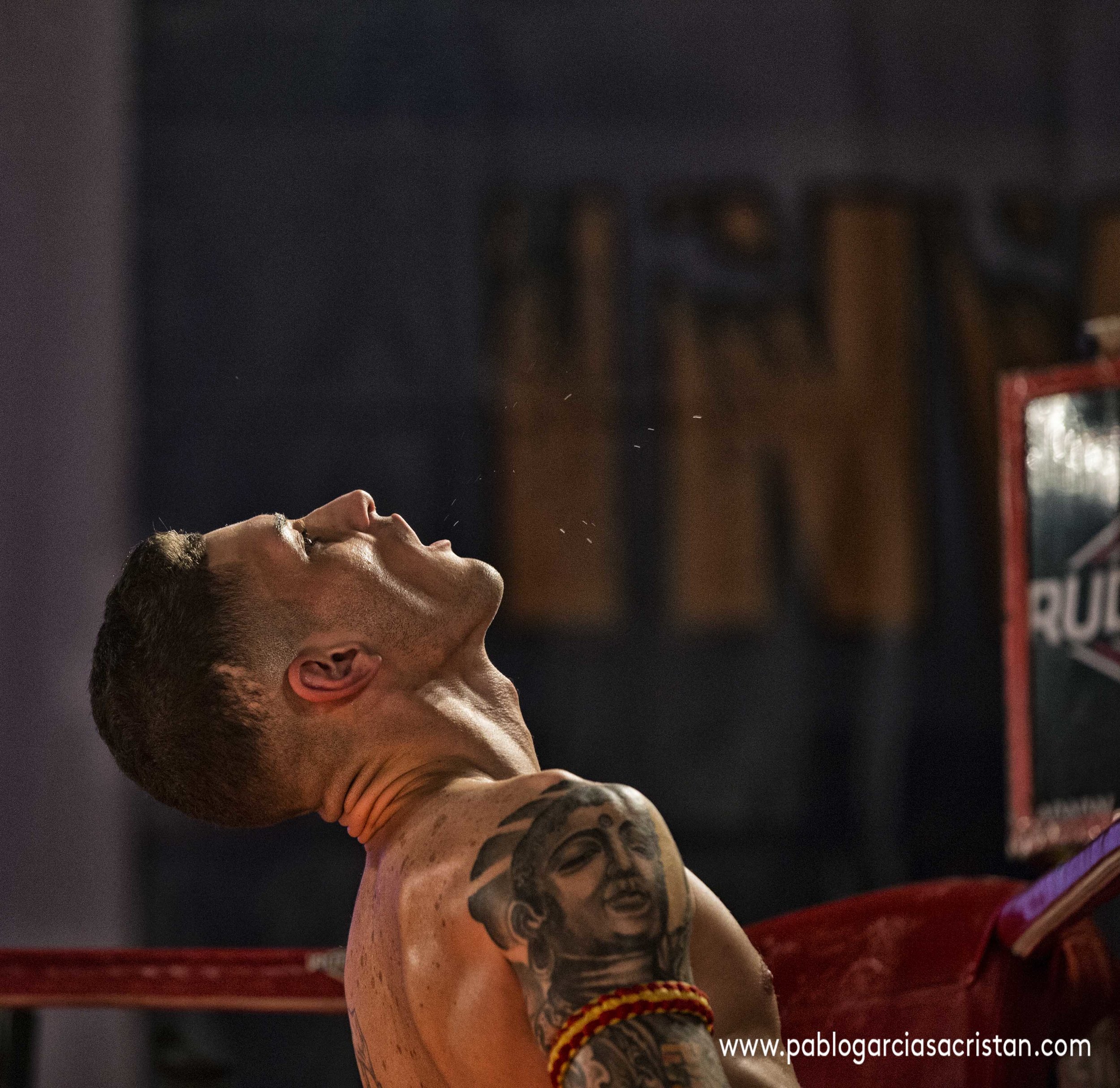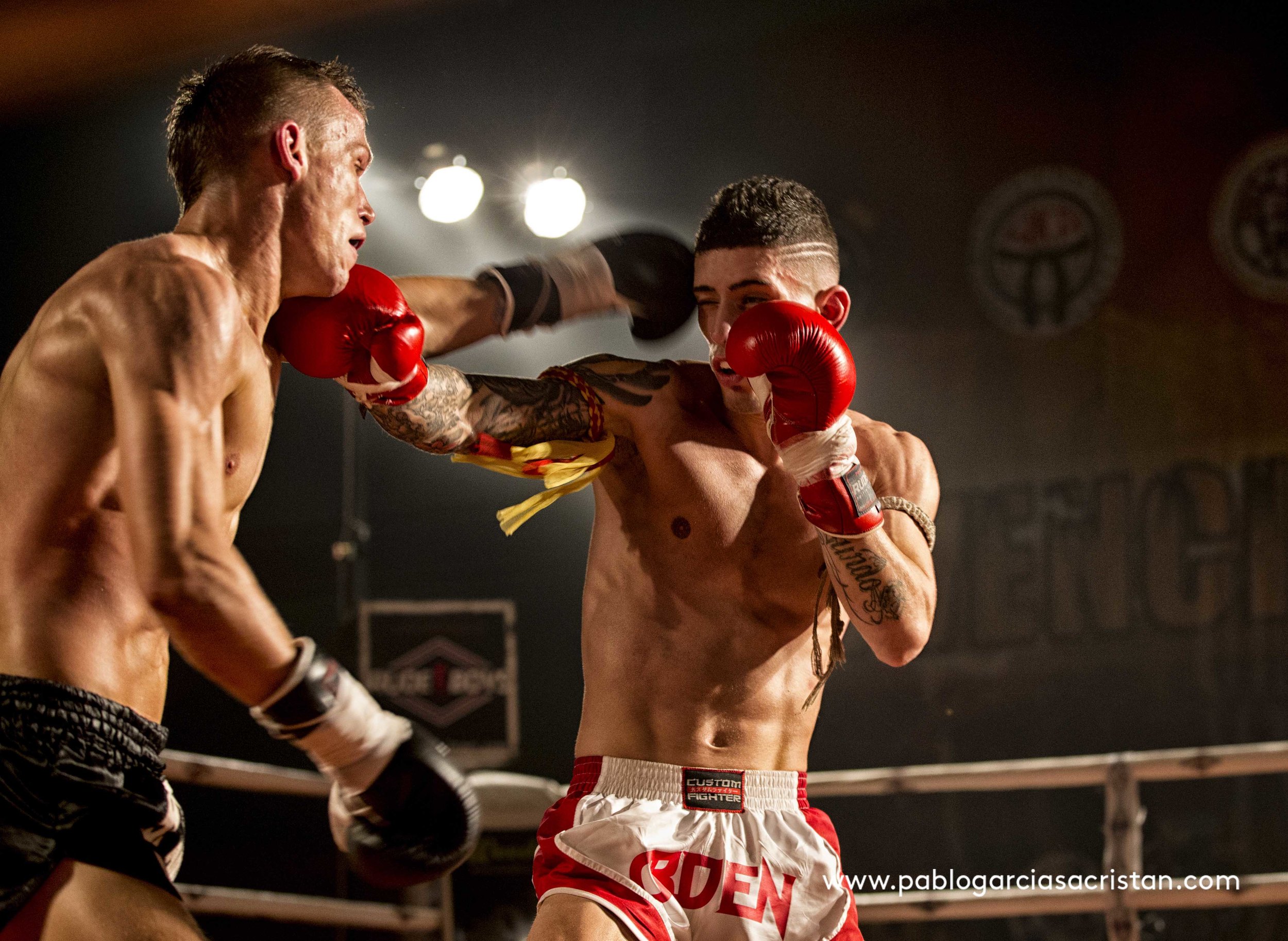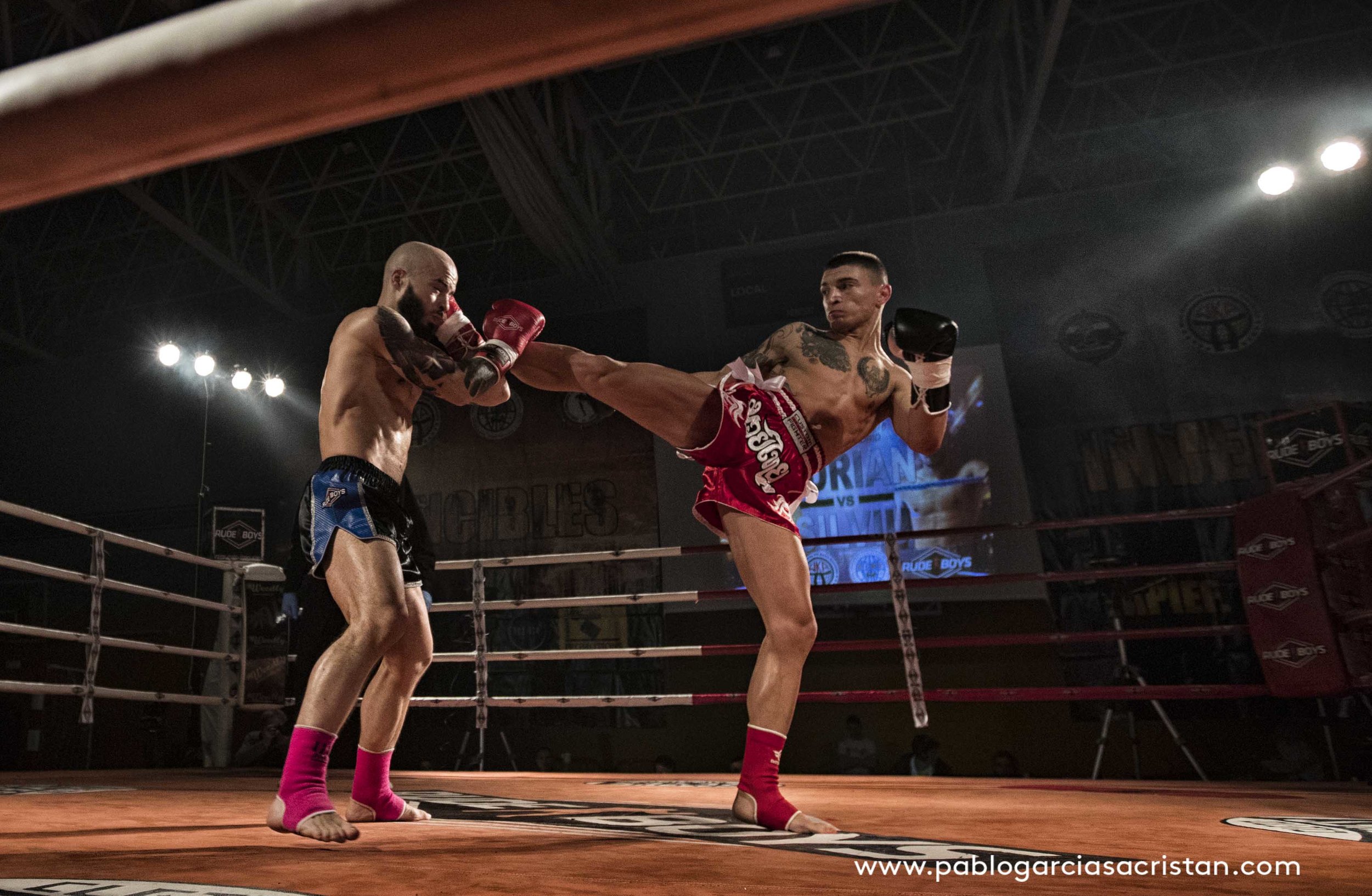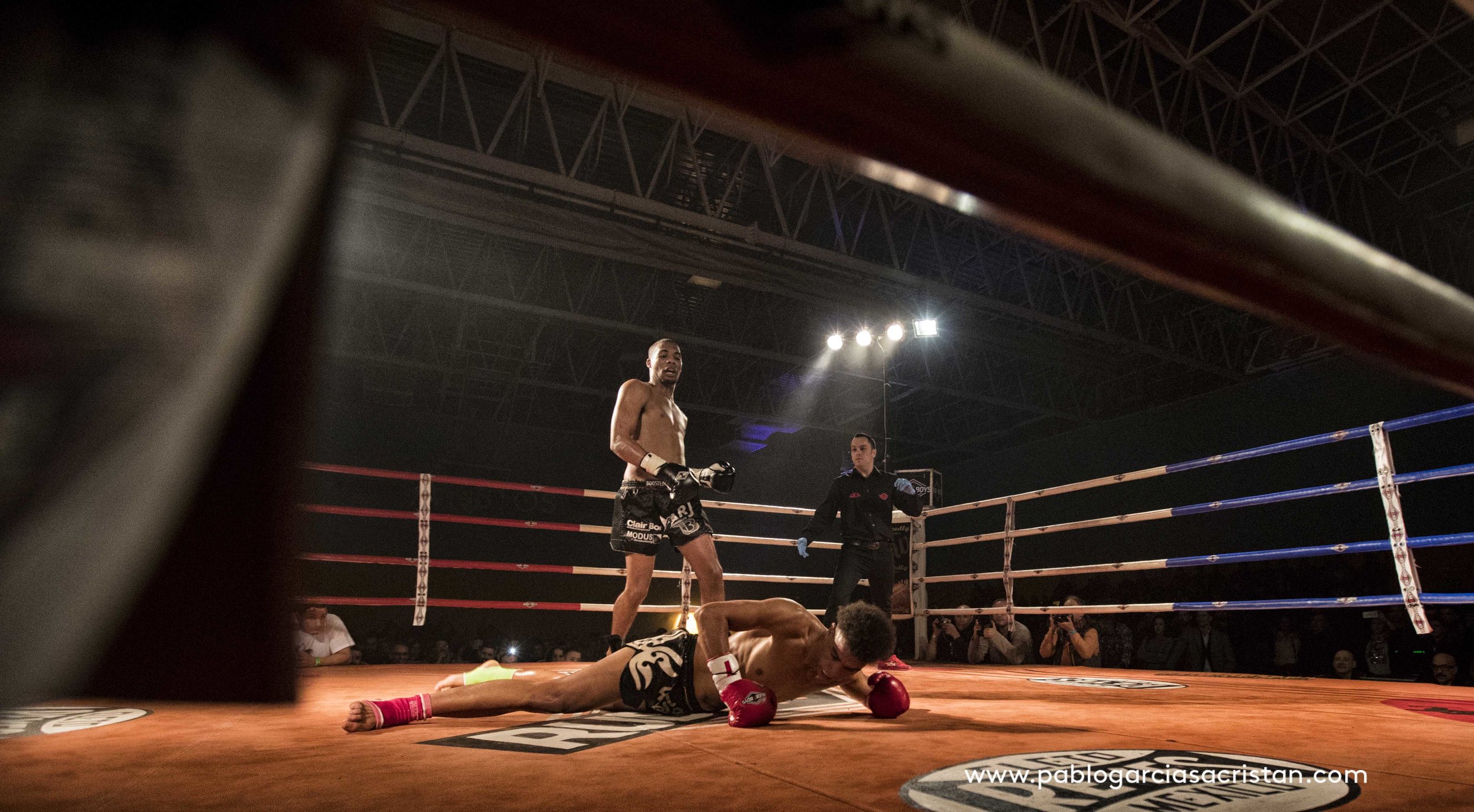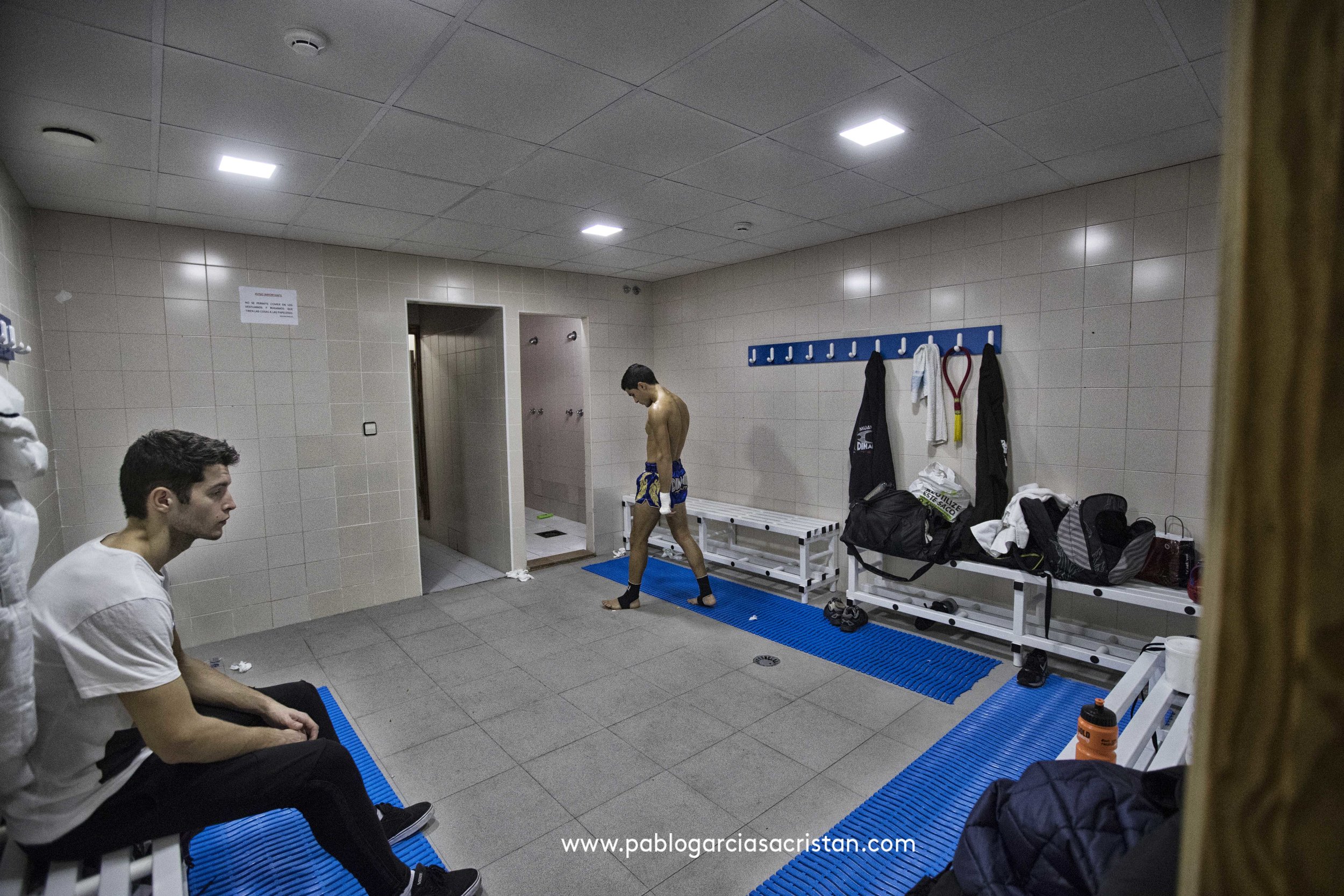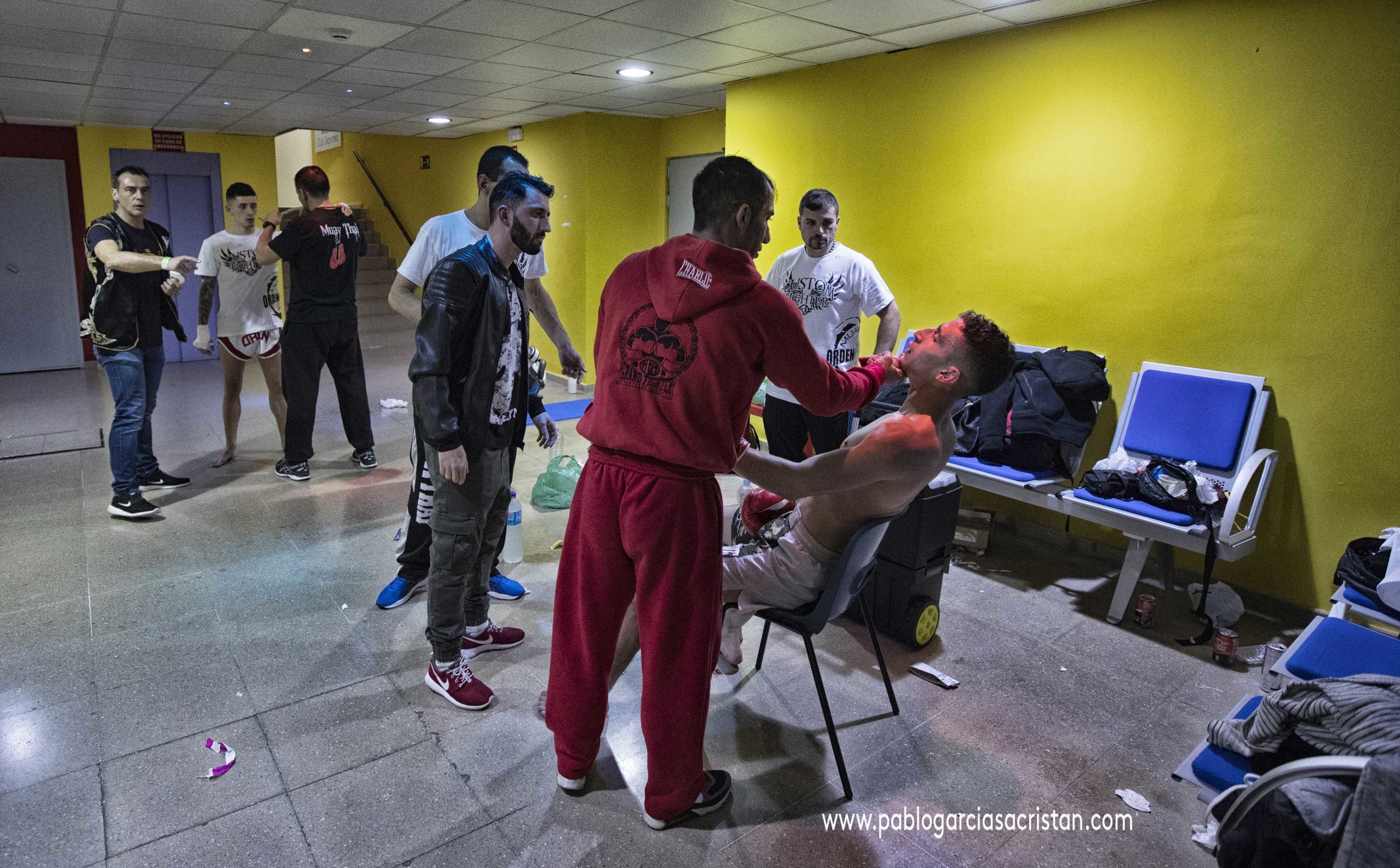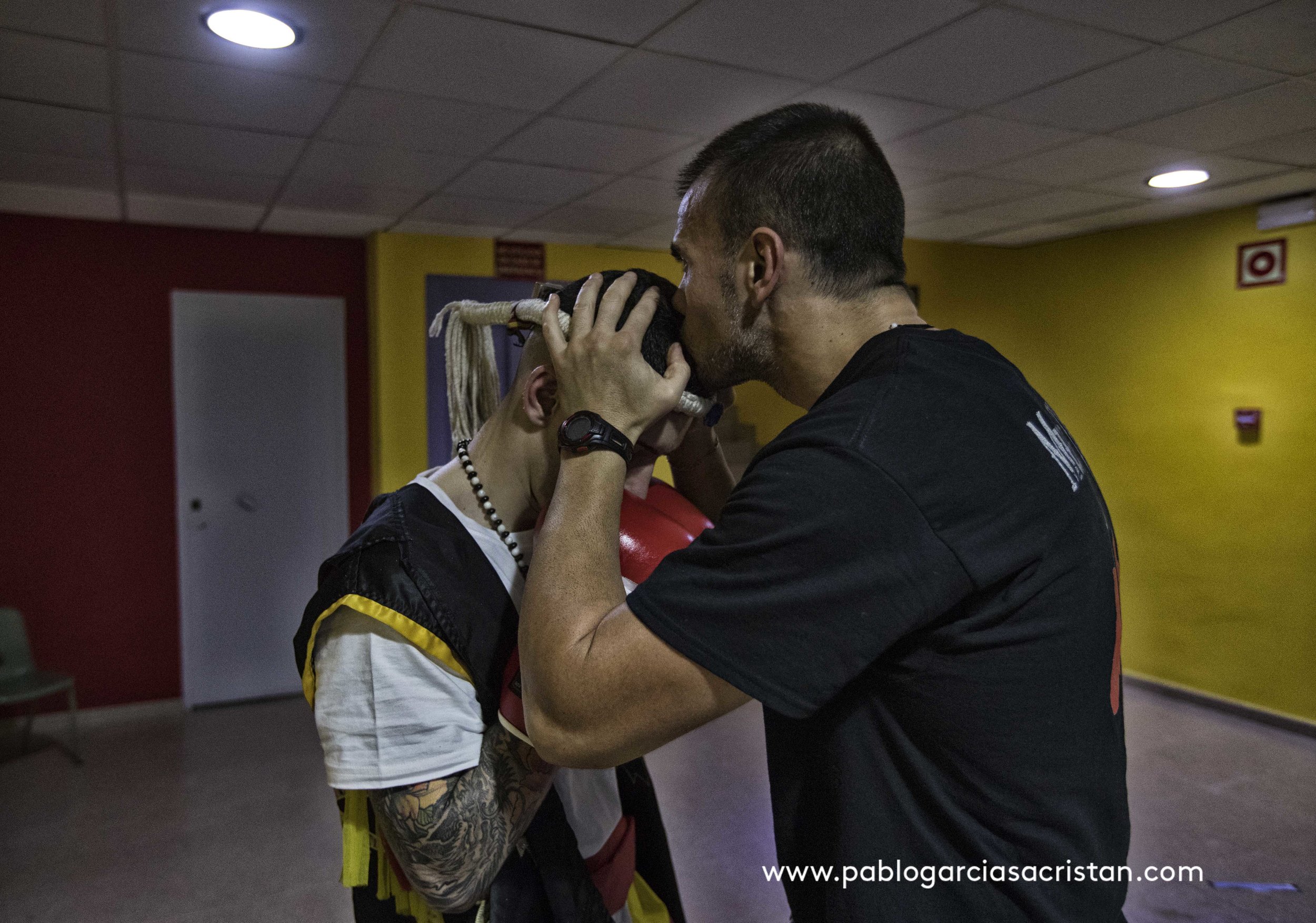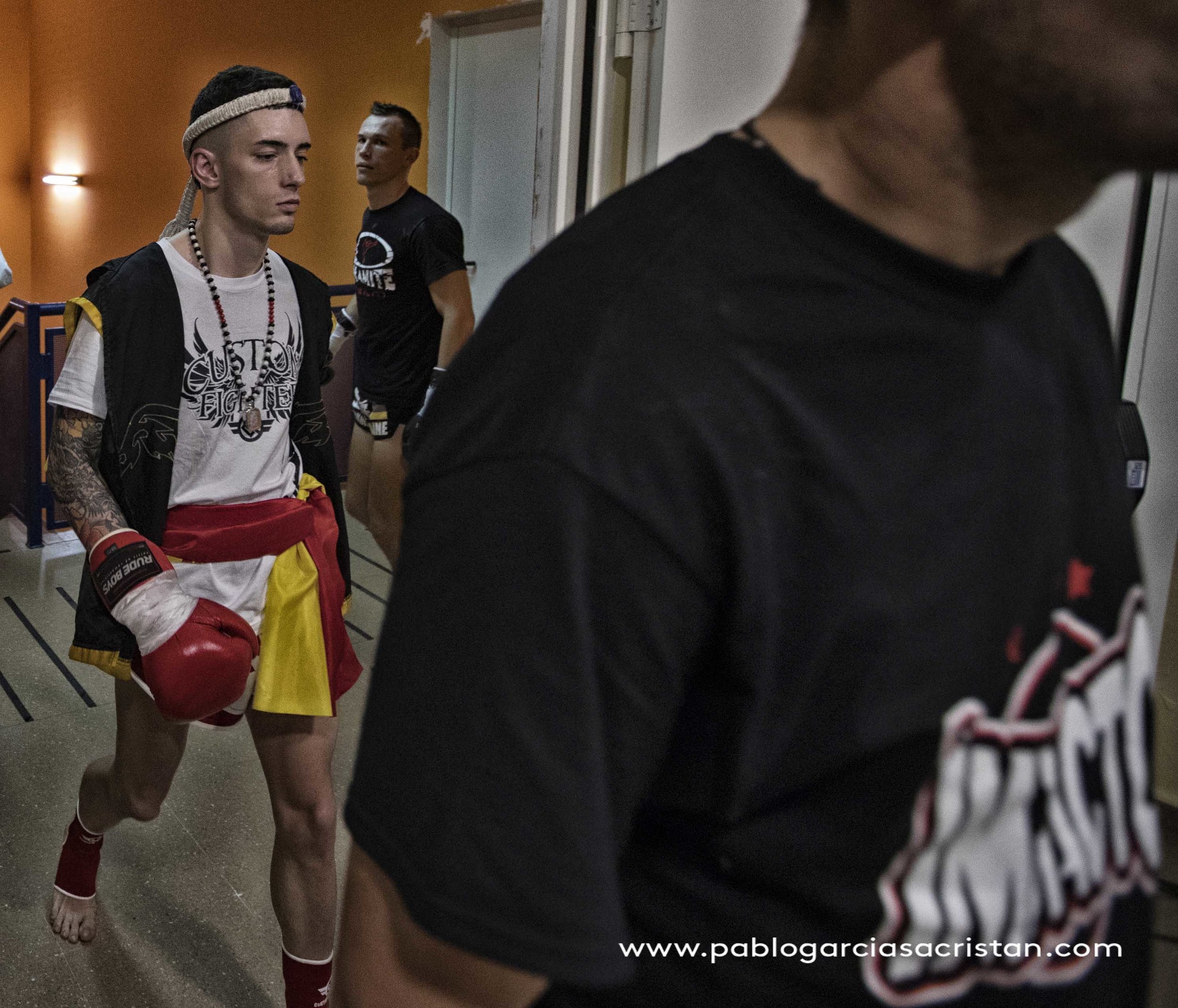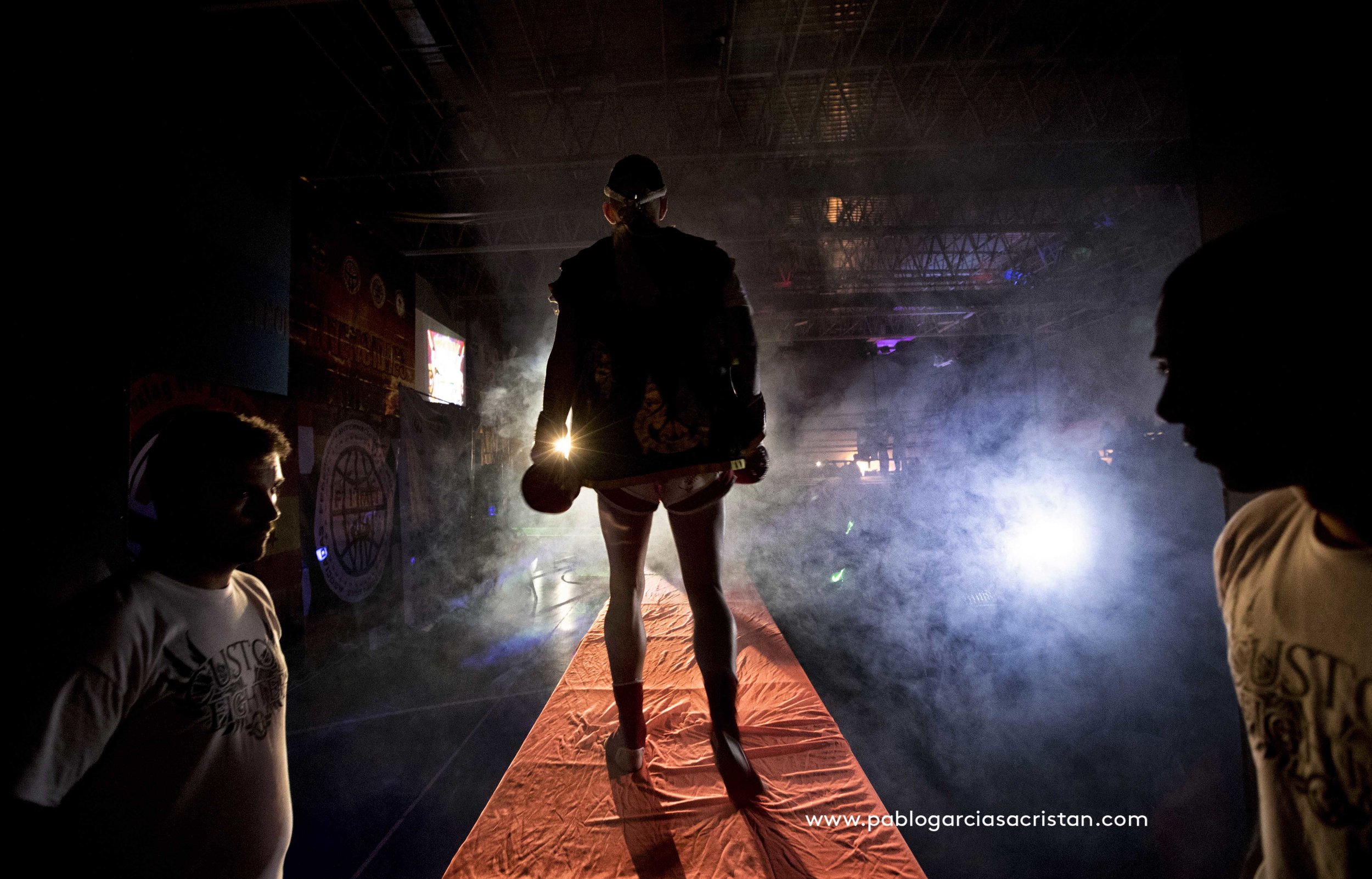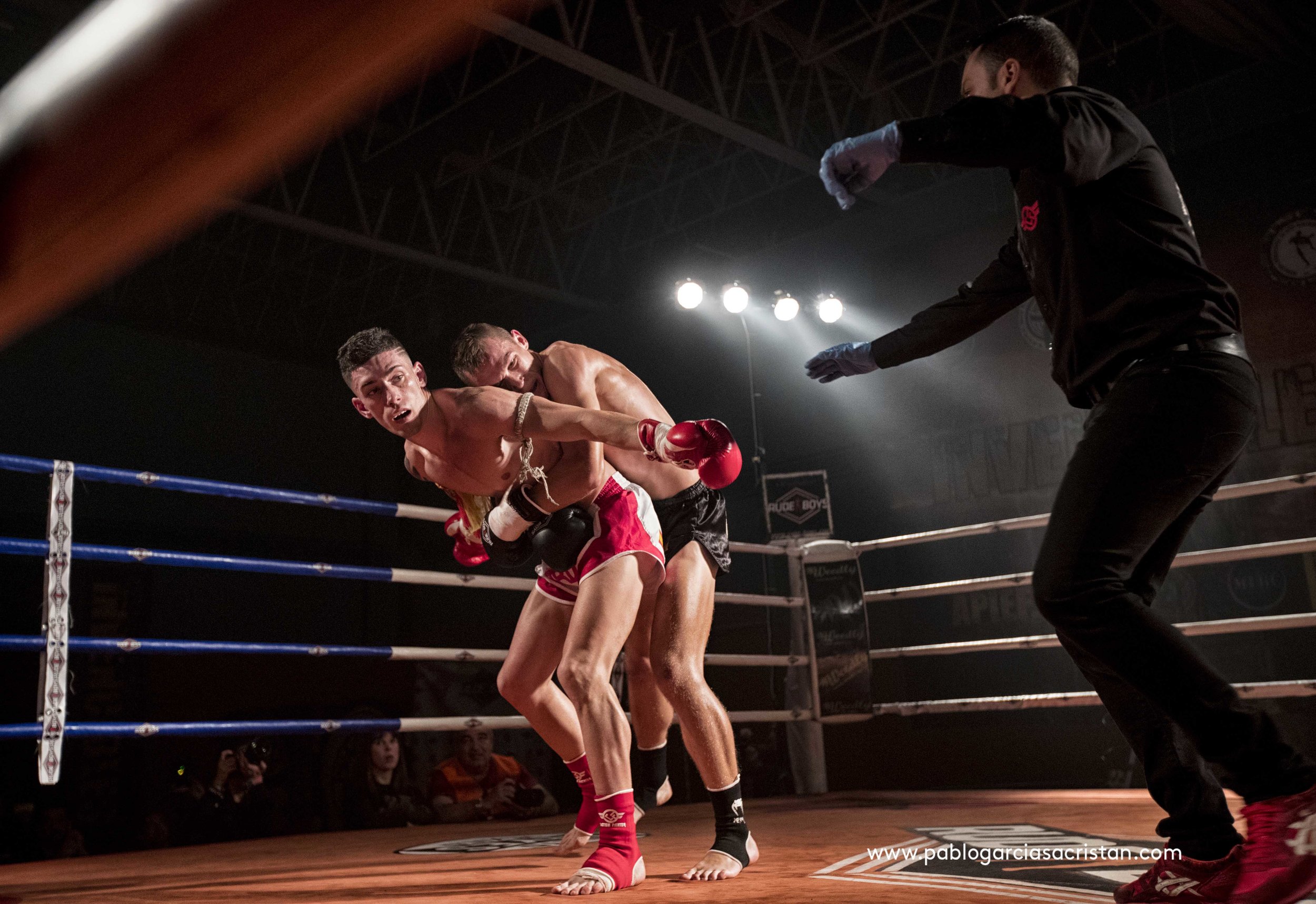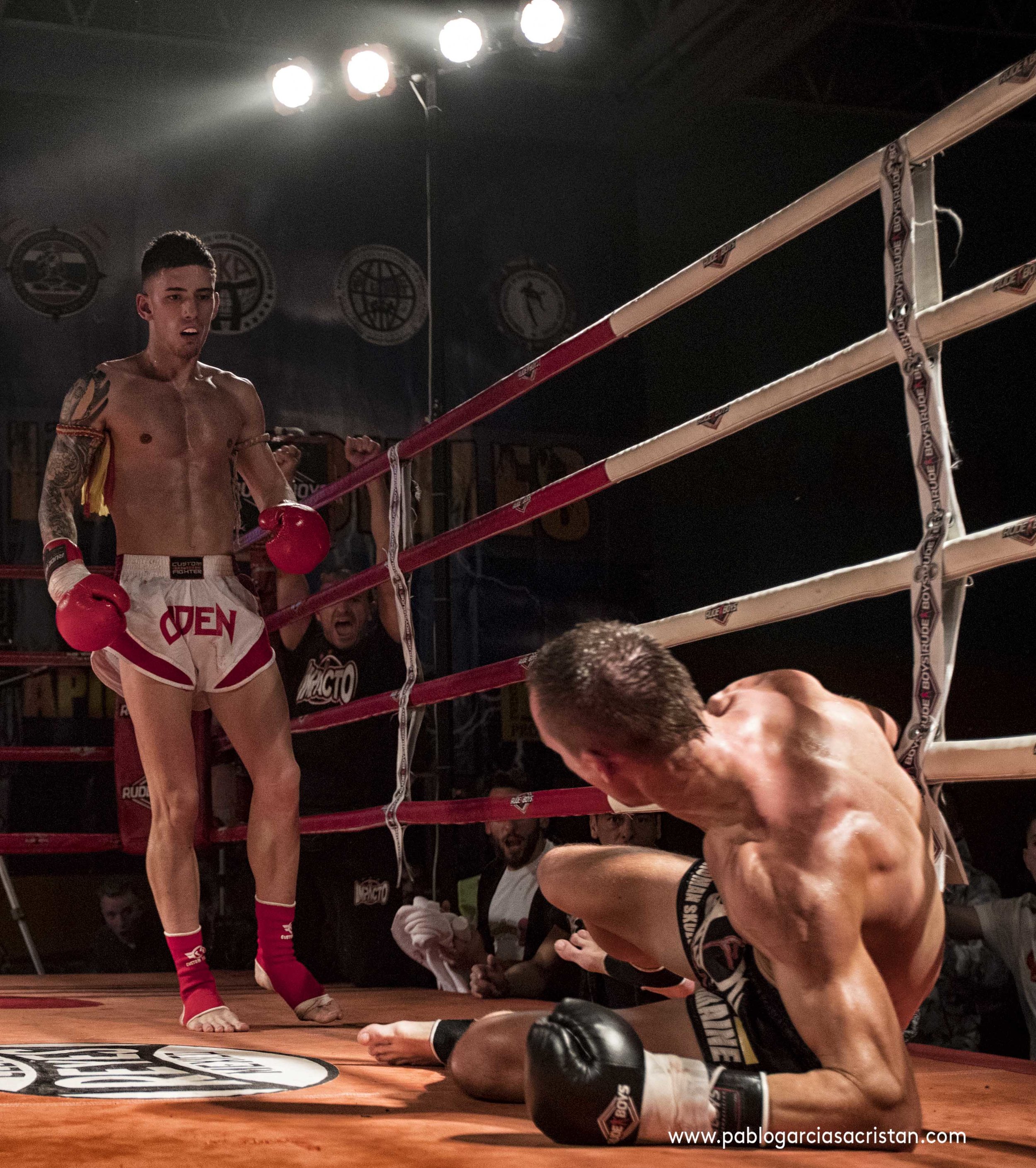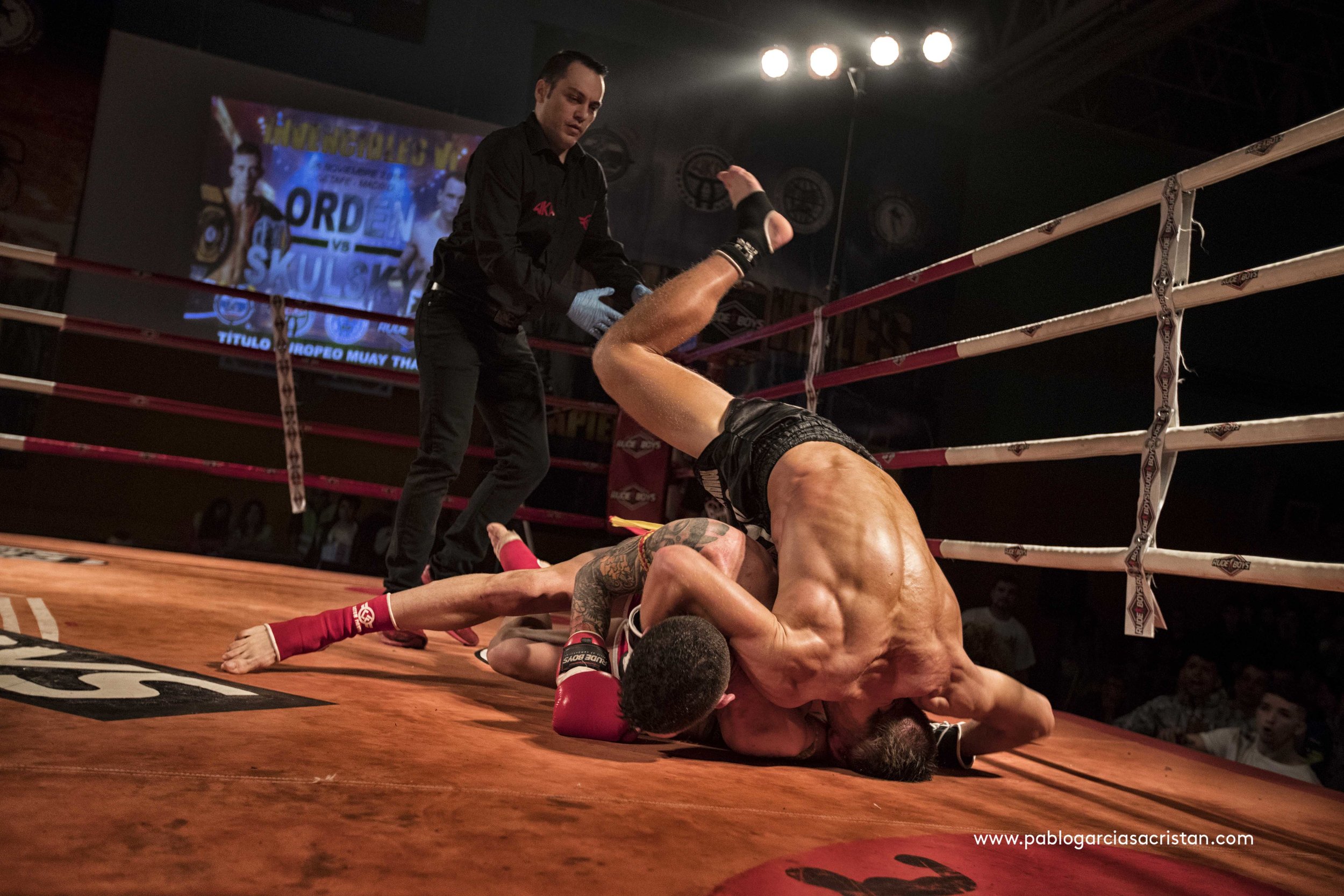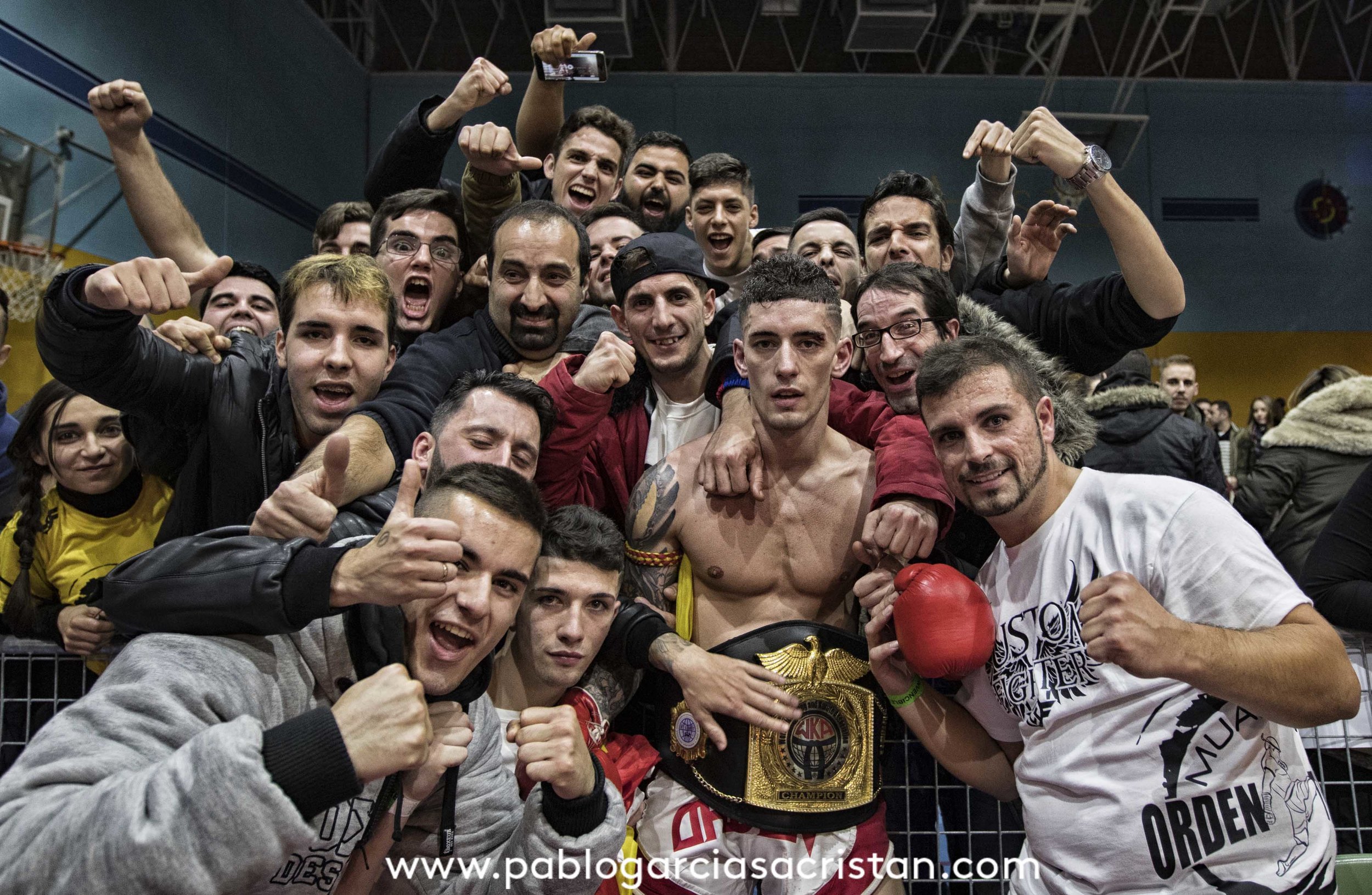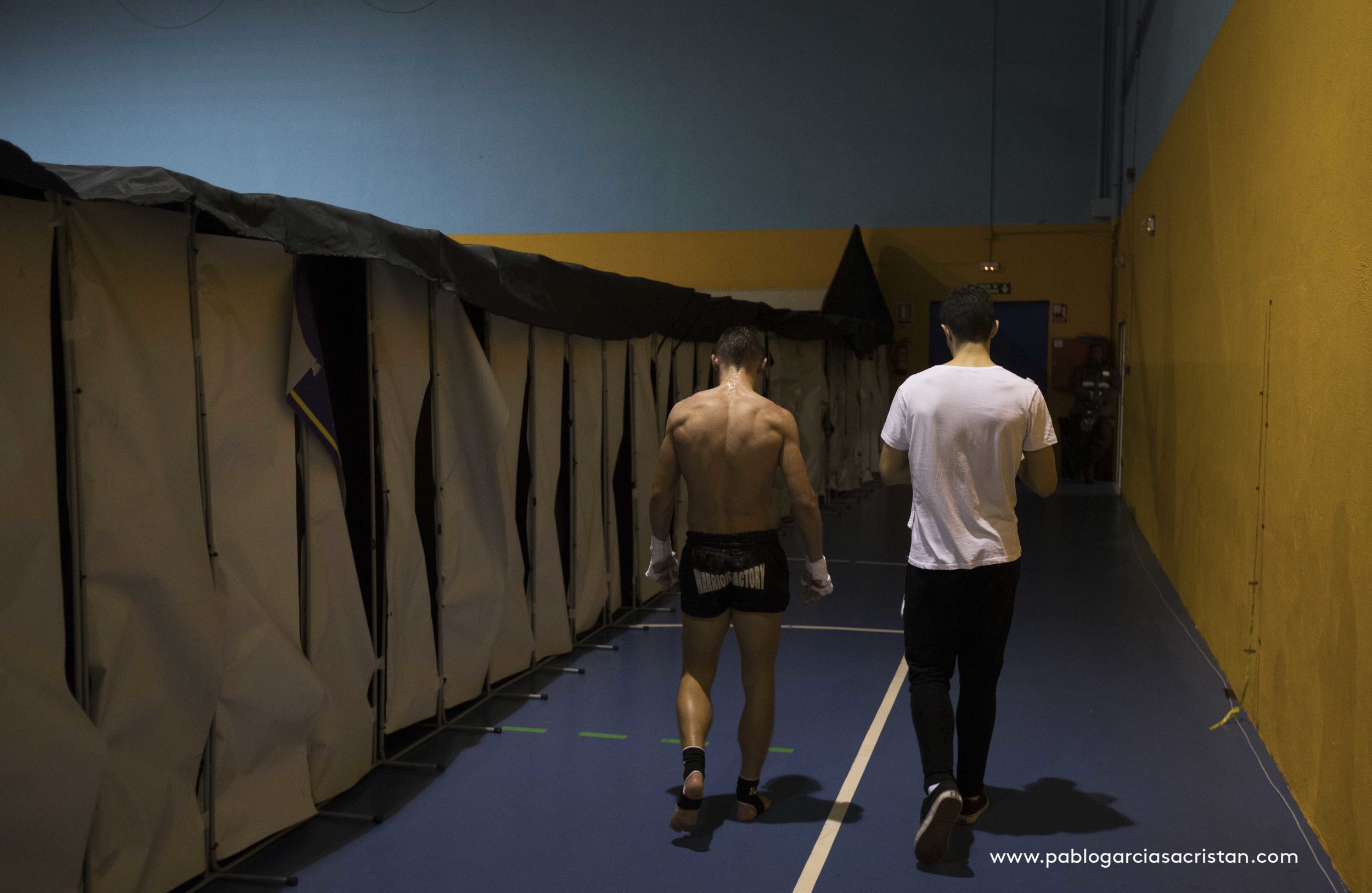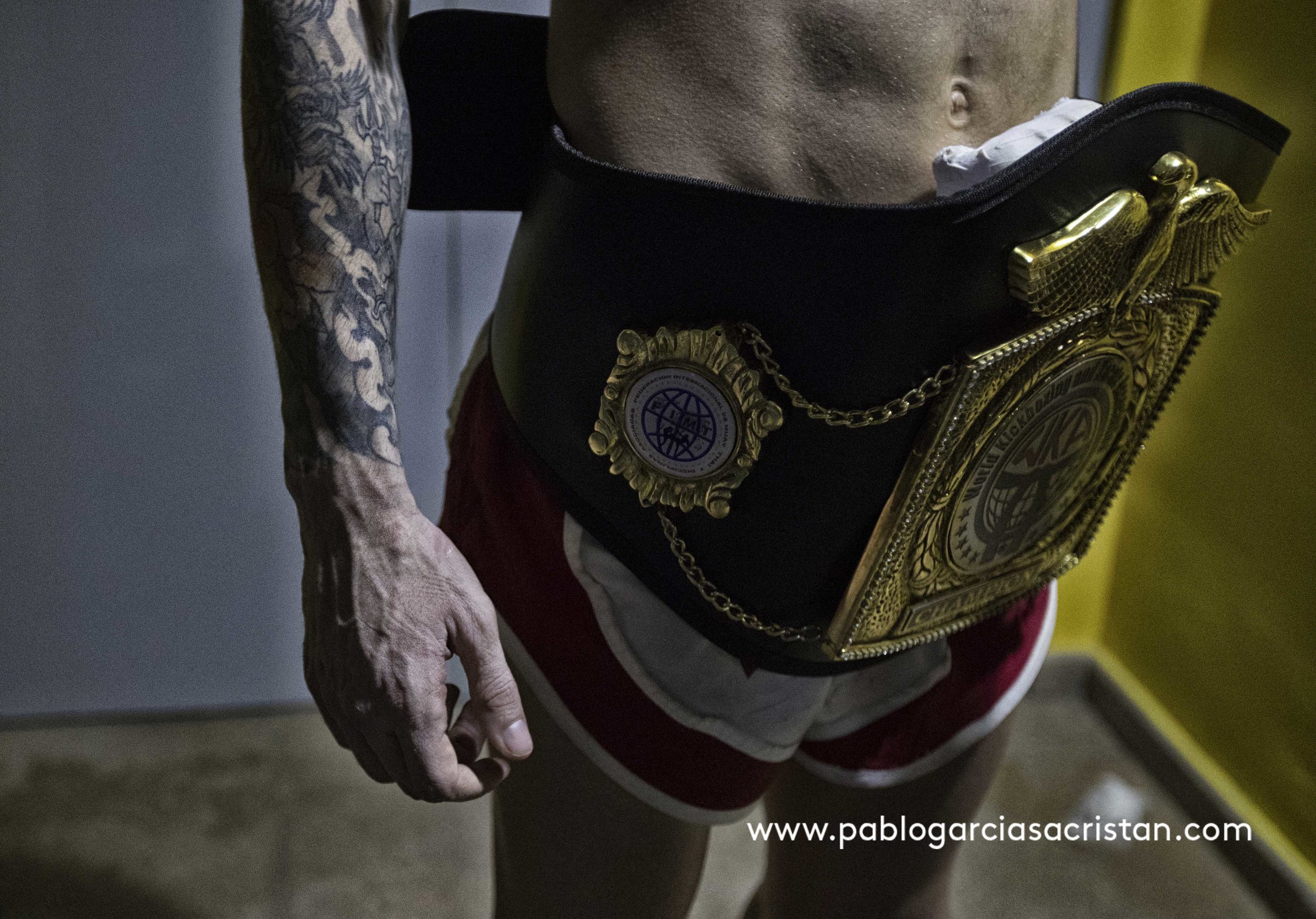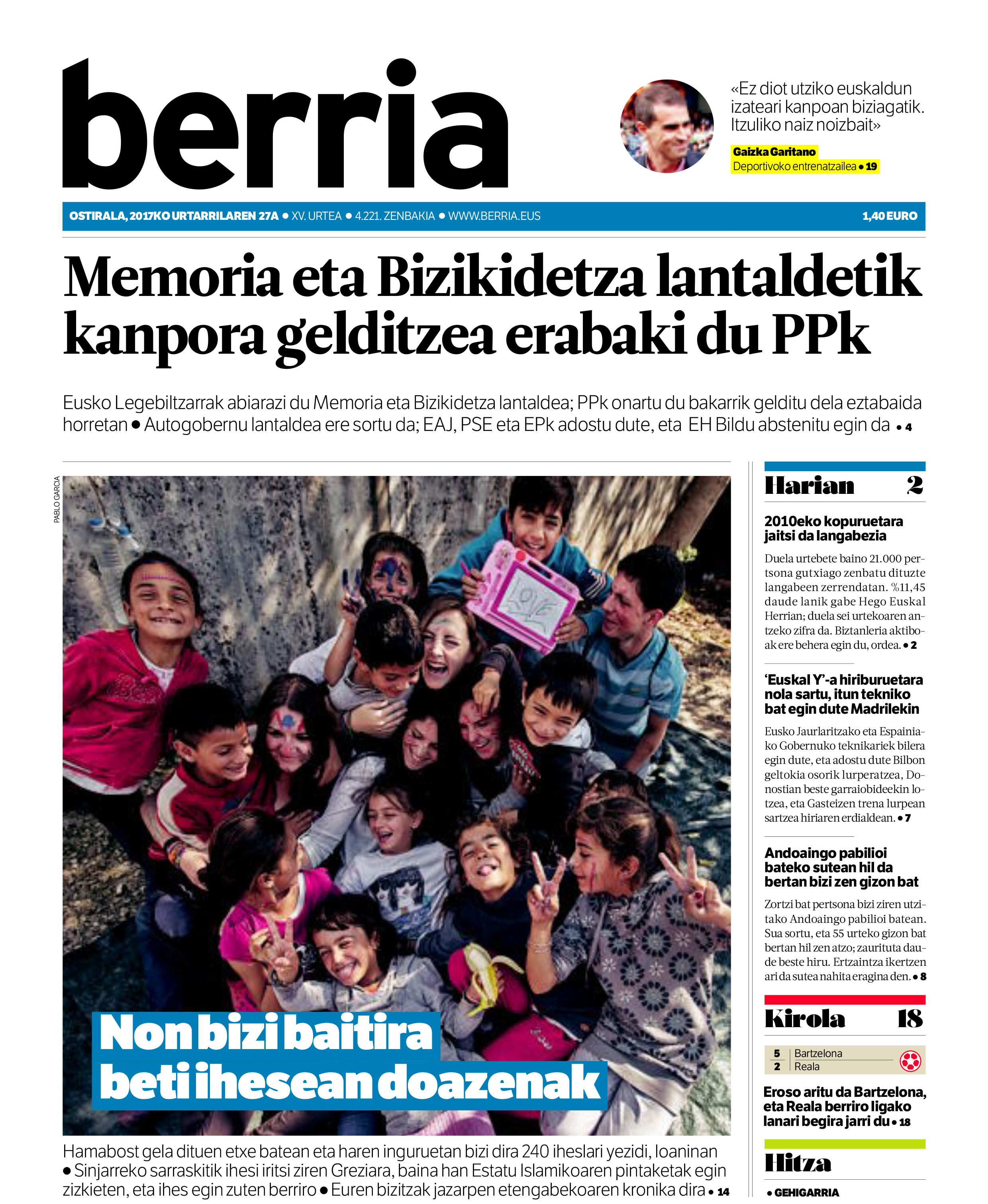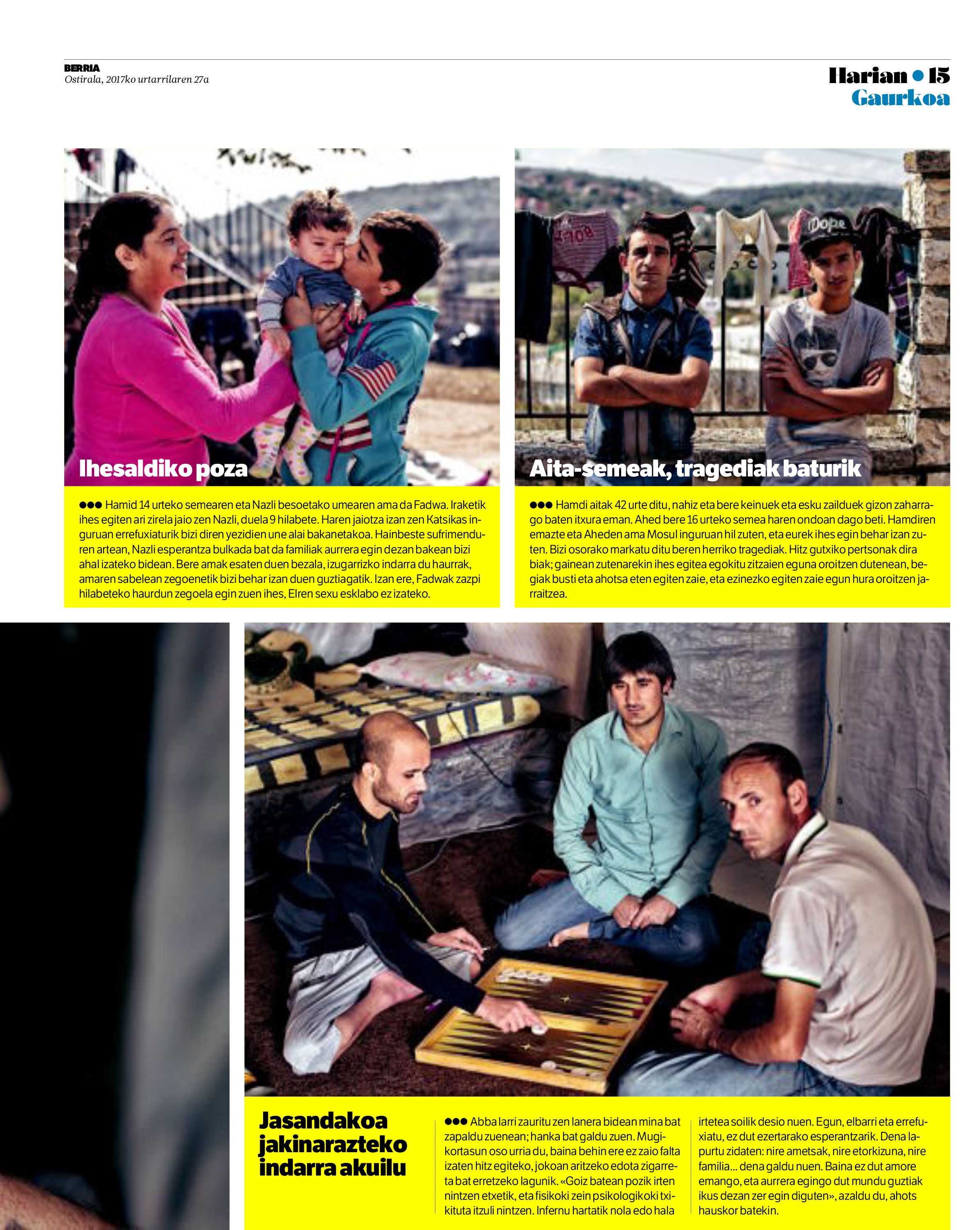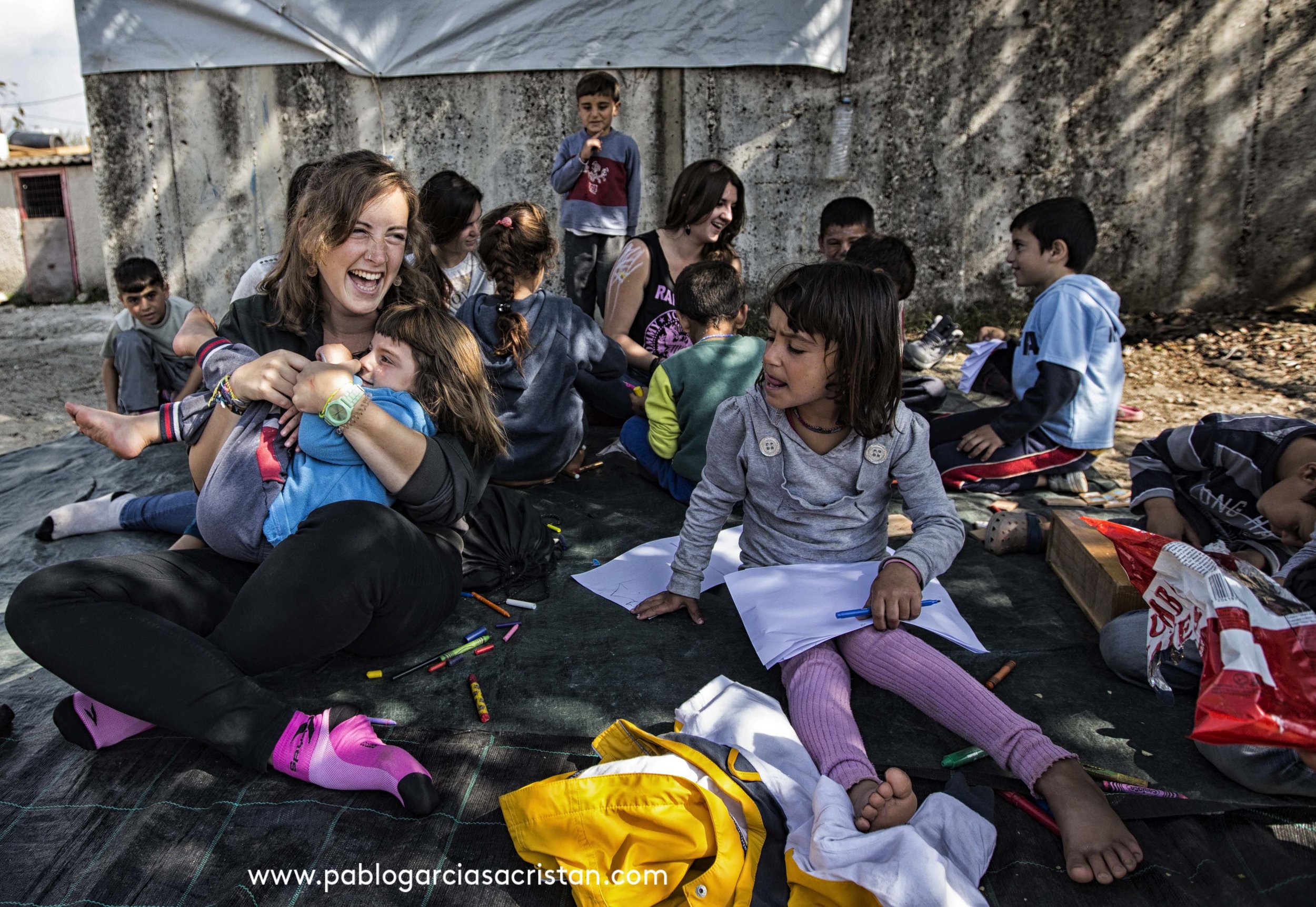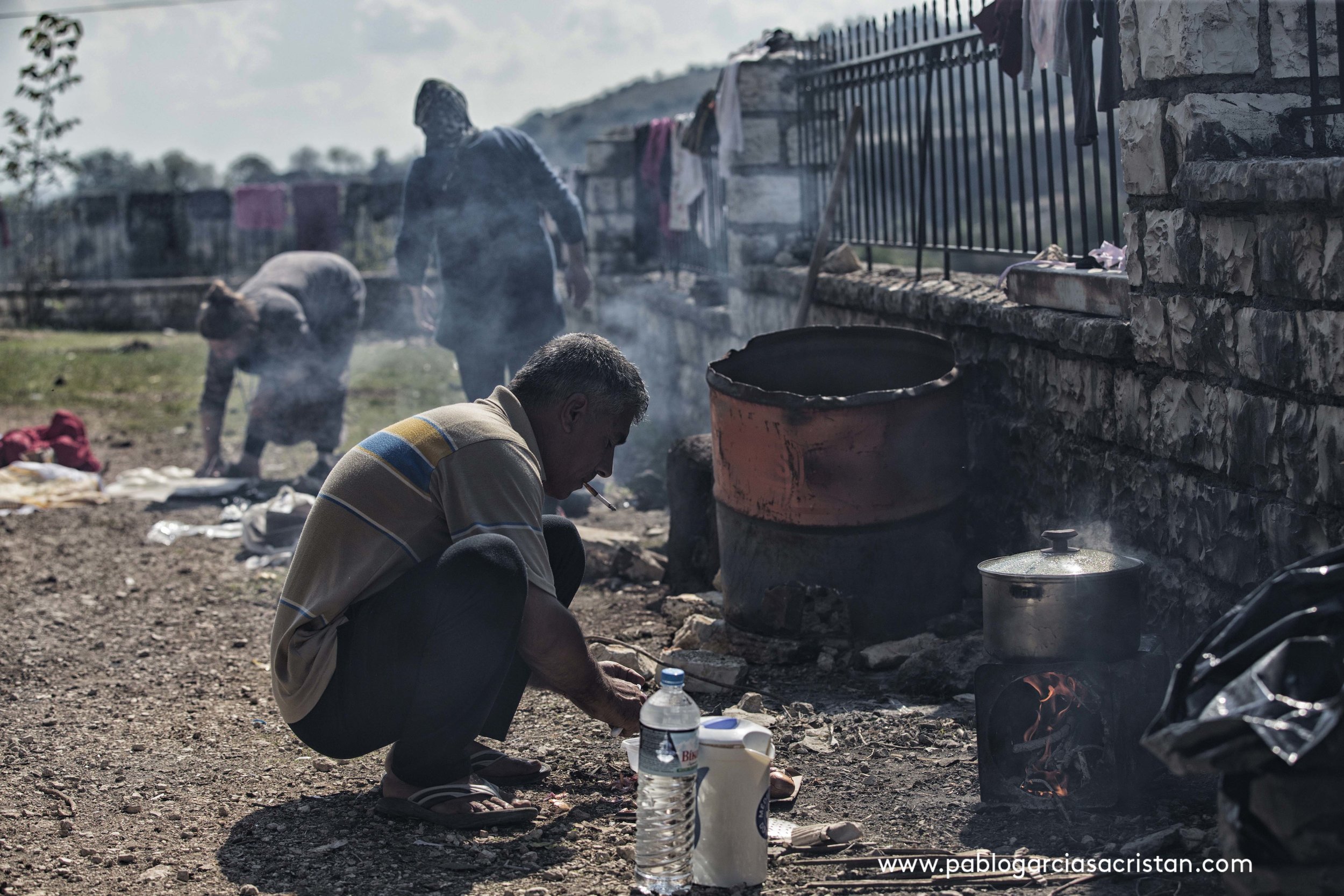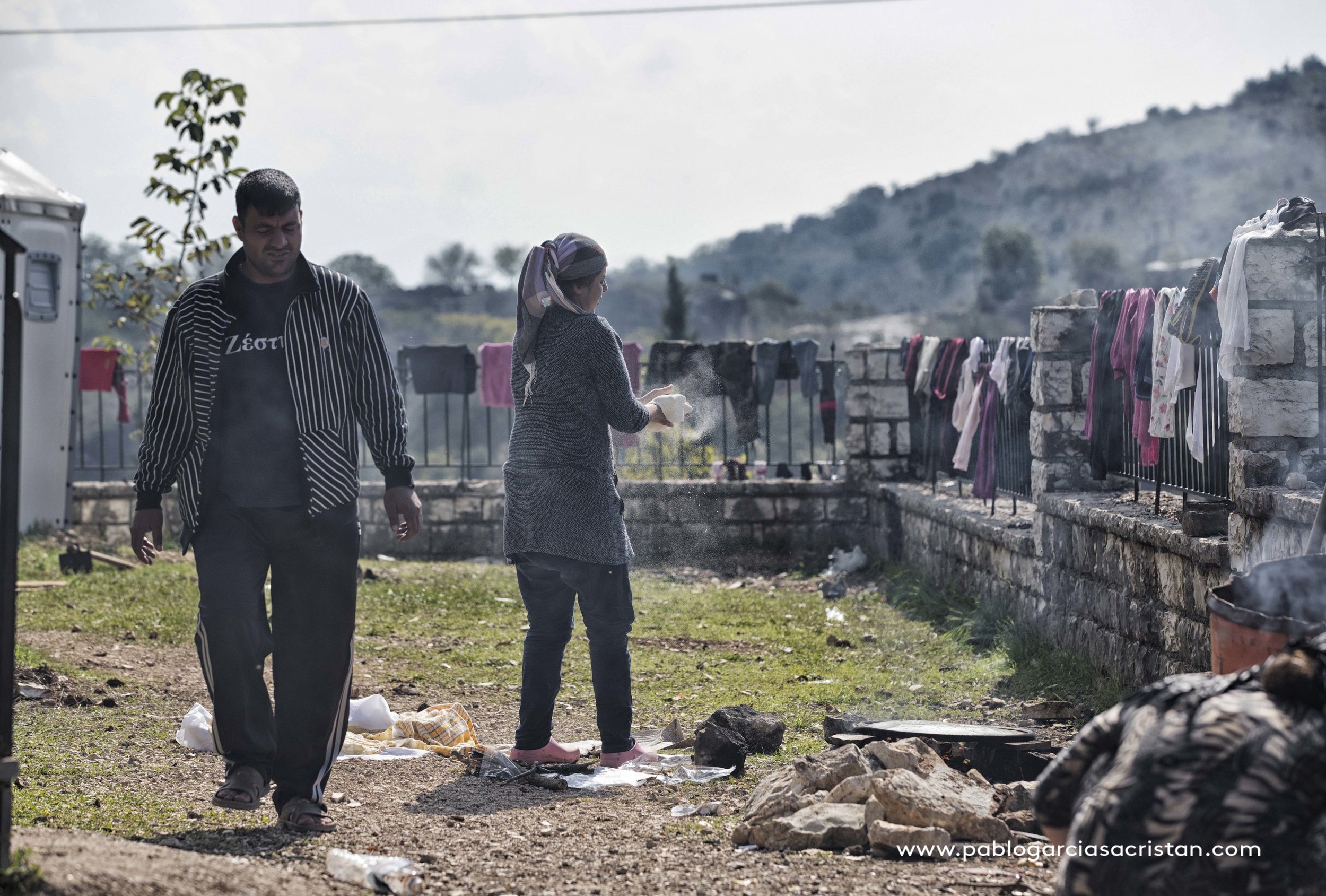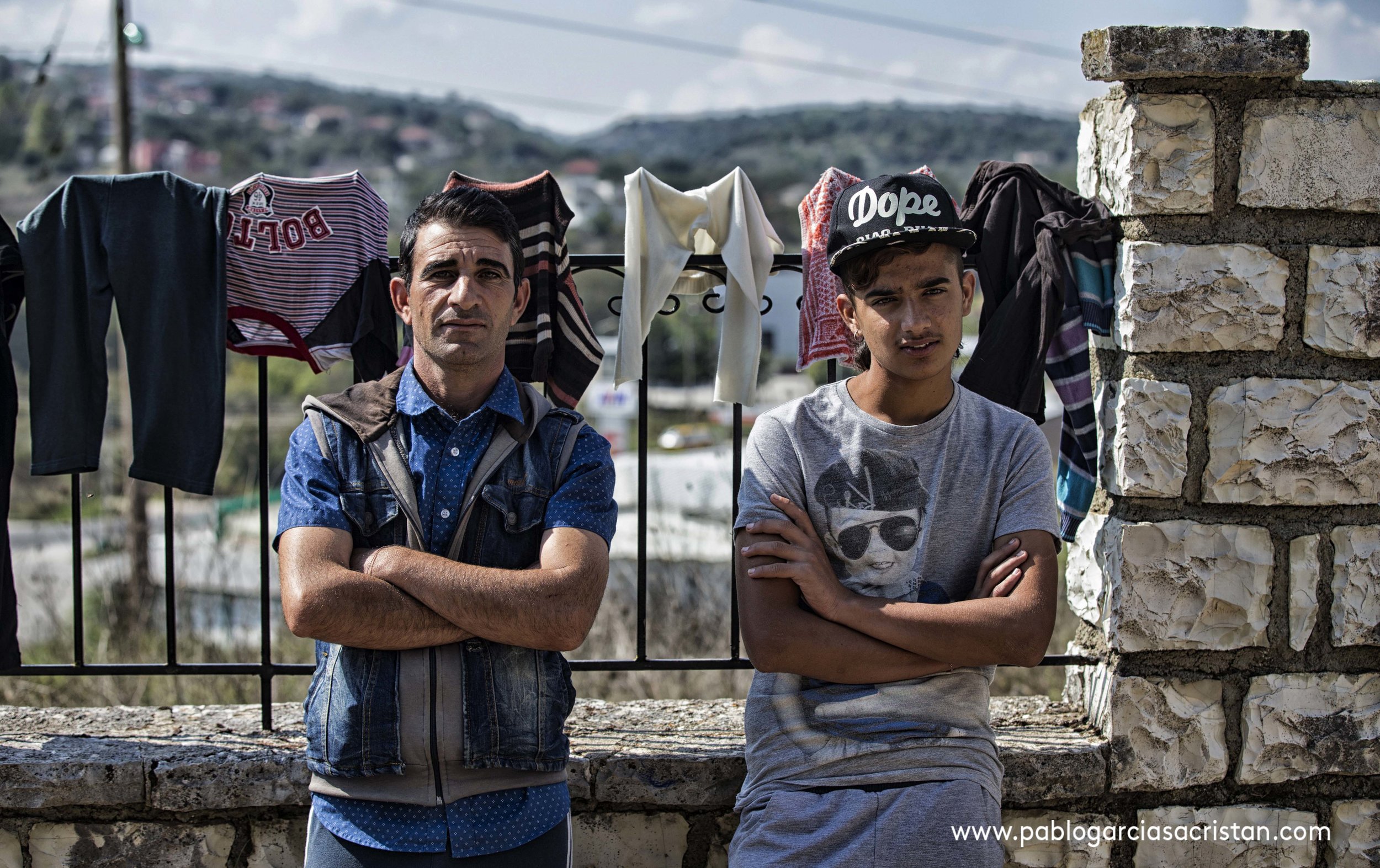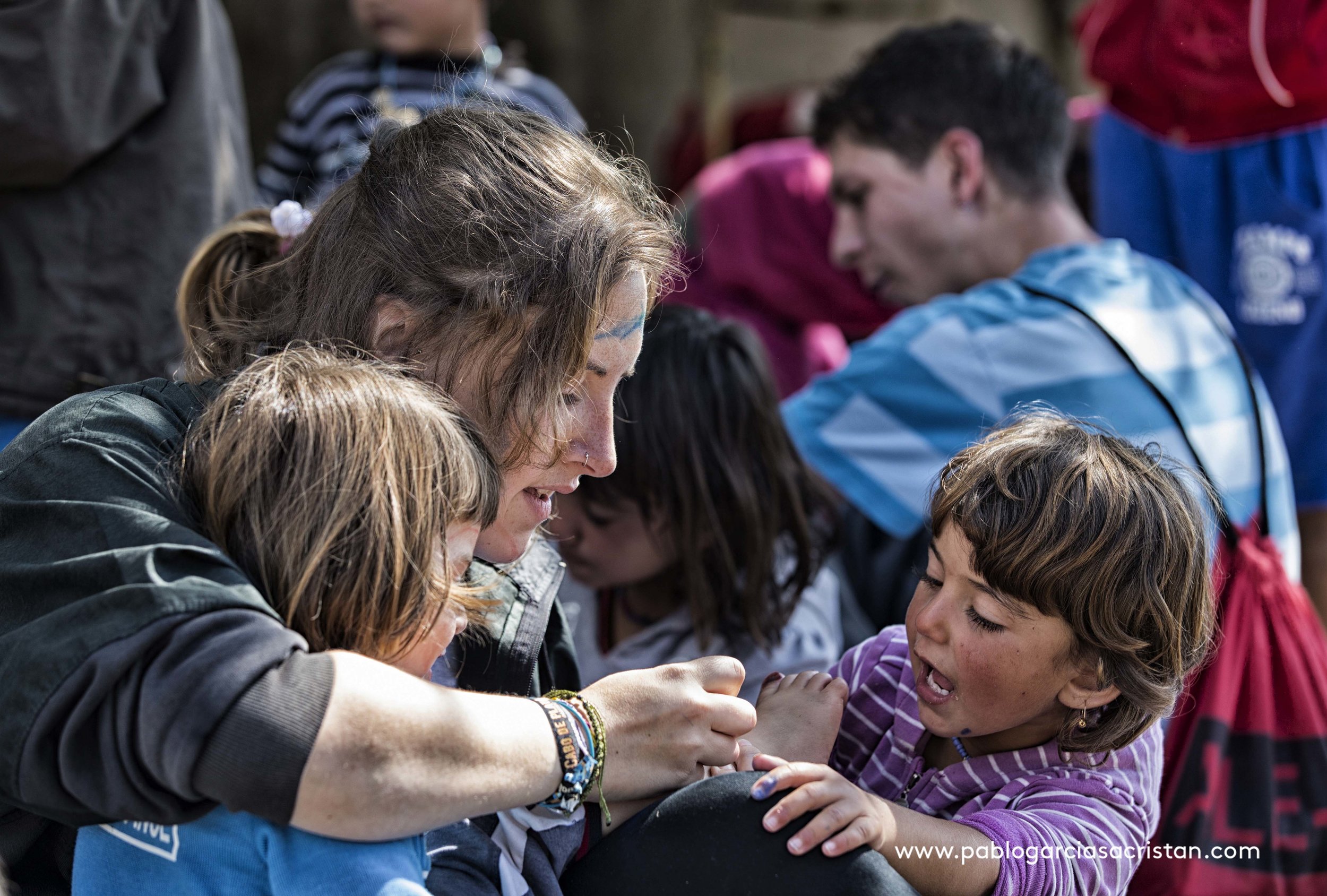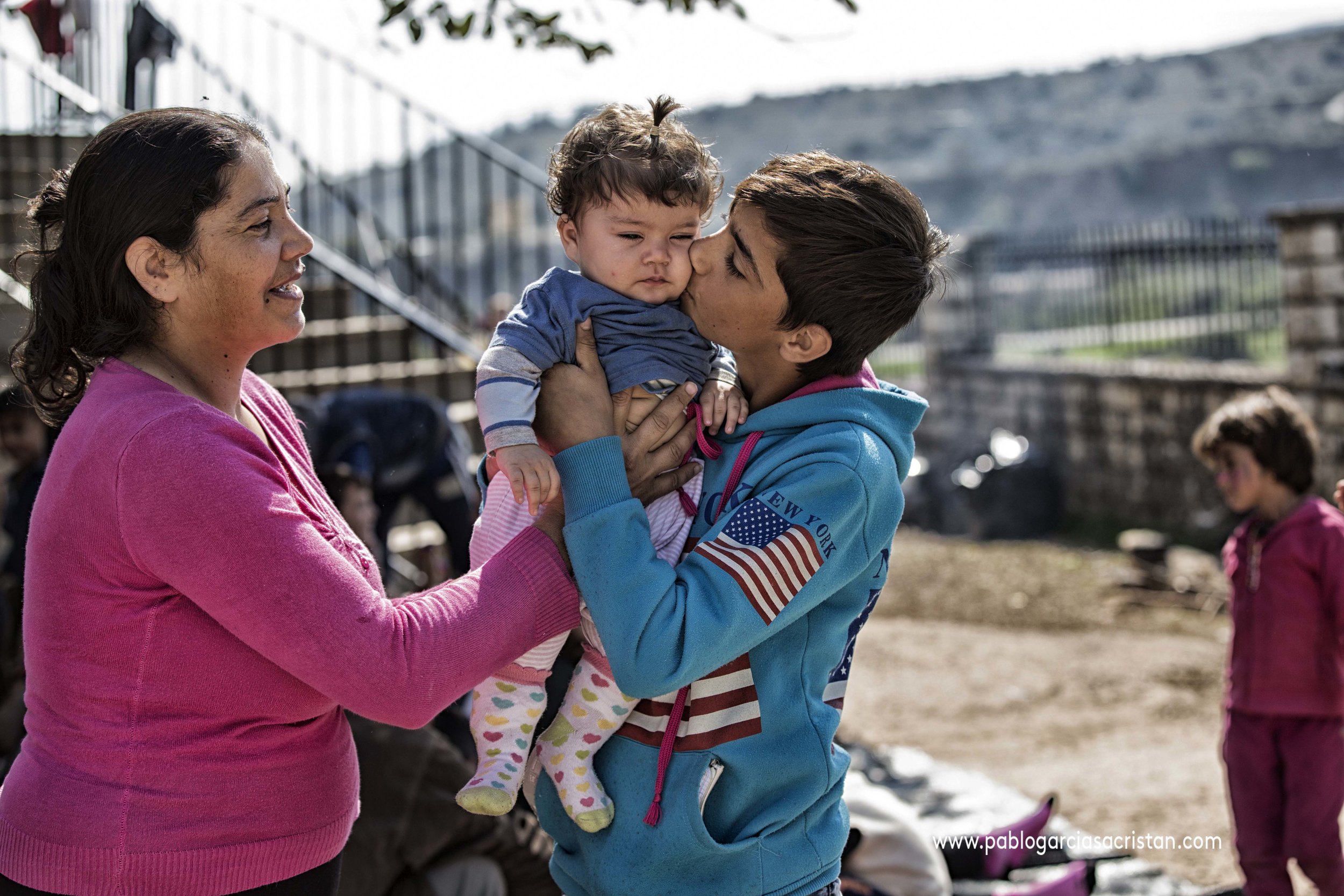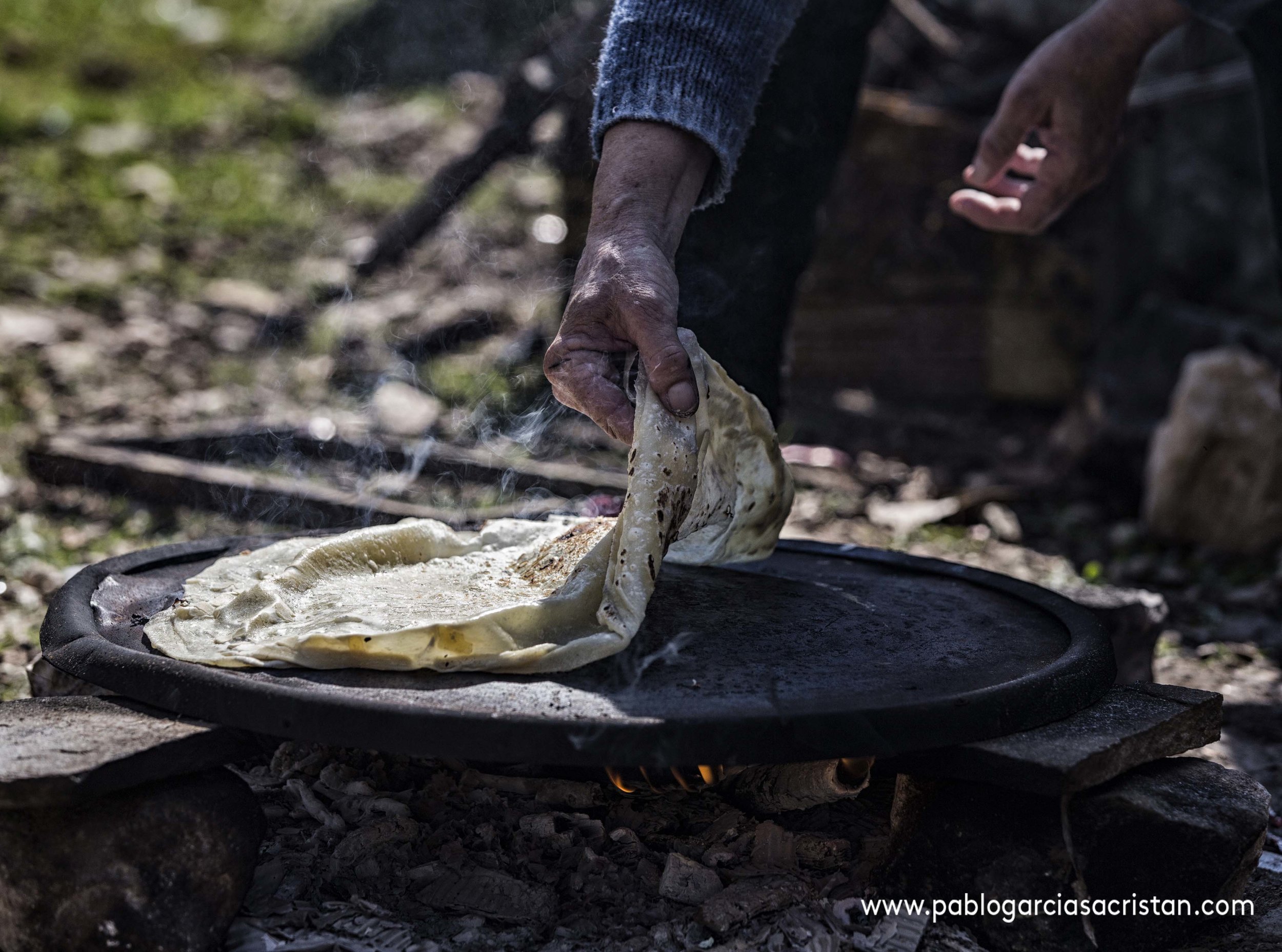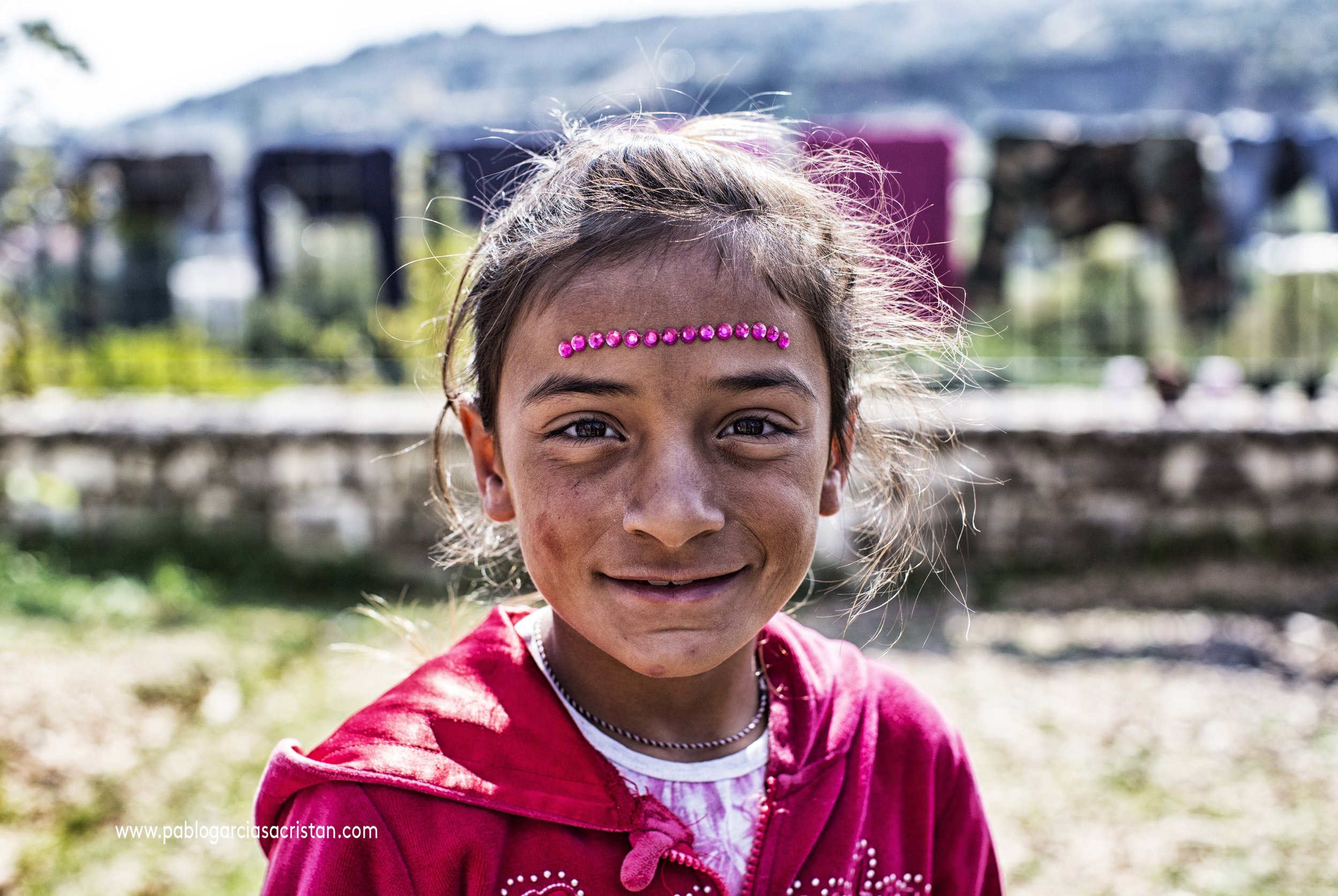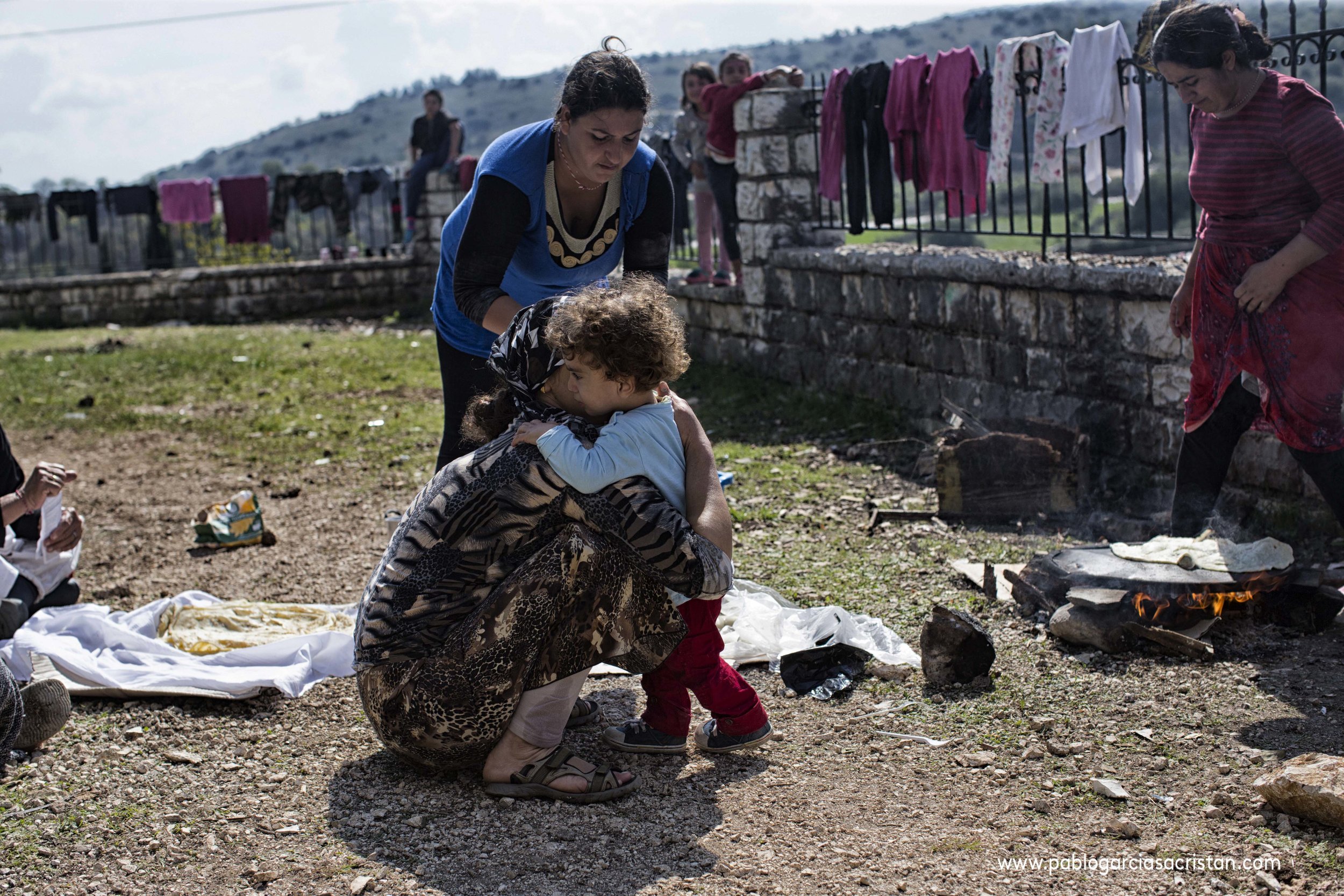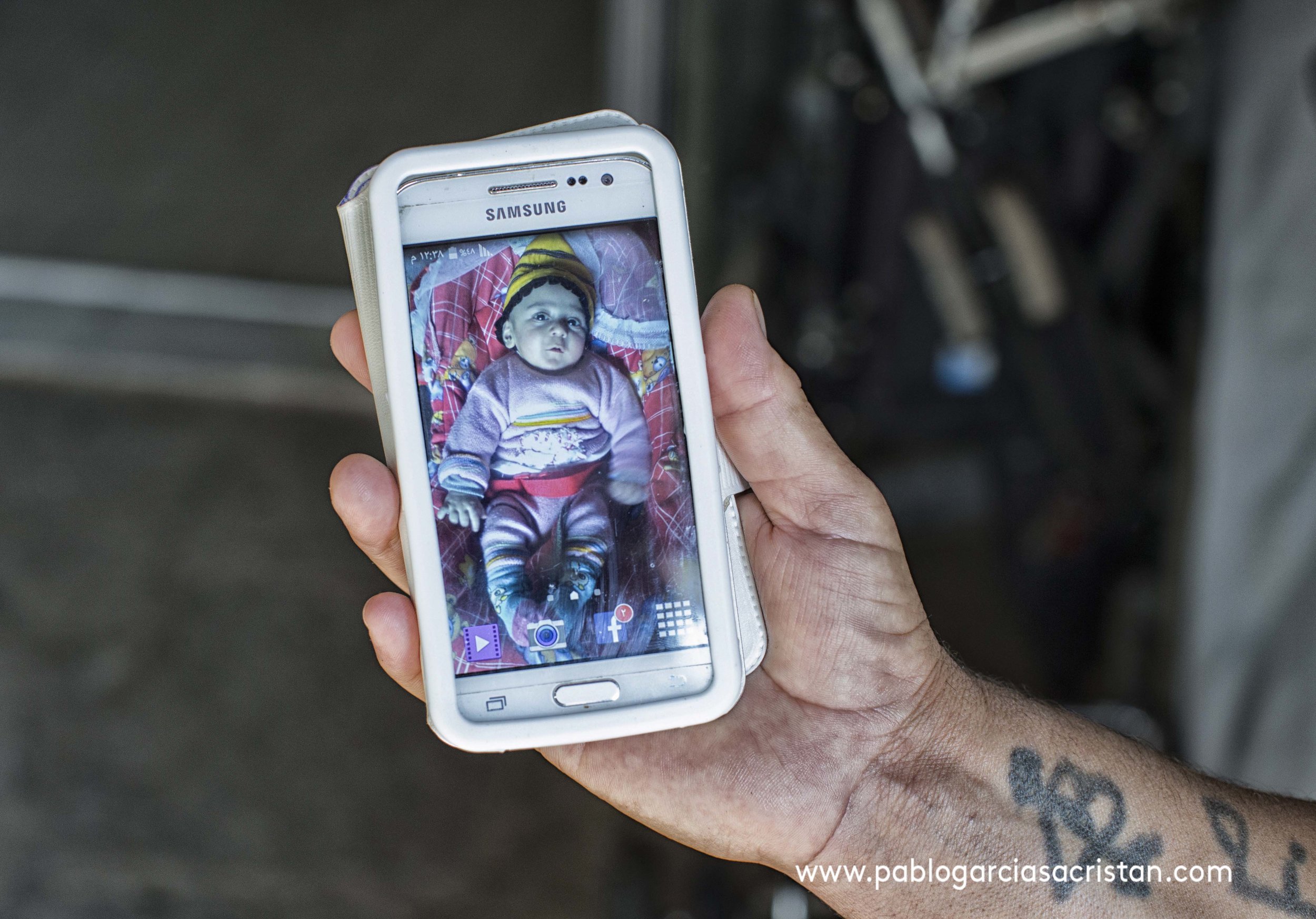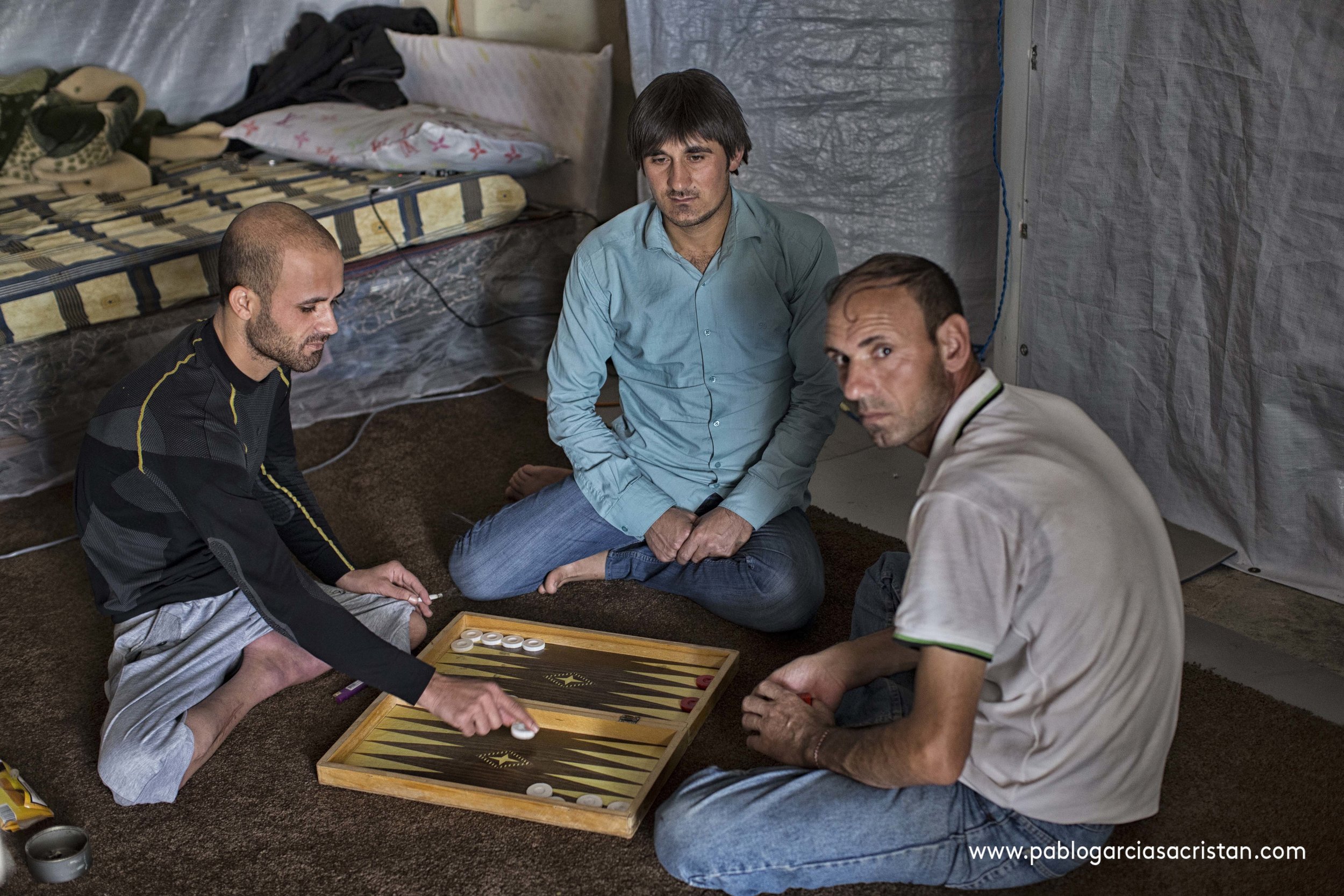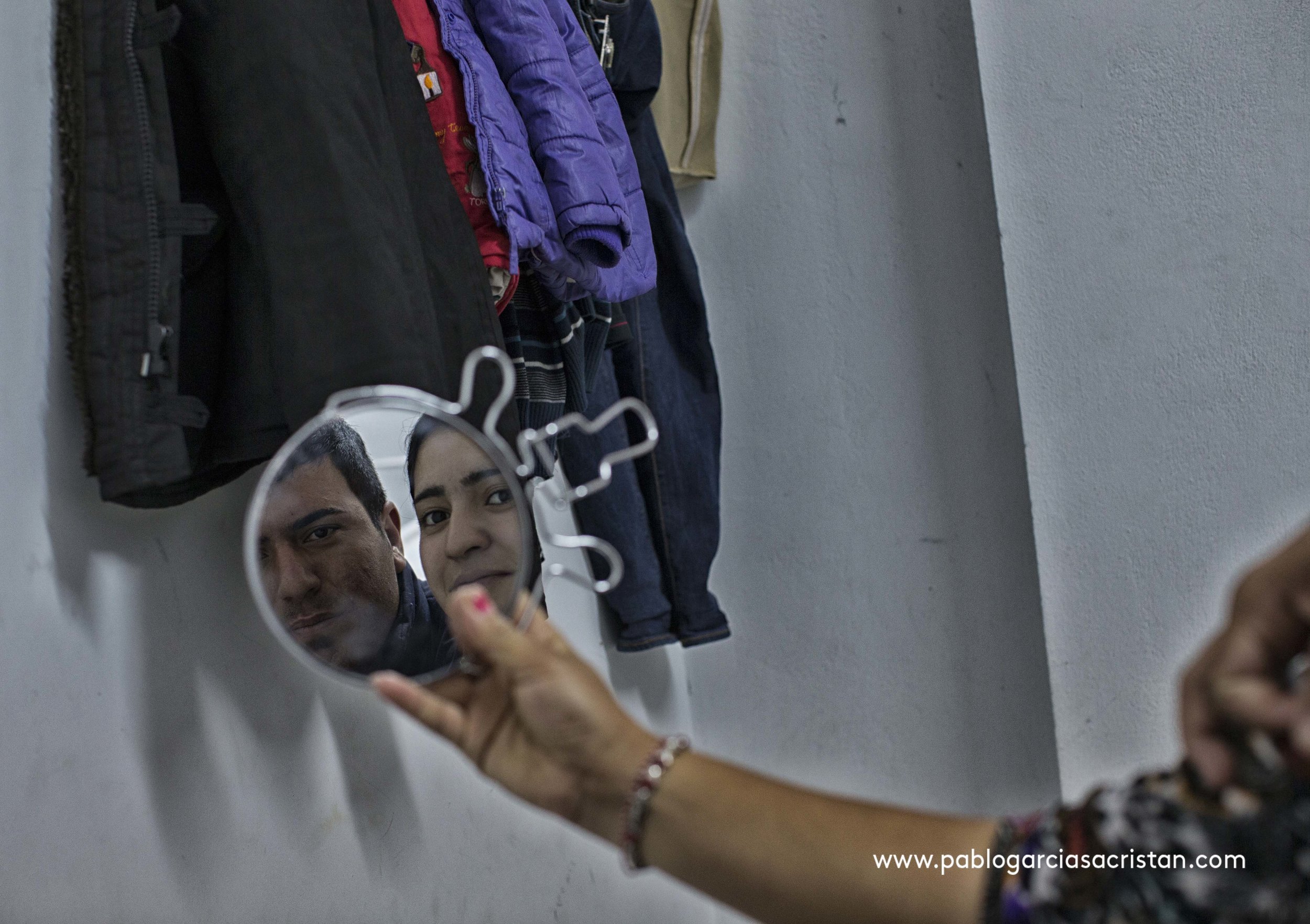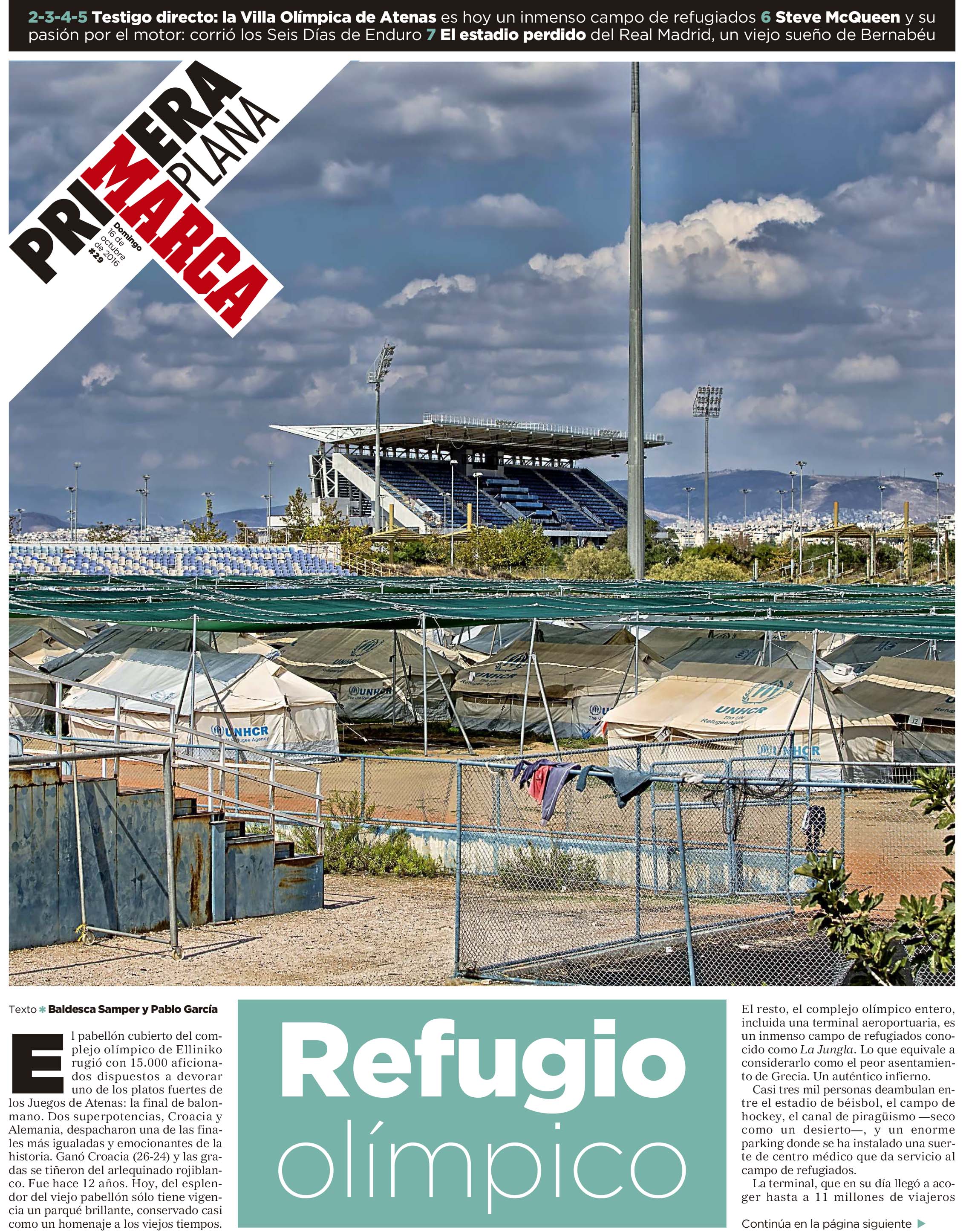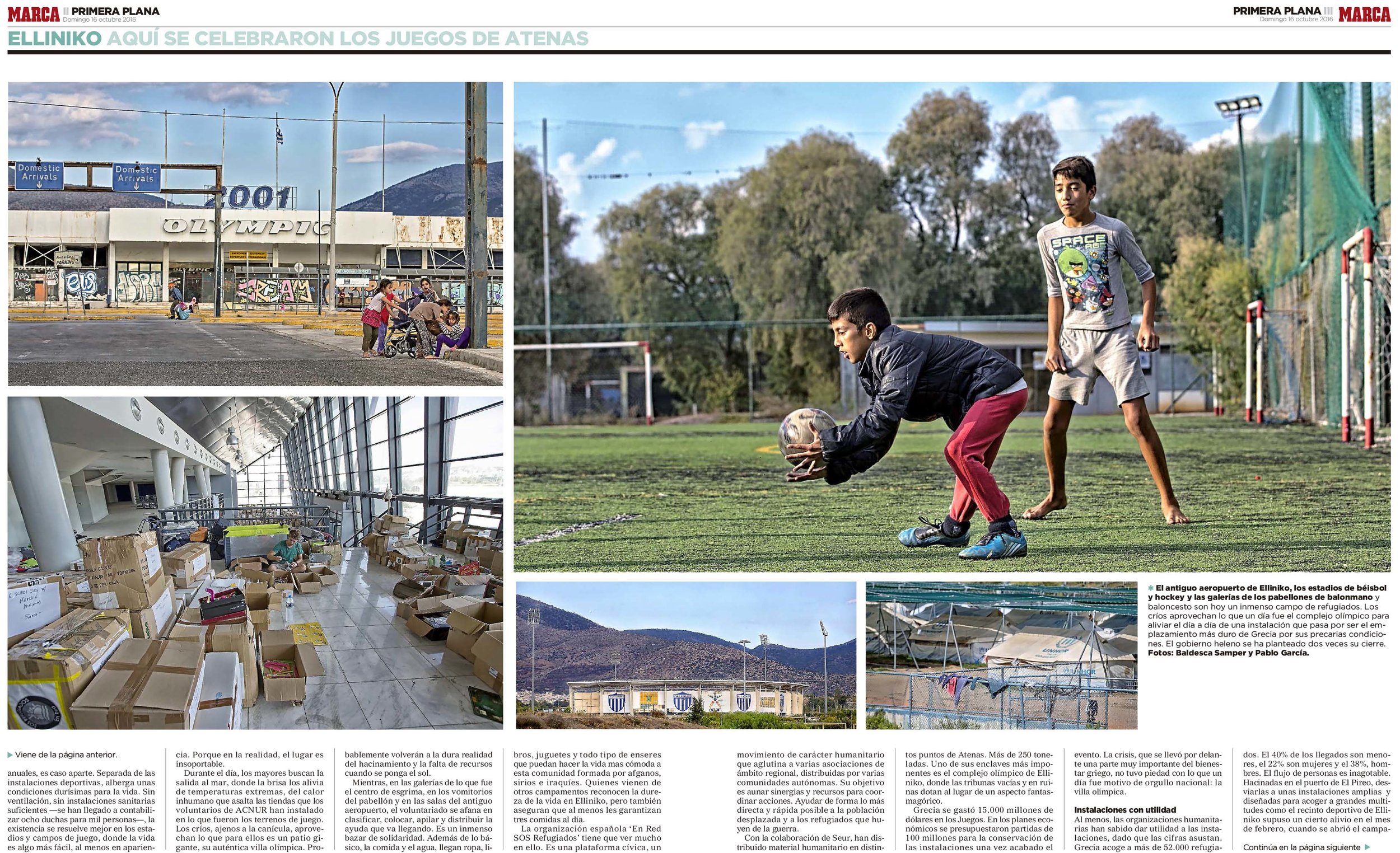
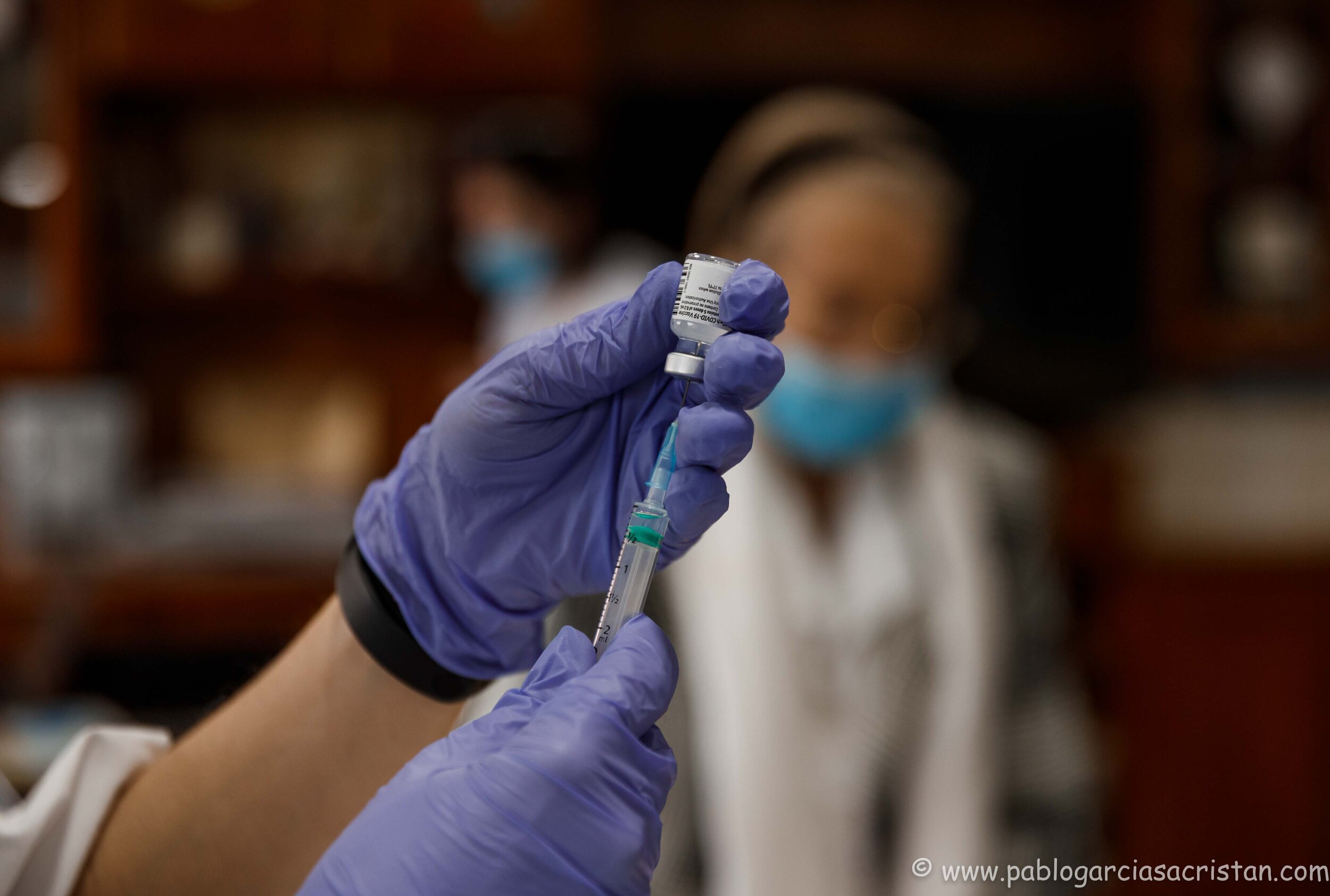
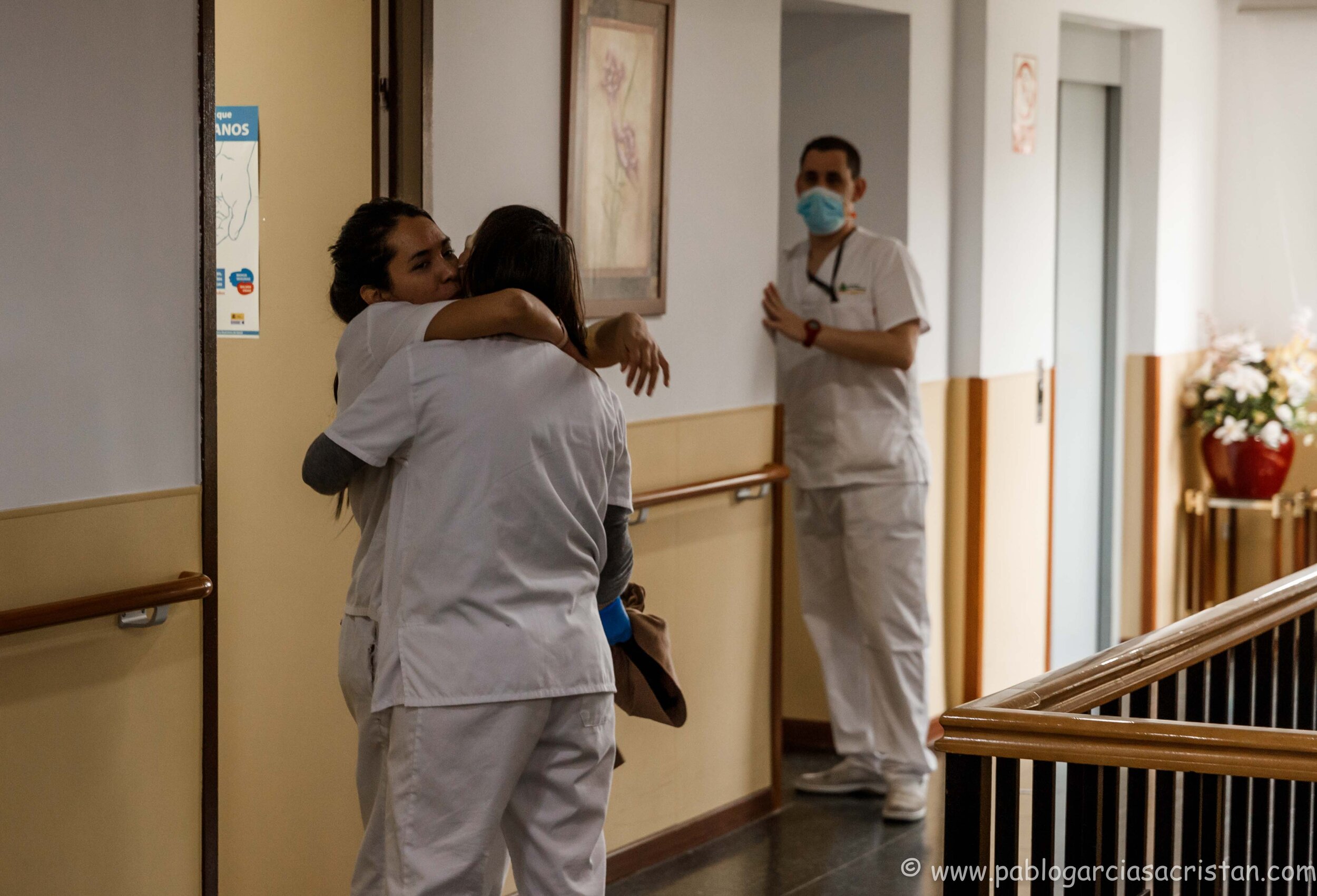
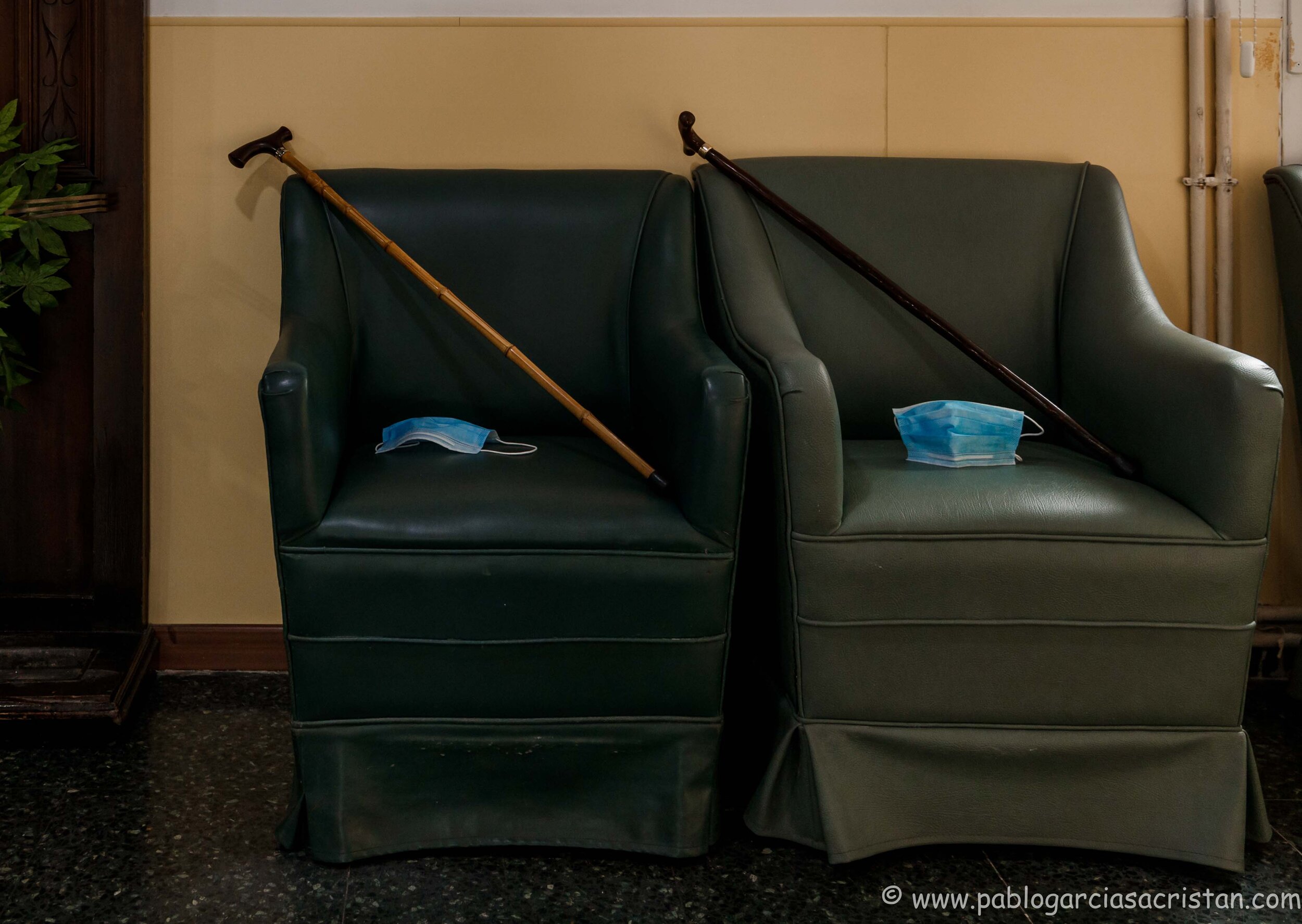
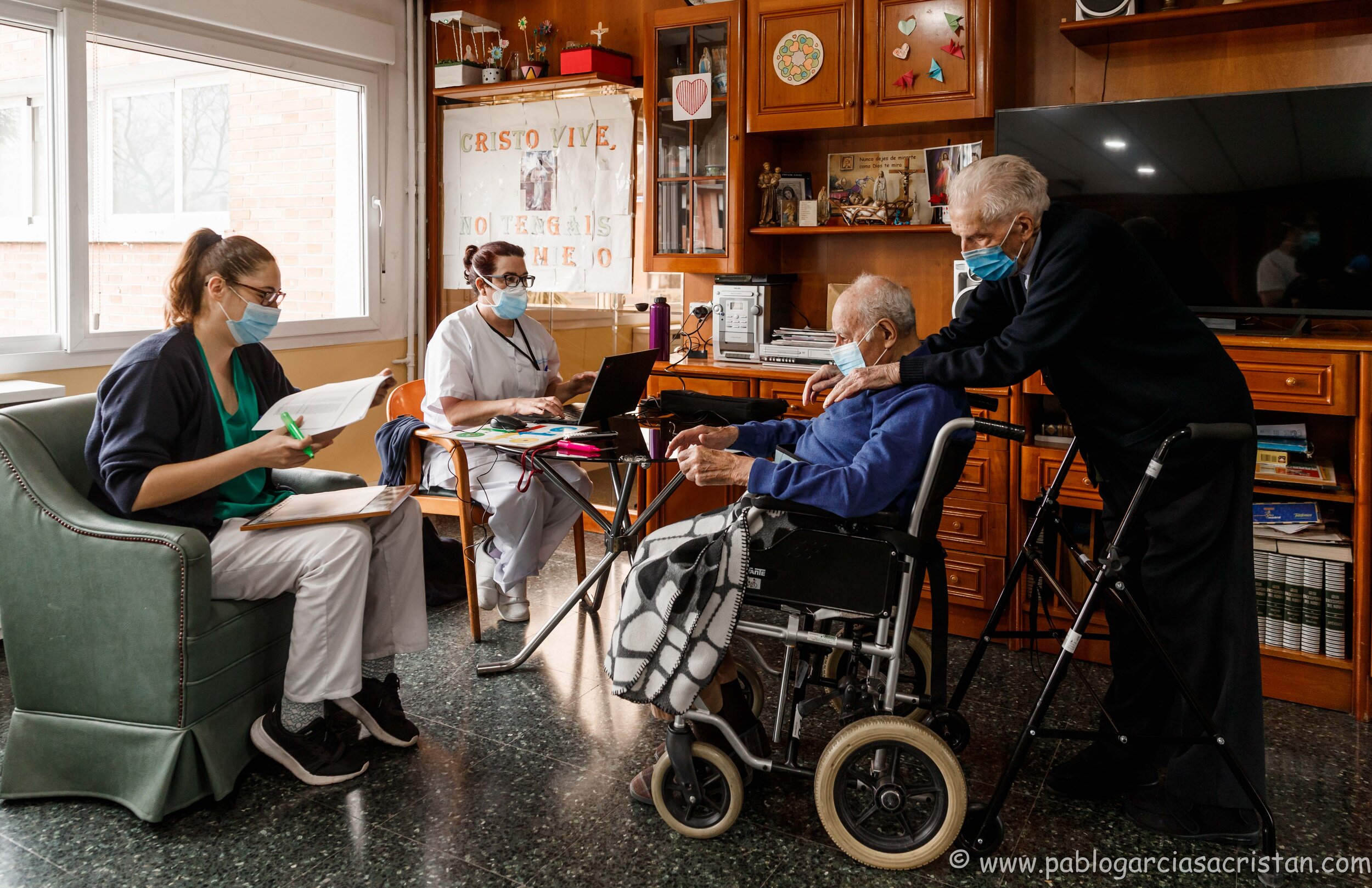
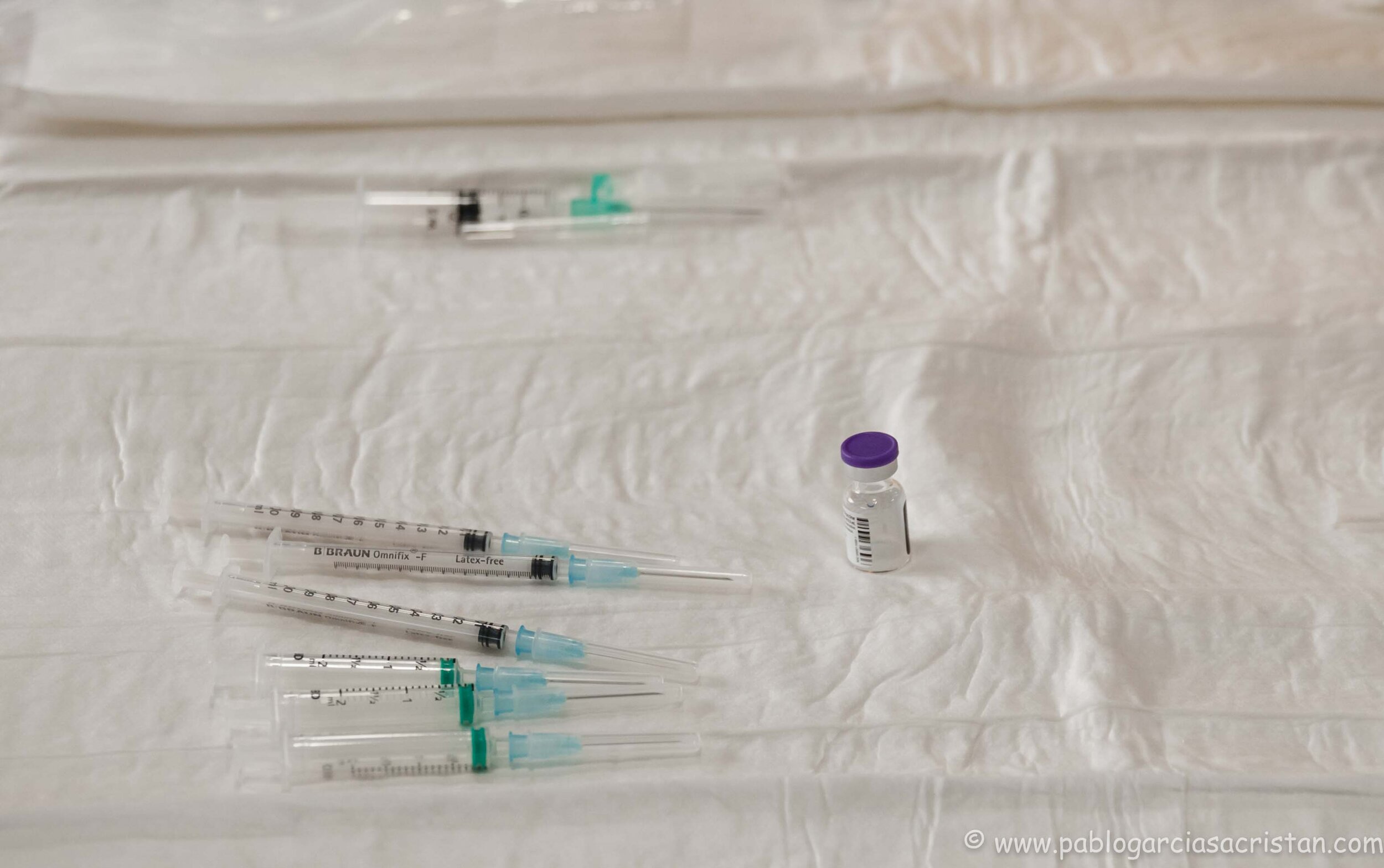
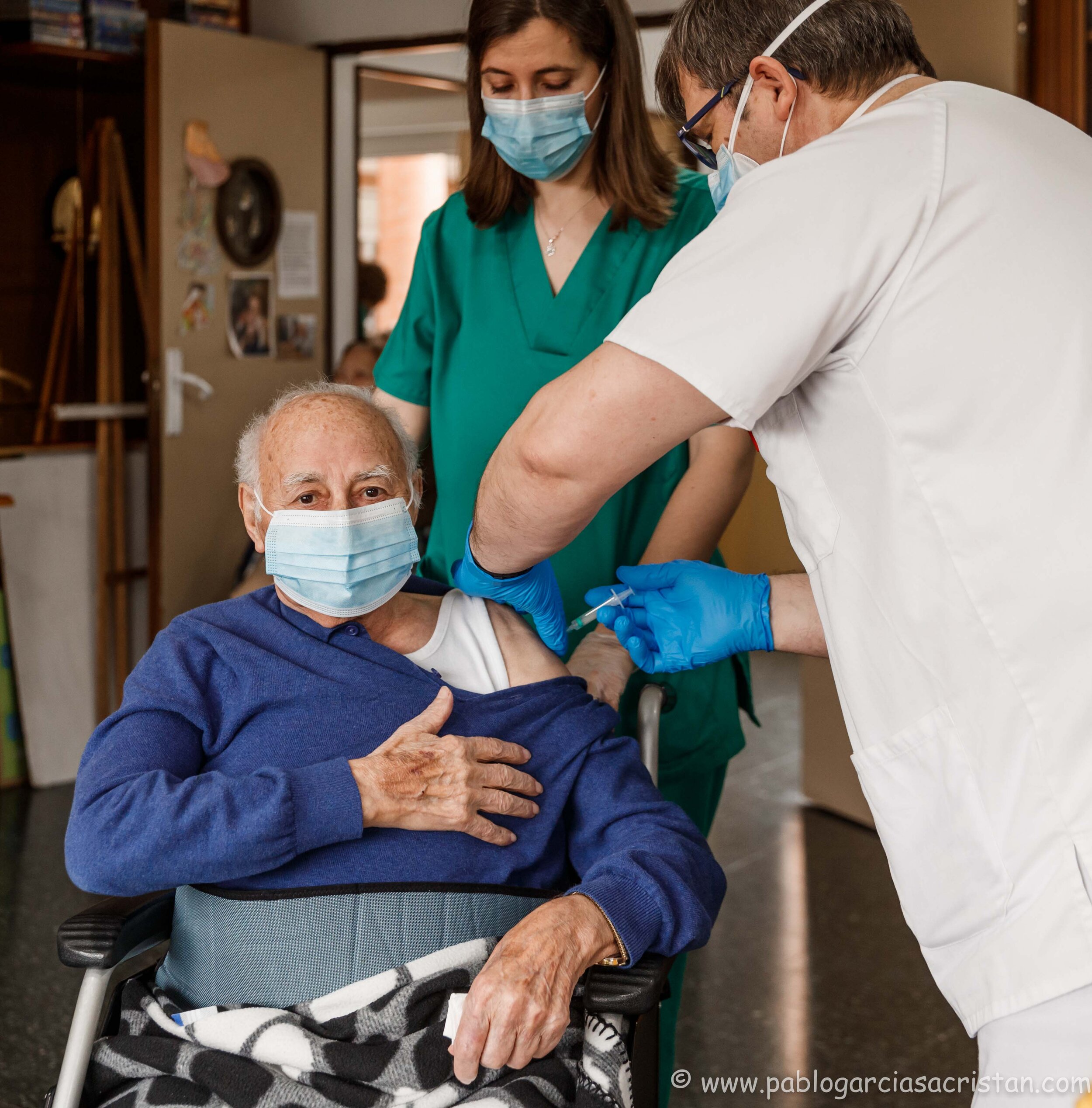
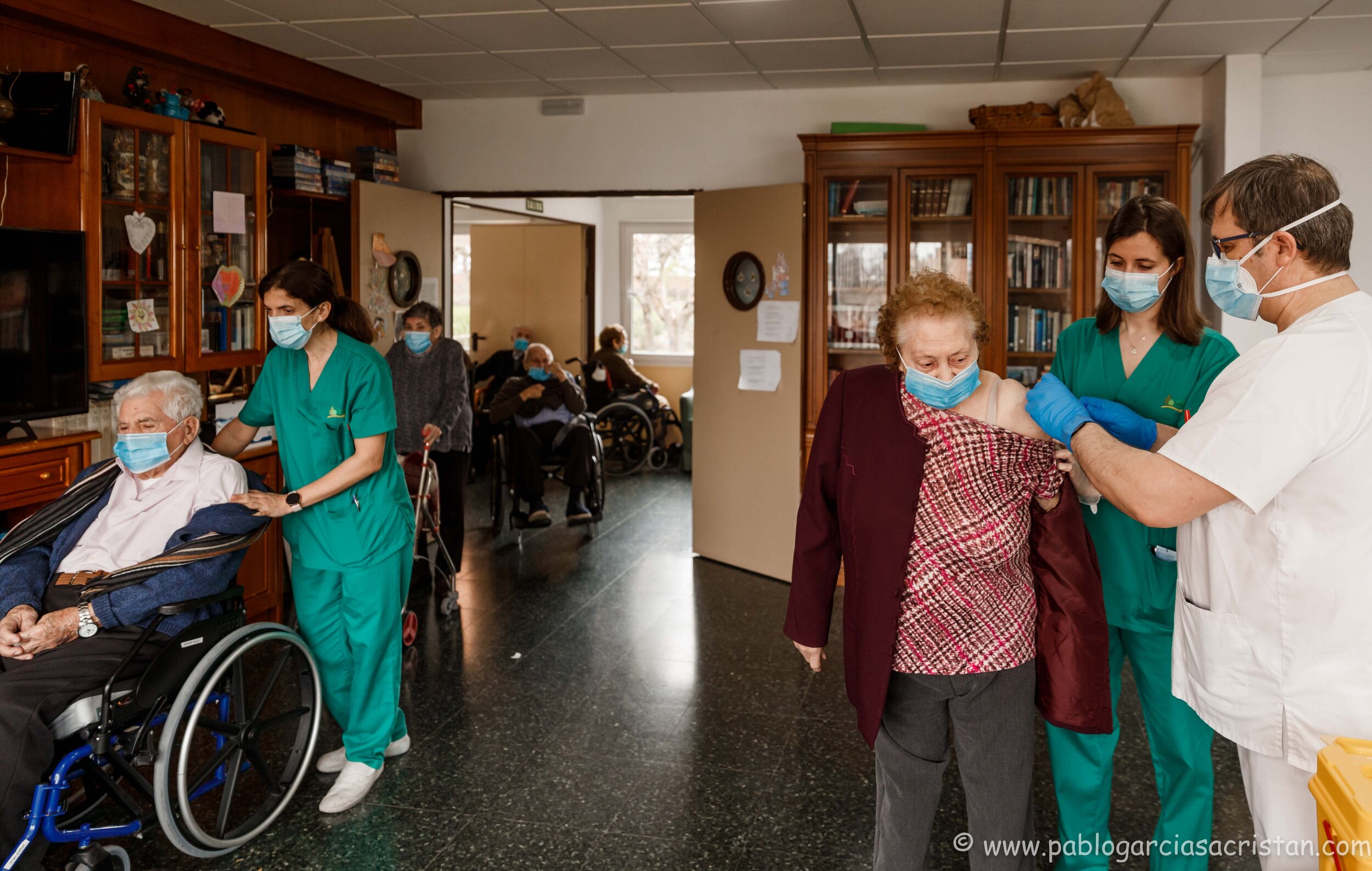
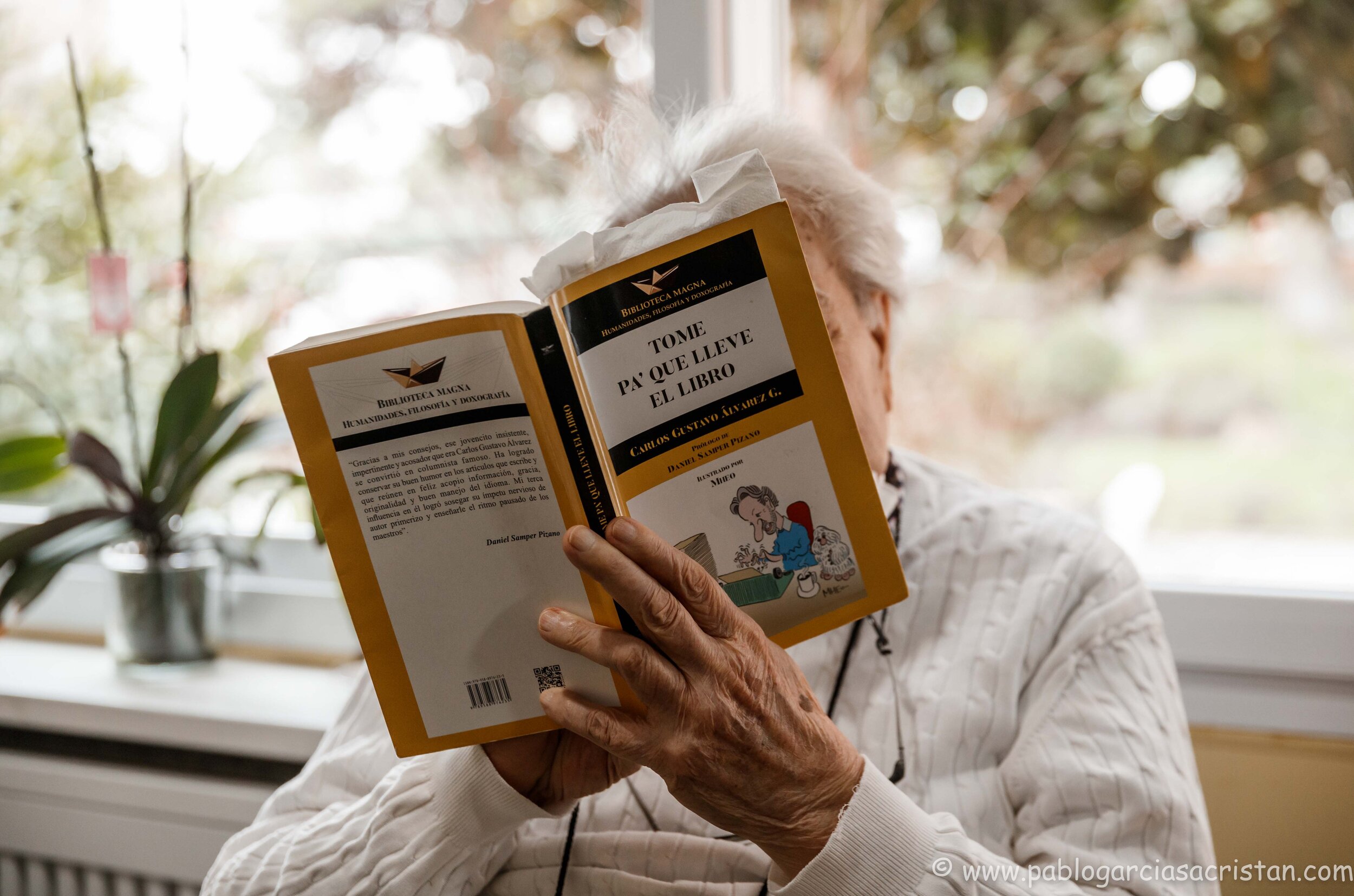
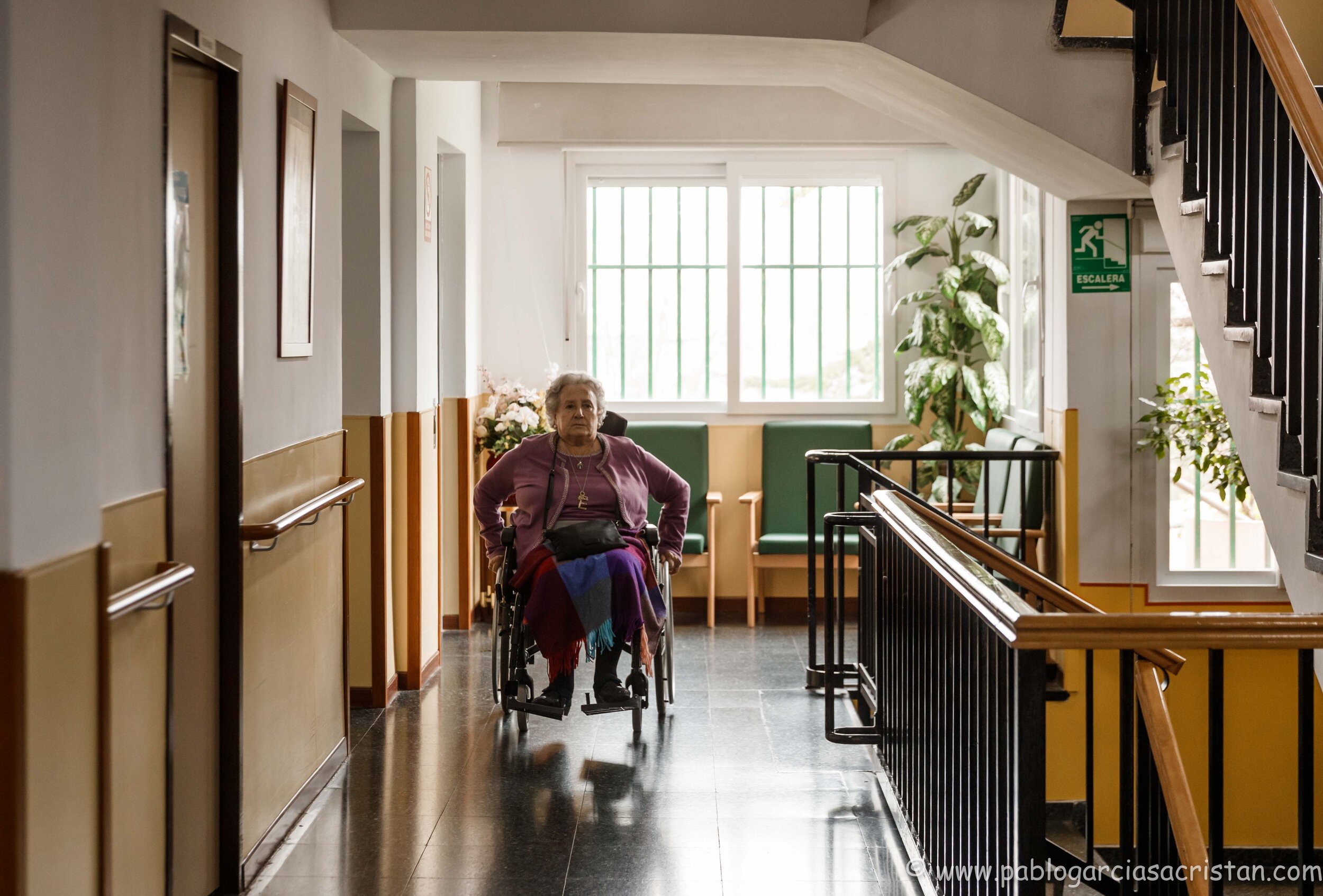
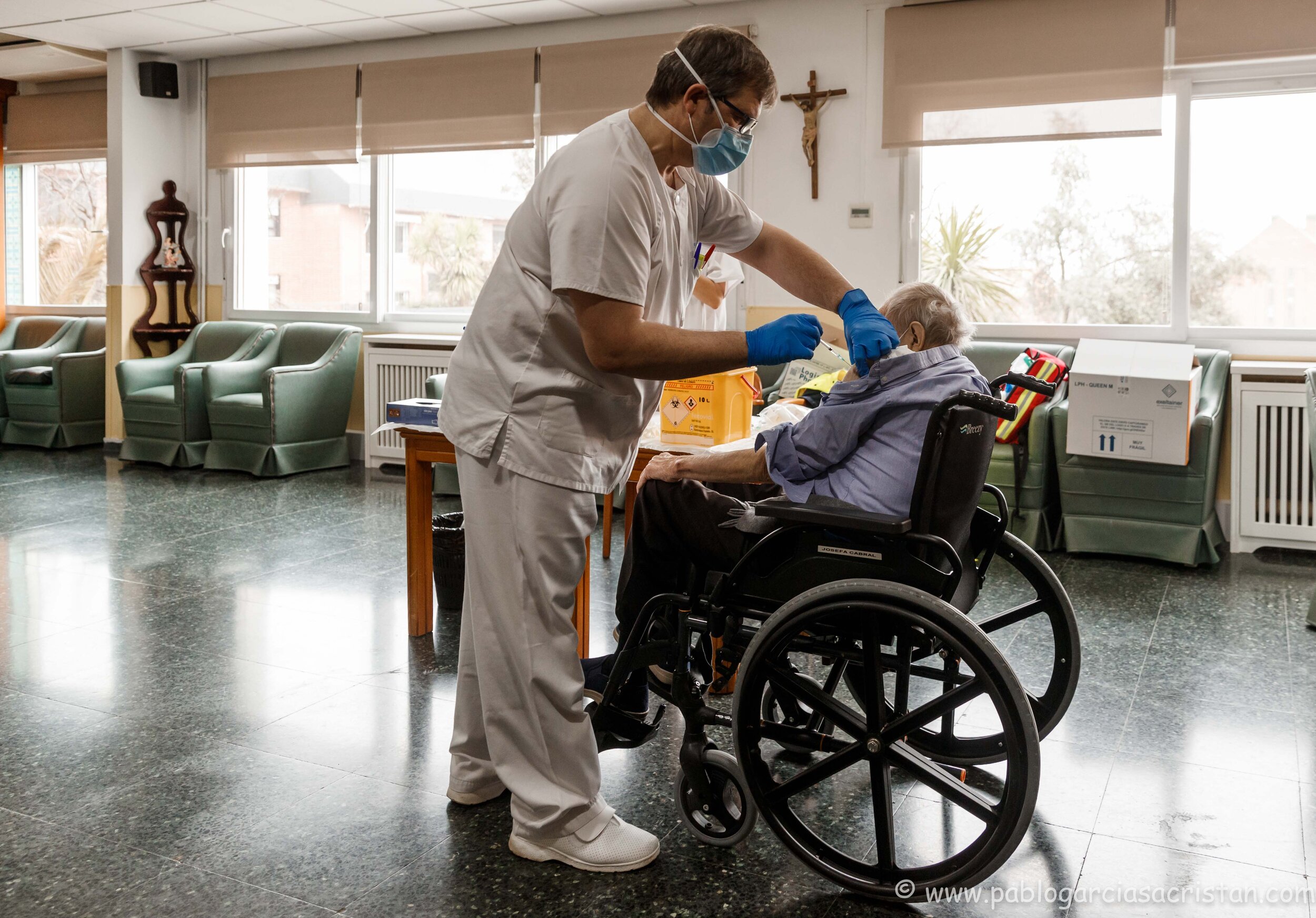
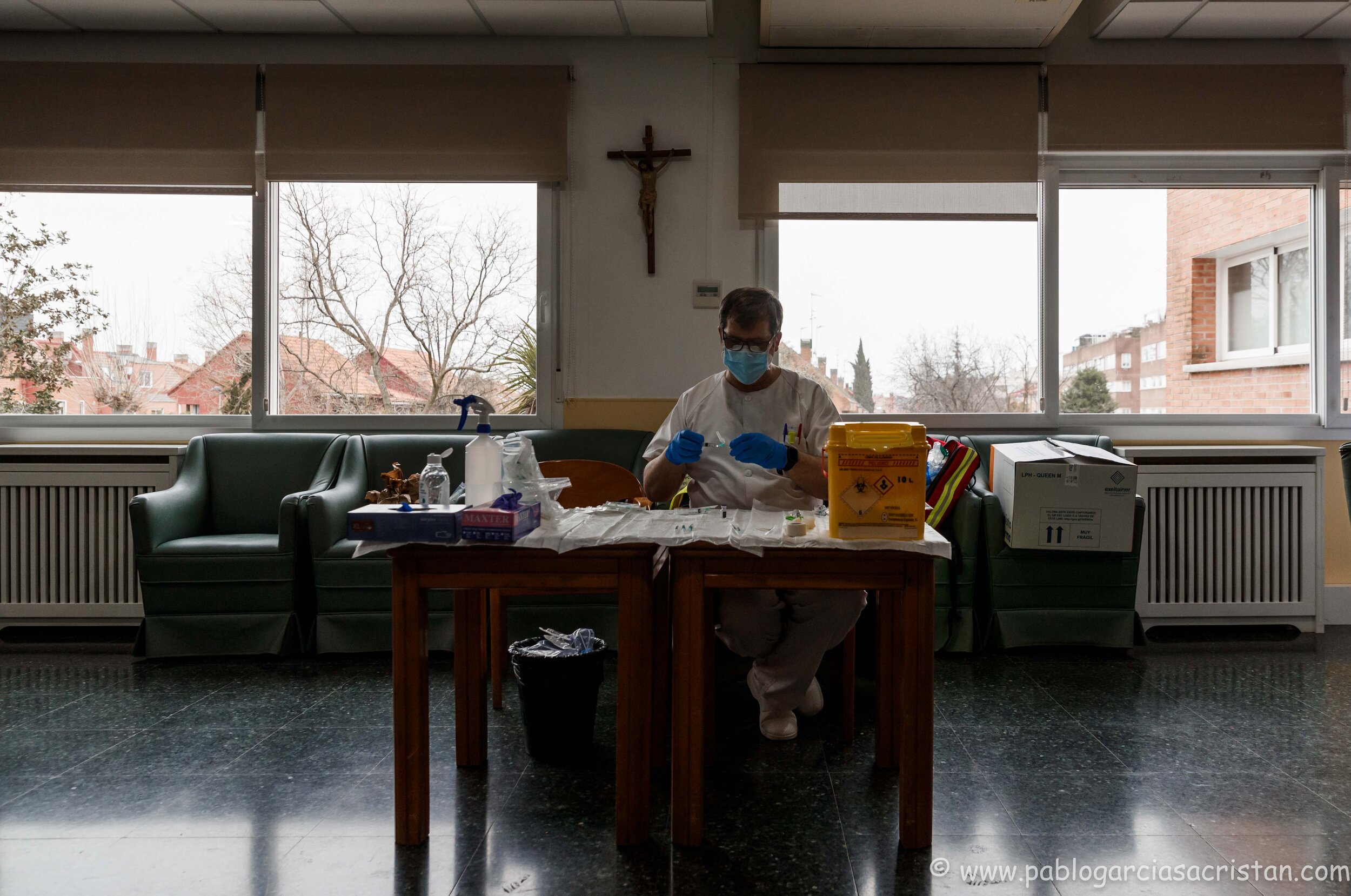
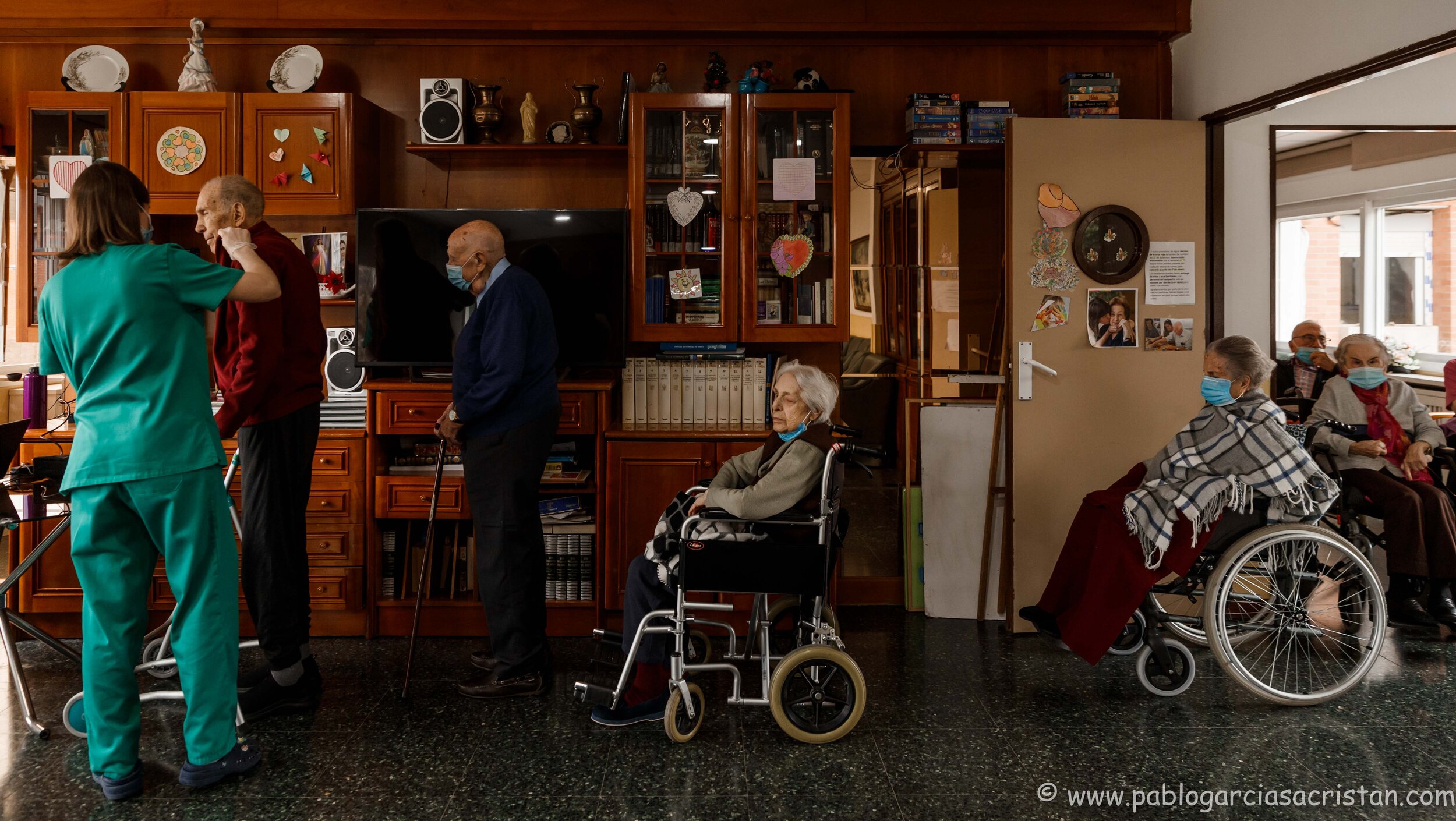
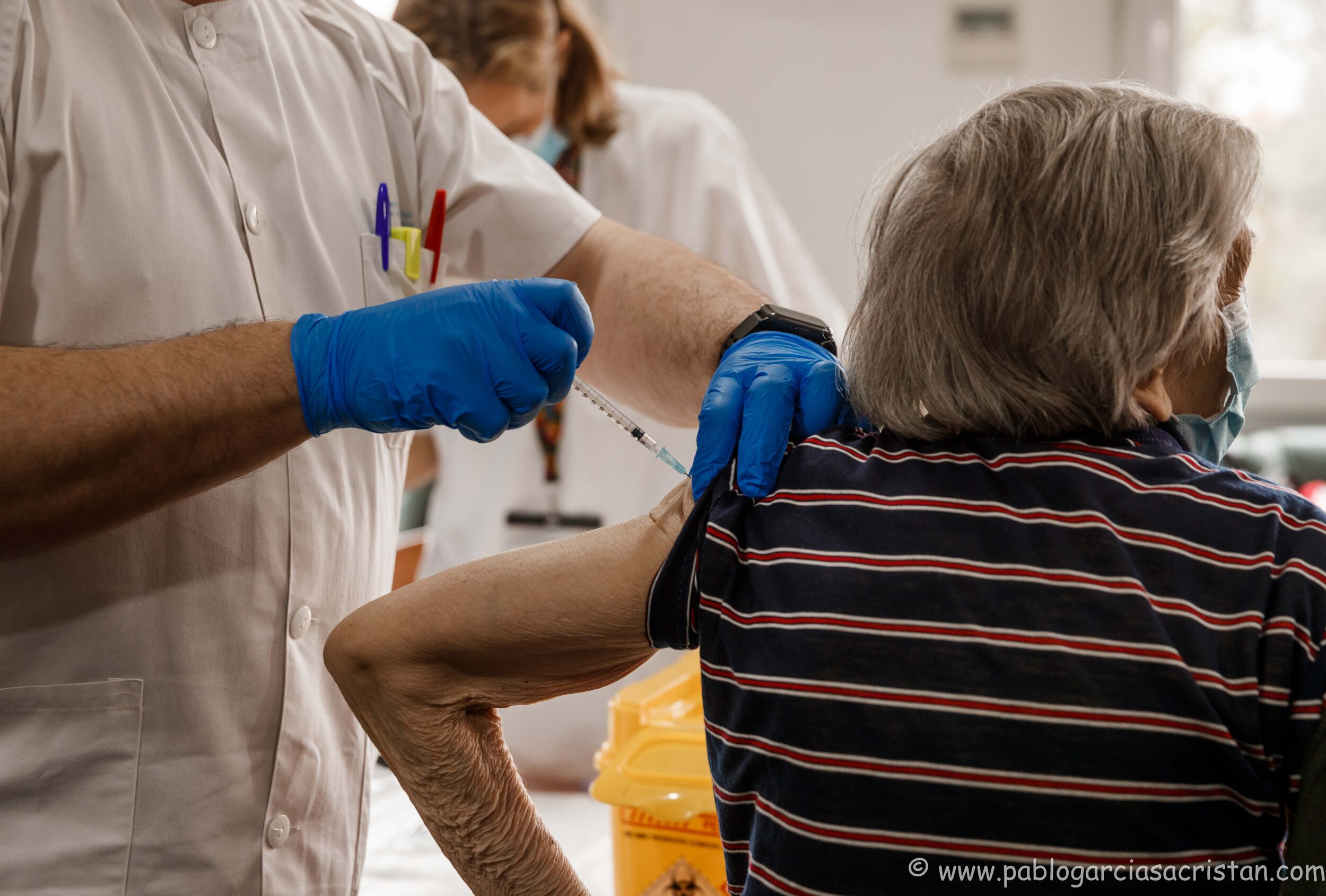
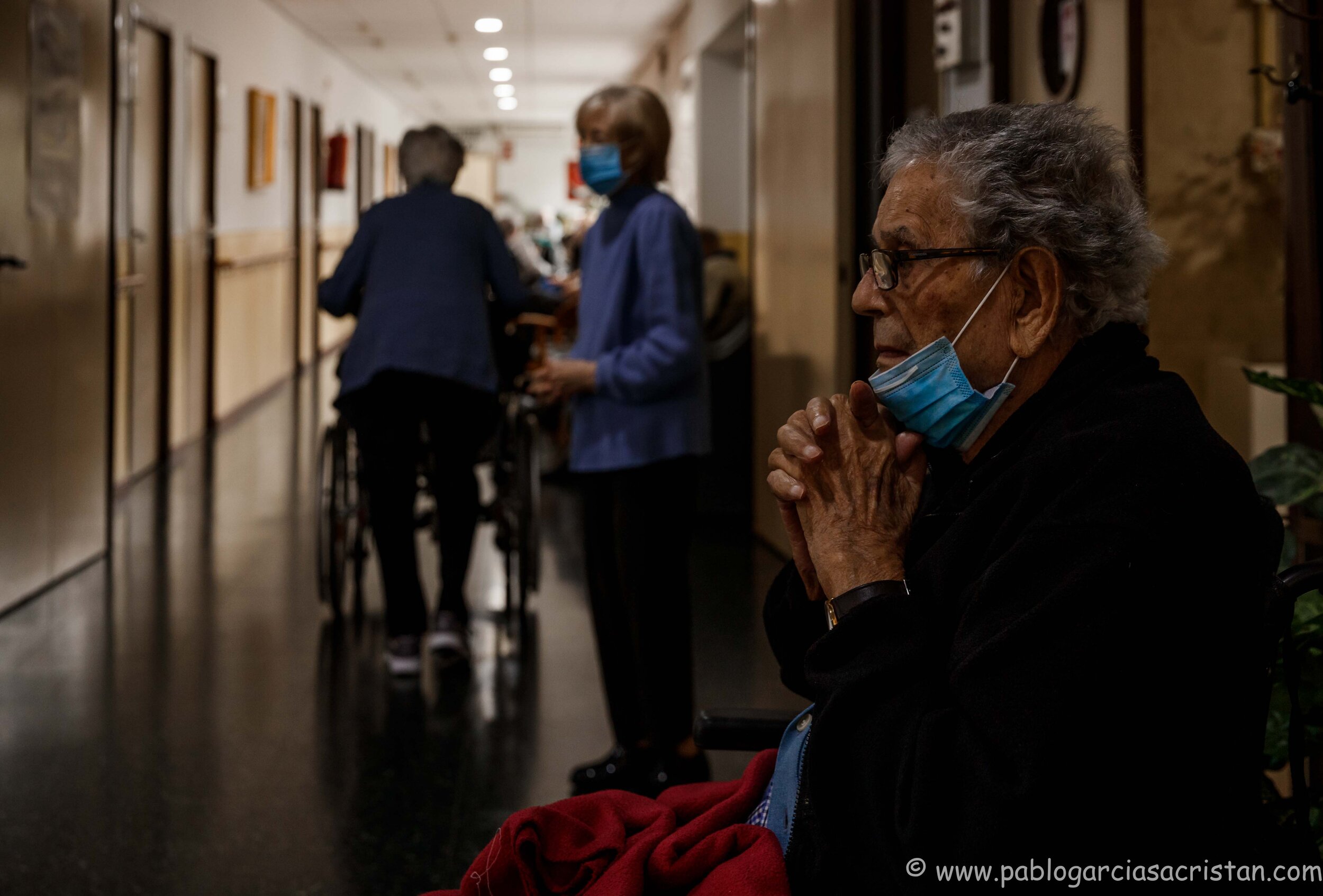

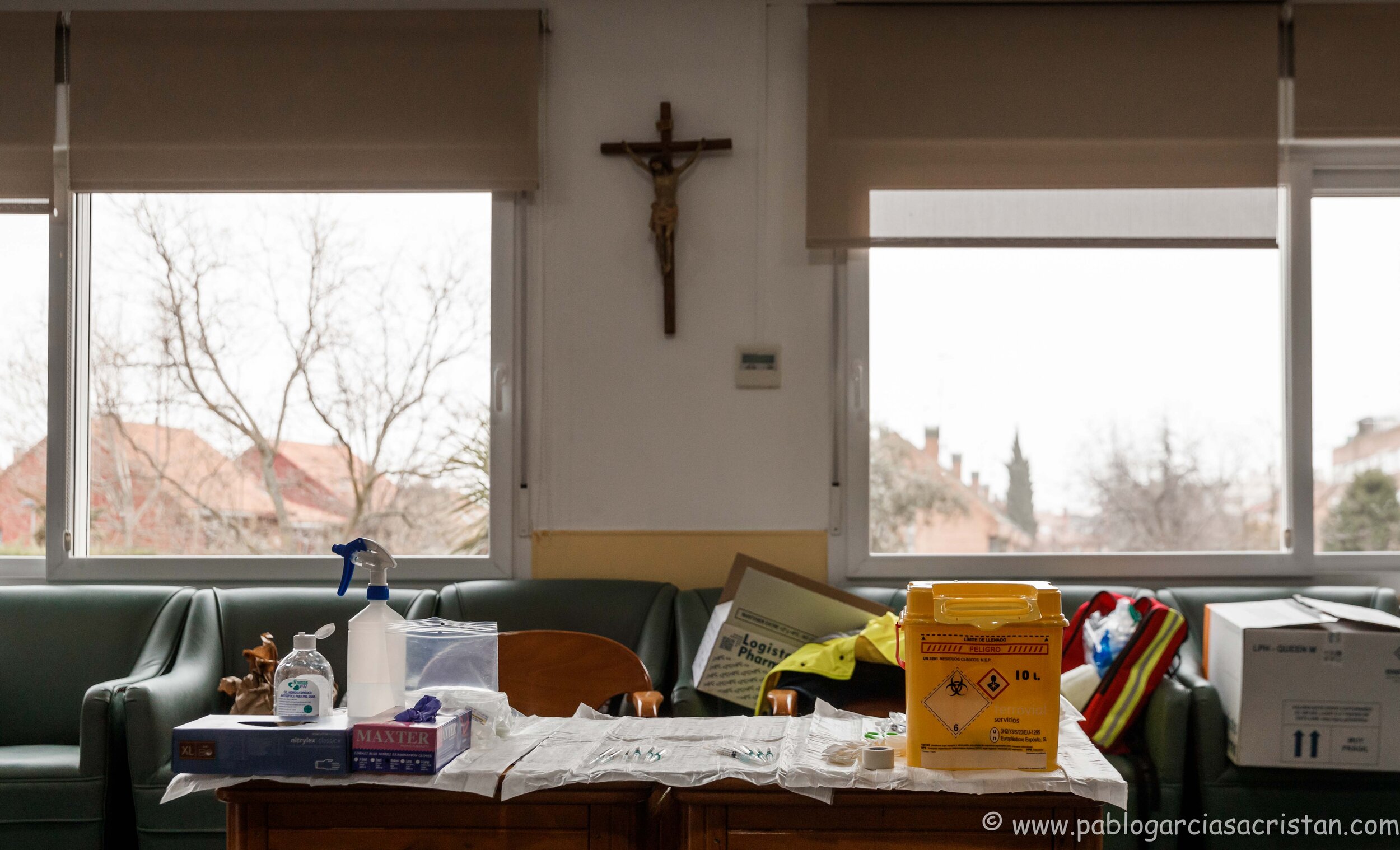
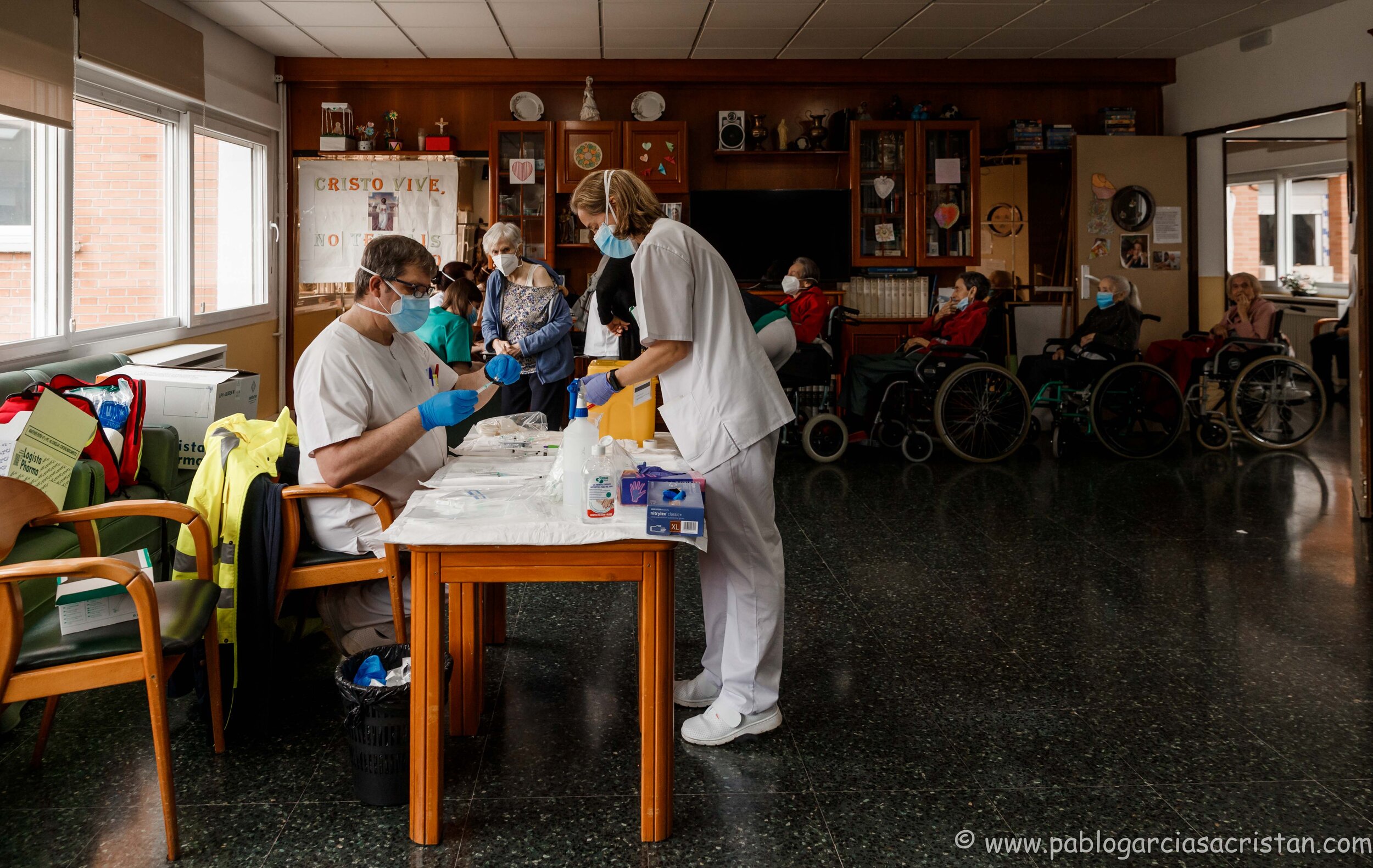

GRACIAS, GRACIAS, GRACIAS
Una palabra repetidamente resuena después de cada pinchazo, “gracias, gracias y gracias” Es la palabra que se escucha sin parar en el salón donde hace más de un año no se juntan ni para ver la televisión y que con la antigua normalidad era la sala de encuentro de los ancianos y sus familiares. Solamente en la noche del 24 de diciembre se pudo habilitar con mucho esmero y distancia de seguridad para que pudieran escuchar a una banda de música tocar los villancicos preferidos y poder celebrar unas navidades muy diferentes a las que normalmente solían celebrarse.
Son las 10 de la mañana, Jose Luis y Nuria llegan puntuales a la cita más esperada de este último año tan duro en la residencia Las Praderas, en Pozuelo de Alarcón, localidad de la provincia de Madrid.
Van cargados con todo el material para poner la segunda dosis de la vacuna Plizzer a 143 personas entre residentes y trabajadores de dicho centro, los nervios de alegría se notan en el lugar donde bajo una cruz preparan con esmero y cuidado dichas dosis para no desaprovechar ninguna de ellas.
“Cada bote da para 6 vacunas, que vamos dosificando sin perder ni una gota, por eso nos turnamos, uno prepara las jeringuillas y el otro las inyecta”
Los primeros que pasan por la vacunación son los trabajadores del turno de la noche anterior para que así puedan marchar a casa a descansar, después ya siguen los residentes que hacen cola pacientemente en el pasillo que lleva a la zona de vacunación, para pasar antes por las compañeras que van haciendo un recuento exhaustivo de quien va pasando a vacunarse y así no tener ningún problema y que nadie se quede sin su dosis.
Jose Luis nos cuenta que “llevamos como equipo desde el 28 de diciembre vacunando en residencias de la comunidad de Madrid y en algún centro sanitario, pero sobre todo en residencias”
Helena, una mujer de 86 años, que se desplaza en silla de ruedas, acude a la cita feliz y emocionada. “Mi nieto que trabaja en un hospital, el Puerta de Hierro, en Majadahonda, sabe usted, me ha dicho por eso que se le ve en las llamadas por teléfono, Skype, una cosa moderna para cuando no pueden venir, que me tengo que vacunar dos veces, esta es la segunda, ya pronto voy a poder verlos a todos, porque ahora solo pueden venir algunos. Estoy muy contenta y luego voy a llamar a mi nieto para decirle que me han vacunado”
Francisca bastón en mano llega andando a ponerse la vacuna, con la duda de si le va a doler el brazo después del pinchazo, porque tiene la comida esperando. Mientras le está preguntando eso, Jose Luís sin parar la maquinaria le inyecta la dosis y le dice “Francisca, ya está, ni lo has notado, ya está usted vacunada” Francisca se coloca la chaqueta, les mira a los dos, les da las gracias, aplaude y marcha a comer.
El día sigue avanzando con la normalidad y la esperanza de poder superar esta pesadilla que tanto ha afectado a las residencias en nuestro país en las que se ha llevado un total de más de 26000 personas a causa del Covid19 o con síntomas que pudieran estar relacionados con ello. Una de las directoras del centro, María Auxiliadora visiblemente afectada recordaba este último año como han sufrido todos por la falta del contacto directo y en persona de las familias, ya que ellos desde febrero empezaron a tomar medidas de prevención y cerraron la residencia a cualquier visita, esas visitas que tanto beneficio les creaba a los ancianos y como han tenido que intentar suplirlo con videollamadas y sobre todo con algo más tradicional y que a los residentes les gustaba más, que eran las cartas manuscritas que los trabajadores del centro les leían detenidamente en cuanto llegaban.
Va finalizando la larguísima jornada de vacunación y dos ancianas en sus respectivas sillas de ruedas se miran emocionadas mientras se marchan de la sala dando otra vez más las gracias a estos dos héroes sin capa que vinieron a vacunarlas.
Pablo García
Madrid, febrero 2021.
THANK YOU THANK YOU THANK YOU
A word repeatedly resounds after each puncture, "thank you, thank you and thank you" It is the word that is heard non-stop in the room where for more than a year they have not met even to watch television and that with the old normality was the room meeting of the elderly and their families. Only on the night of December 24 was it possible to set up with great care and a safe distance so that they could listen to a music band play their favorite Christmas carols and be able to celebrate Christmas very different from those that normally used to be celebrated.
It is 10 in the morning, Jose Luis and Nuria arrive on time for the most anticipated appointment of this last hard year at the Las Praderas residence, in Pozuelo de Alarcón, a town in the province of Madrid.
They are loaded with all the material to give the second dose of the Plizzer vaccine to 143 people among residents and workers of the center, the nerves of joy are noticeable in the place where under a cross they prepare these doses with care and care so as not to waste any of them.
"Each bottle provides 6 vaccines, which we dose without losing a drop, so we take turns, one prepares the syringes and the other injects them"
The first to go through the vaccination are the workers from the previous night's shift so that they can go home to rest, then the residents who wait patiently queue in the corridor that leads to the vaccination area, to pass through the companions who are making an exhaustive count of who is going to be vaccinated and thus not have any problems and that no one is left without their dose.
Jose Luis tells us that "we have been vaccinating as a team since December 28 in residences in the community of Madrid and in some health centers, but above all in residences"
Helena, an 86-year-old woman who travels in a wheelchair, comes to the date happy and excited. “My grandson who works in a hospital, the Puerta de Hierro, in Majadahonda, you know, he told me that is why he is seen on phone calls, Skype, a modern thing for when they cannot come, that I have to vaccinate twice, this is the second, and soon I will be able to see them all, because now only a few can come. I am very happy and then I will call my grandson to tell him that I have been vaccinated "
Francisca with a cane in hand walks to get the vaccine, wondering if her arm will hurt after the puncture, because she has food waiting. While he is asking that, Jose Luís without stopping the machinery injects him the dose and says "Francisca, that's it, you haven't even noticed, you're already vaccinated" Francisca puts on her jacket, looks at the two of them, gives them the Thank you, clap your hands and go to eat.
The day continues to move forward with normality and the hope of being able to overcome this nightmare that has affected both the residences in our country in which a total of more than 26,000 people have been taken because of Covid19 or with symptoms that could be related to it. One of the directors of the center, María Auxiliadora, visibly affected, recalled this last year how they have all suffered due to the lack of direct and in-person contact with the families, since they began to take preventive measures since February and closed the residence to any visit , those visits that created so much benefit for the elderly and how they have had to try to replace it with video calls and above all with something more traditional and that the residents liked the most, which were the handwritten letters that the workers of the center read them carefully in how much they arrived.
The very long day of vaccination is ending and two old women in their respective wheelchairs look at each other excited as they leave the room, thanking these two heroes without capes who came to vaccinate them.
Pablo Garcia
Madrid, February 2021.

